Your source for the latest news on yachts, boats and more. Read through our articles to find out how to compare boats and find the right fit for you!

Catamaran vs. Monohull Fishing Boats - Which is Better
Dec 14, 2023
less than a min
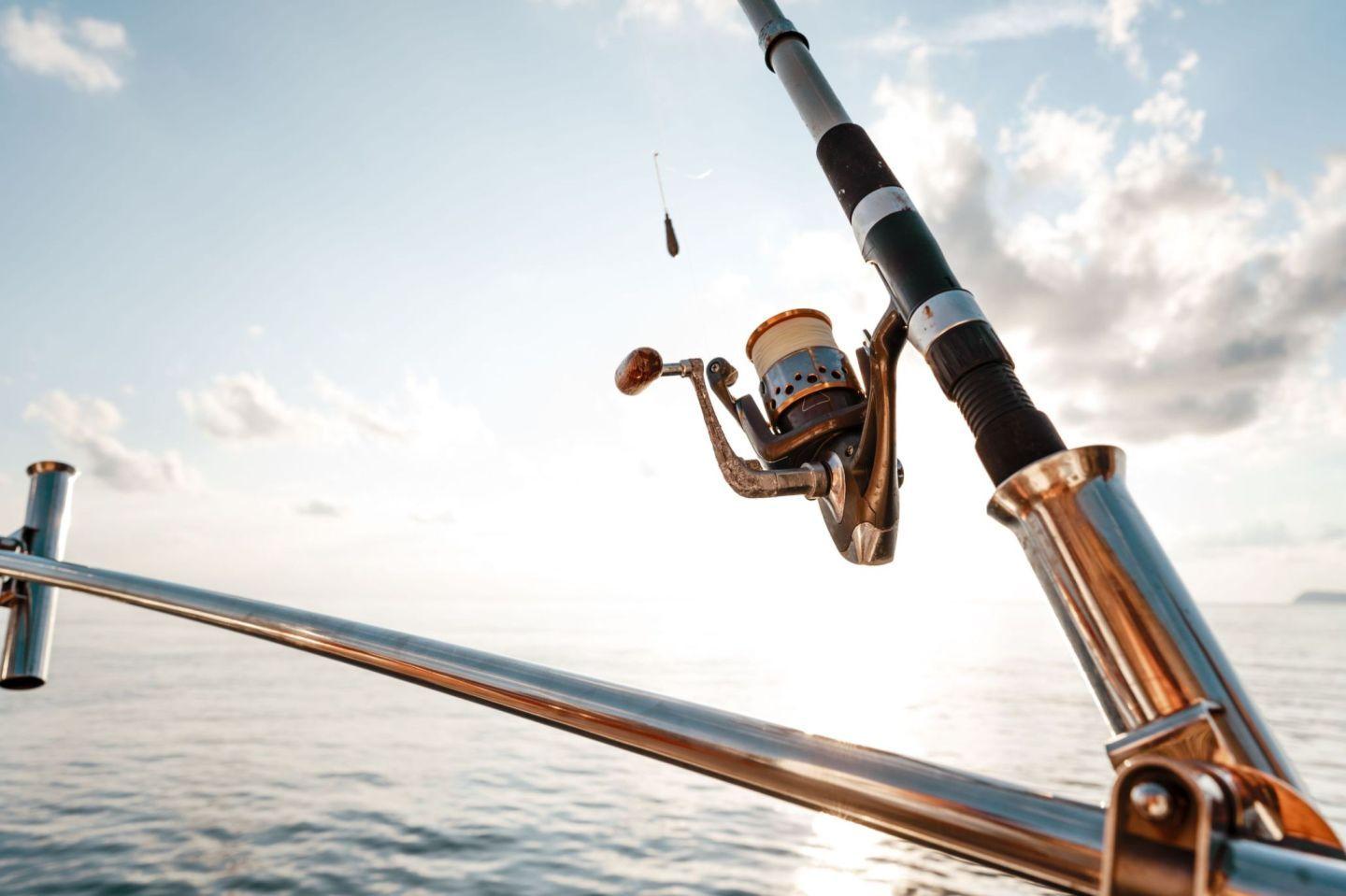
When selecting a fishing boat, anglers face a significant choice that can impact their experience on the water. The type of boat you choose - be it a catamaran or a traditional monohull - plays a pivotal role in defining your fishing adventures. Both catamaran and monohull boats have distinct features and advantages, and understanding these differences is key to finding a vessel that aligns with your fishing style and preferences. Whether you're a seasoned angler or just beginning to navigate the world of fishing, we'll help guide delves into the nuances of catamaran and monohull fishing boats.
Catamaran Fishing Boats: Stability Meets Performance
What are catamaran fishing boats.
Catamaran fishing boats, with their distinctive multihull design, are gaining acclaim among anglers for their exceptional stability and comfort, particularly in challenging sea conditions. The dual-hull structure of these boats not only reduces water resistance, leading to improved fuel efficiency but also ensures a smoother ride. For instance, the "Offshore Fishing Catamarans," which typically range from 20 to 40 feet in length, are equipped with features tailored for serious anglers, including fish boxes, live wells, and rod holders. These boats are adept at handling rough offshore waters, making them ideal for pursuing species like king mackerel or wahoo.
Offshore Fishing Catamarans
Design : Power catamarans , designed for offshore use, are equipped with features like fish boxes, live wells, and rod holders, essential for serious anglers.
Handling Rough Waters : They excel in handling choppy offshore waters, making them suitable for trolling species like king mackerel or wahoo.
Versatility : Not limited to saltwater, they are also effective in large freshwater systems like the Great Lakes.
Comfort for Extended Trips : Many models offer cabins for overnight stays, enhancing their appeal for longer fishing expeditions.
Average Length : 20 to 40 feet
Propulsion : Twin outboard engines
Capacity : 8 to 10 people
Hull Type : Multi-hull
Another notable example is the "Small Fishing Catamaran," averaging between 8 and 14 feet. These smaller variants offer enhanced stability and buoyancy compared to traditional flat-bottom boats and are particularly suitable for shallow water fishing. Their lightweight and easy-to-transport nature, combined with the option for paddle or small outboard motor propulsion, make them a great entry-level choice for new boaters.
Small Fishing Catamaran
Ideal for Beginners : These boats offer an entry-level option with better stability and buoyancy than flat-bottom boats.
Shallow Draft : Their shallow draft allows easy beaching and shore pull-up, ideal for coastal fishing.
Average Length : 8 to 14 feet
Propulsion : Outboard engine or paddle
Capacity : 1 to 3 people
Both types of catamarans exemplify the blend of practical design and angler-centric features, making them a compelling choice for a wide range of fishing activities.
Monohull Fishing Boats: The Traditional Choice
Monohull fishing boats, revered as the traditional choice in the angling world, have long been the backbone of the fishing community. Characterised by their single-hull design, these boats offer a classic approach to fishing, blending time-honoured maritime traditions with modern advancements. Monohulls are known for their straightforward handling and predictable performance, making them a familiar and reliable option for many anglers. Their design allows for deep V-hulls that can cut through waves, offering a smooth ride and a distinct fishing experience.
Advantages of Monohull Fishing Boats
Space Utilisation : Monohulls offer a larger single space below the waterline, allowing for bigger cabins and storage areas.
Roll Period : They have a slower roll period, which means the motion is less abrupt compared to some catamarans.
Predictability : Handling characteristics are more consistent and predictable.
Variety and Resale : There's a broader selection of monohulls available, and they tend to be easier to resell.
Monohull Disadvantages
Stability Issues : They can lean significantly with weight shifts on the deck.
Bowrise and Steering : Monohulls experience noticeable bowrise when coming onto plane and may exhibit bow steering.
Catamaran vs. Monohull: Which is Better for Fishing?
Handling and maneuverability.
Catamarans are highly manoeuvrable due to their dual engines and hulls, offering better control, which is crucial when fishing in tight spots or near structures.
Monohulls have predictable handling, but their performance can vary significantly based on the design and sea conditions.
Space and Amenities
Catamarans provide more living space, making them suitable for extended trips and anglers who prioritise comfort.
Monohulls have more space below the waterline, which can be advantageous for storage and cabin size.
Draft and Accessibility
Catamarans, with their shallow draft, allow access to areas that might be challenging for some monohulls.
Monohulls might have limitations in shallow waters but often perform better in deep sea conditions.
Economy and Maintenance
Catamarans are generally more fuel-efficient, but they may have higher maintenance costs due to their dual systems.
Monohulls are traditionally less expensive to purchase and maintain but might not offer the same fuel efficiency as catamarans.
Tailoring to Your Fishing Style
The decision between a catamaran and a monohull fishing boat should be based on your specific fishing style, preferred locations, and comfort requirements. Catamarans are ideal for anglers seeking stability and comfort in various water conditions, while monohulls are suitable for those who prefer traditional handling and may not require extensive space. Ultimately, the right choice will enhance your fishing experience, ensuring safety, efficiency, and enjoyment on the water. Whether you're drawn to the traditional charm of monohulls or the stability of catamarans, TheBoatDB provides a user-friendly platform to assess each option side-by-side. Visit TheBoatDB to delve deeper into the specifics of each type and discover the boat that perfectly aligns with your fishing style and needs.
You might like these too

Sailboat or Motorboat – Learn the pros and cons
Aug 24, 2022

Which is better a wooden boat or fiberglass boat

Which is the Best Economical Catamaran
Oct 04, 2021

Trimaran Sailboats: Pros and Cons
Sep 22, 2021
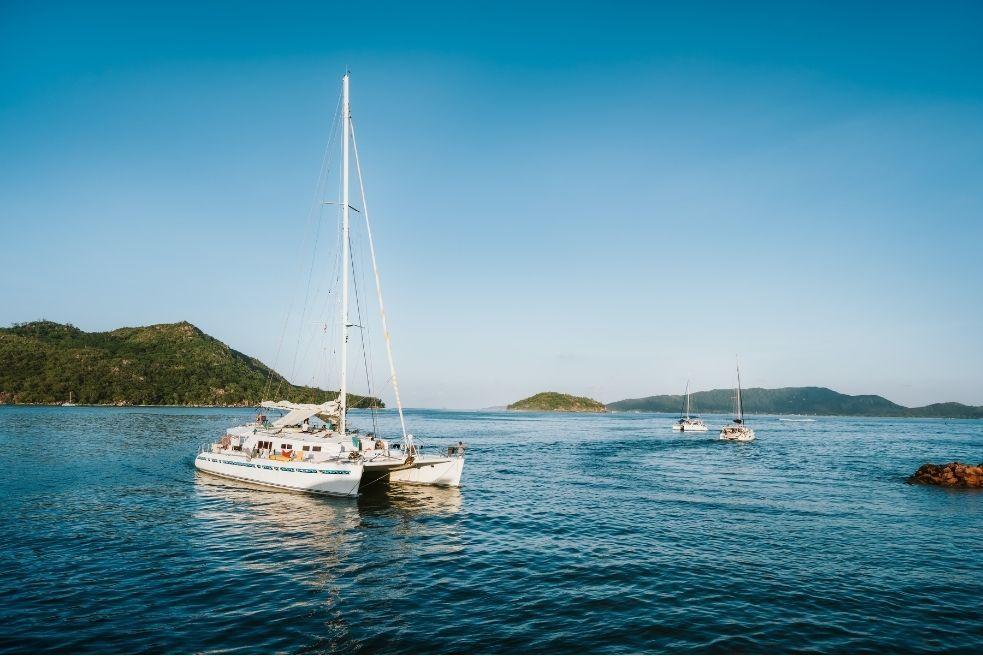
Find Out the Lagoon 42 Catamaran Top Speed
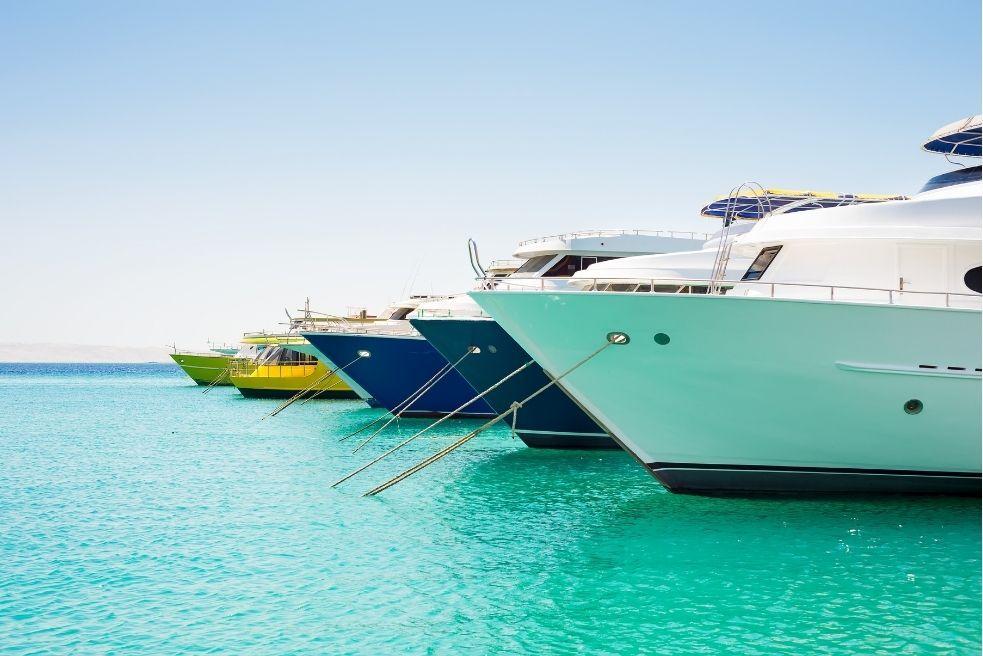
Best Small Boat for Ocean Crossing and Sailing
Sep 16, 2021
- 2024 BOAT BUYERS GUIDE
- Email Newsletters
- Boat of the Year
- 2024 Freshwater Boat and Gear Buyers Guide
- 2024 Boat Buyers Guide
- 2024 Water Sports Boat Buyers Guide
- 2024 Pontoon Boat Buyers Guide
- Cruising Boats
- Pontoon Boats
- Fishing Boats
- Personal Watercraft
- Water Sports
- Boat Walkthroughs
- What To Look For
- Watersports Favorites Spring 2022
- Boating Lab
- Boating Safety
- Ultimate Boating Giveaway

Catamaran Versus Deep-V Monohull
- By Chris Caswell
- Updated: February 26, 2018
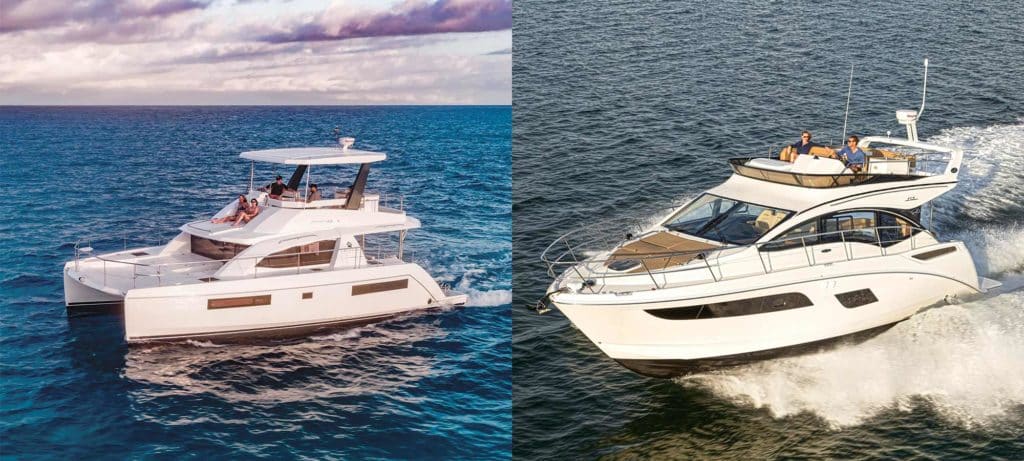
Ever since the Polynesians started crossing oceans on catamarans when much of the “civilized” world was still afraid of the sea, the idea of the twin hull has ebbed and flowed in popularity. For centuries in the Western world, the monohull ruled the seas. At least until 1876, when Nathanael Herreshoff designed a sailing catamaran that was so fast, cats were actually banned from racing for years. Yes, cats are cool. But how do they really stack up against the classic, tried-and-true deep-V monohull?
Let’s look at the strengths and weaknesses of catamaran and monohull boats. We picked two boats of similar length: the Sea Ray Fly 400 (43 feet 6 inches) and the Leopard 43 Power Cat (42 feet 8 inches). The Sea Ray displaces more (30,900 pounds versus 25,794 pounds), but the major difference is beam: The Leopard, carrying 22 feet 1 inch of beam, is nearly 9 feet wider than the Sea Ray (13 feet 6 inches). And that is where many differences between the two start.
Before we go on, we need to provide a disclaimer. We know we’re comparing apples to oranges to some degree, so don’t go sending us angry letters about an unfair comparison. Frankly, it’s sometimes good to compare the taste of oranges and apples. And here’s the thing: We like them both! Both boats ended up with good scores in some areas, lesser in others. We do believe that the concepts that surfaced as a result of comparing these two boats will help cruiser buyers make a more informed decision if the question of cat versus mono arises in their quest for a new boat. That said, let the comparison begin.
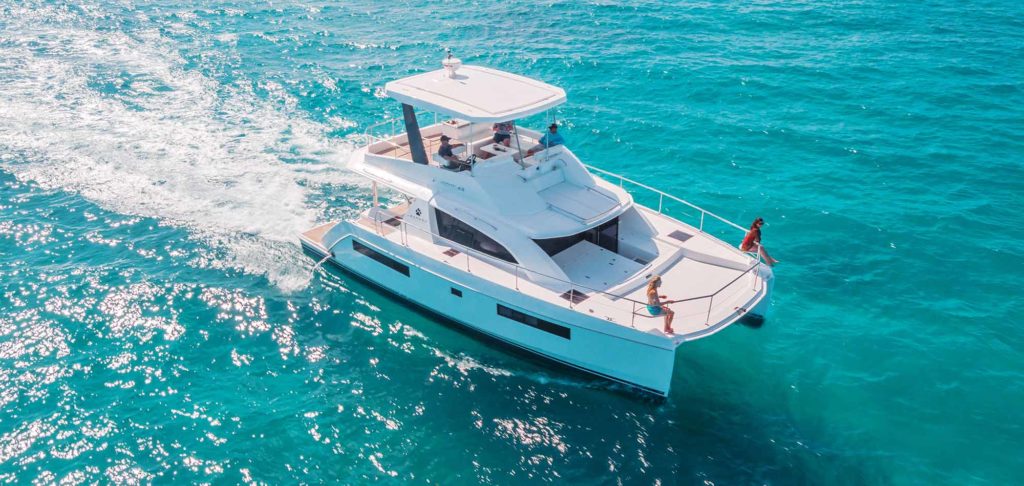
Fast Action: Speed Vs. Efficiency
With 960 hp from twin Cummins diesels, the Sea Ray easily wins in top speed at nearly 34.5 mph compared to the Leopard (27.6 mph), but at a serious cost in fuel. At 20 mph, the Leopard is using just 20 gph, for an even 1 mpg. At the same speed, the Sea Ray is using 32.6 gph, netting 0.5 mpg.
“A strength of the catamaran is that it has such low drag,” says Gino Morelli, the catamaran designer, whose credits range from America’s Cup contenders and Olympic-class cats through power cats for charter use up to a record-setting round-the-world 125-foot cat. “It’s just basic hydrodynamics: Two slim hulls have very low resistance. They push much less water than one wider hull and therefore require smaller engines for increased efficiency.”
The Sea Ray is faster; the Leopard is more efficient. It’s nice to have speed when you want to outrun an approaching squall or get to an anchorage first. On the other hand, you’ll probably spend most of your cruising time at the lower speed more comfortable to your guests.
Our take: Both are winners. It’s your choice.
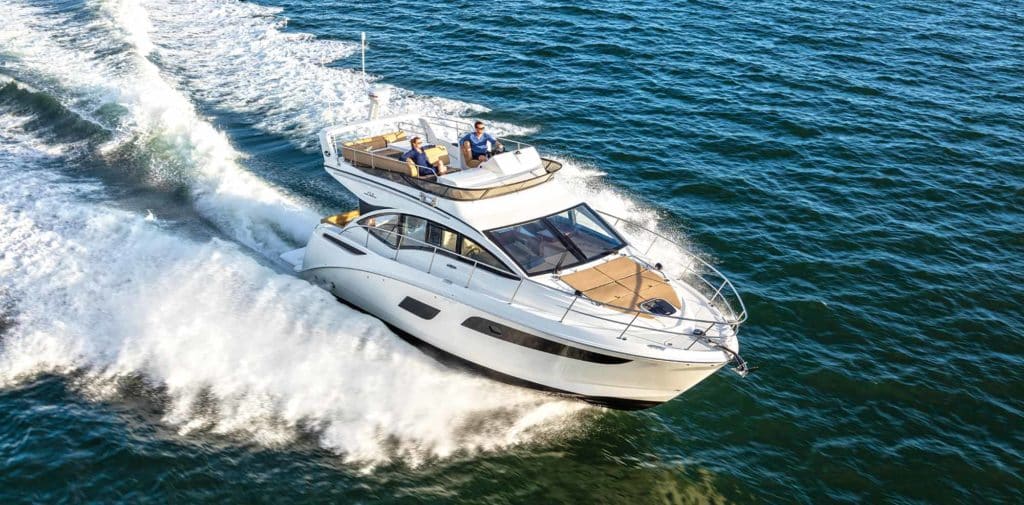
Pain and Gain: Ride Vs. Handling
“Two sharp hulls pound less in a seaway too,” says Morelli. Monohulls, especially cruising monohulls like the Sea Ray, tend to experience bow rise when accelerating, while catamarans remain flat throughout their speed range. It’s generally agreed that catamarans provide a softer ride in a seaway because their knifelike hulls slice the waves rather than crush them, and the motion of a catamaran in waves is more like a cantering horse, which some people like and others don’t. At low speeds in a beam sea, some power cats can have a sharp roll as swells pass under each hull separately, but monohulls also roll considerably, which is why gyrostabilizers and stabilizer fins have become popular aboard monohulls. But the roll moment is different for each, and you may or may not prefer one motion to the other.
In hard turns, catamarans remain flat or even lean outboard somewhat, which can intimidate inexperienced skippers more used to the inboard bank of a monohull. Handling is another factor to consider, and catamarans have both good and bad features. With the engines widely spaced in the two hulls, a catamaran is more maneuverable at slow speed and spins easily by using its engines. A monohull, with the two engines close together, requires more power and technique to spin.
The downside of handling a cat, of course, is the much wider beam: Turning a platform that is more than half as wide as it is long can take planning, especially in narrow channels. Some, but not all, catamarans also have some weird quirks, such as “sneezing” between the hulls when running in some conditons, which sends spray over the bow, and also pounding at times at idle speeds due to air pockets.
Draft is something to keep in mind too, especially if you want to explore shallow waters. The Leopard draws 3 feet 1 inch compared to the Sea Ray at 3 feet 7 inches. The Leopard also has skegs to protect its props, rudders and running gear if you decide to nose up to a beach.
That 22-foot beam has another downside: It doesn’t fit in many marina slips, which means the Leopard is likely to moor on end ties (with more wave motion) or on side ties along a seawall, while the Sea Ray will fit into most any marina slip. Catamaran slips are often more expensive too.
Our take: The catamaran wins for its soft ride in a seaway. The V-hull wins for fitting into a greater number of protected, less-expensive marina slips.
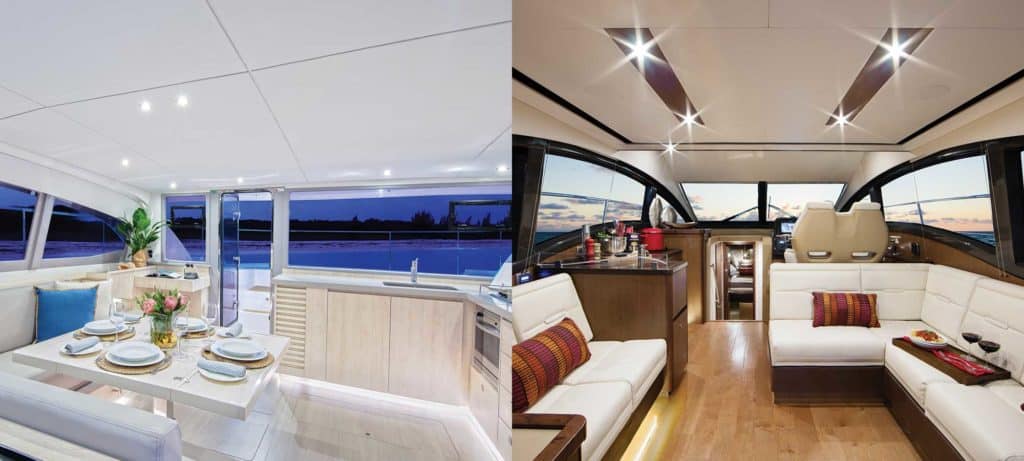
Interior Accommodations – Salon
There’s no getting away from the fact that a 22-foot-wide boat will have more space than one with a 13-foot beam, or so it should seem. But that isn’t quite true. Let’s start with the salon.
Having a 20-something-foot-wide living room is something you don’t find aboard monohulls until you pass the 100-foot length, and this is exactly why catamarans are proving popular with liveaboard owners. In the case of the Leopard, there is a large dinette, a single-seat lower helm station, and a spacious L-shaped galley with counter space measured in acres. Galley gear includes a three-burner gas cooktop with gas oven, and a two-drawer fridge.
The Sea Ray has a doublewide helm station, a pair of facing couches, and a galley aimed more at dining ashore, with limited counter space, a two-burner electric cooktop, microwave and fridge.
While the Leopard salon excels in sheer space (there is room to dance in the salon), it also has one popular feature: a front door. Both boats have sliding doors aft into the cockpit, of course, but the Leopard has an offset door that opens to the foredeck for anchoring or sunning.
Our take: The salon winner is the Leopard catamaran.
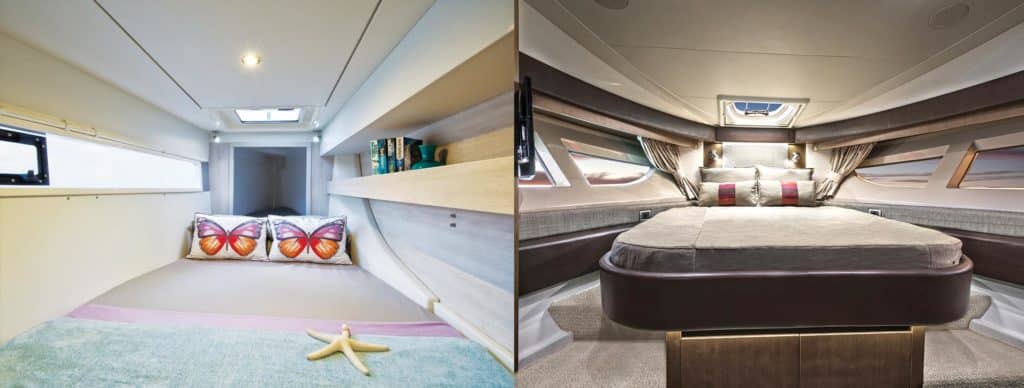
I said “so it should seem” about a wider beam on the Leopard equating to more space, which was true for the salon, but not so much for the staterooms. The Sea Ray has a conventional monohull layout for this length, with the master stateroom forward and a midship cabin under the salon with two berths that can slide together to become a double. The Sea Ray master cabin has a walk-around island queen-size berth, while the midship cabin has limited headroom, but a couch and a separate head are optional.
The Leopard, on the other hand, offers either a four-cabin or a three-cabin owner’s layout. The four-cabin is popular with chartering, placing two cabins in each hull, with a head and stall shower between, while the owner’s version fills the starboard hull with the berth aft and the bow becomes a large head with stall shower.
The shortcomings of the catamaran are the narrow hulls, which limit the width of the cabins. The berths literally fill each cabin, hullside to hullside, making these into less graceful crawl-in berths, and each cabin has limited floor space and stowage.
Our take: We’ll call this even, depending on whether you want more smaller cabins or fewer but more-spacious cabins.

Once again, sheer beam is the determining factor in flybridges. The Leopard has a wraparound dinette, doublewide helm seat, and outdoor galley with barbecue grill and fridge. The Leopard bridge still has ample space for deck chairs or kayaks. A walk-through next to the helm leads to a sun pad on the forward bridge for lounging.
The Sea Ray 400 Fly has a single helm chair and a double companion seat, as well as a dinette and mini galley, but no extra space.
Our take: The Catamaran’s extra width offers a more spacious flying bridge.
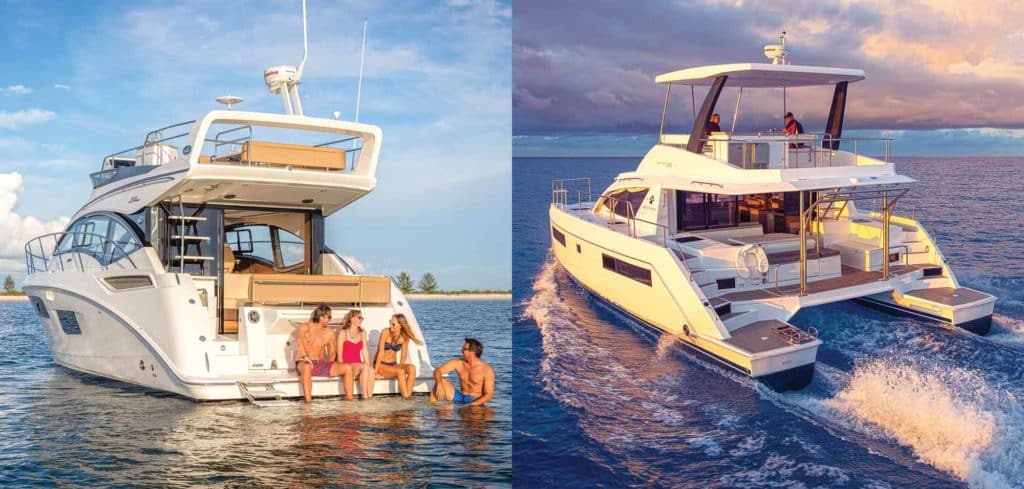
Transom Platform
The Leopard Power Cat has smaller transom platforms, but there are two of them. Leopard created a clever electric davit that can launch or retrieve a tender and provide secure stowage while underway, making tender operations easy. The Sea Ray offers a standard transom platform or an optional hydraulic platform, either of which serves as a terrific “beach” for your crew while at anchor. It can carry up to a 500-pound tender such as a Sea-Doo Spark PWC.
Our take: The monohull’s single wide swim platform is superior for tender handling, swimming and socializing
Fit and Finish
This last item is empirical, and the fact is the two boats are finished to different standards. The Leopard ($459,000 MSRP), like many catamarans, is designed for minimal maintenance for tough charter service, with expanses of fiberglass and Formica-like materials. The Sea Ray ($809,542 MSRP), on the other hand, uses fabrics and finishes that create a more opulent, yachtlike interior.
Engine access on the Sea Ray 400 Fly is good via a gas-lifted cockpit deck, while the Leopard engines are under the berths in the two aft cabins, which rise on gas lifts, but there is some upheaval of two cabins to check the oil. Again, a personal choice: one engine room or two.
Our take: Finish is not strictly a cat or mono attribute. Any boat can be finished to any level, depending upon the builder’s target market.
Catamaran or monohull? Both are right for certain owners and, just like apples and oranges, both taste good for different reasons. Boating ‘s position for decades has been and continues to be: There is no perfect boat, but there is probably a boat that is perfect for you.
- More: Boats , Cruising Boats , Leopard Catamarans , sea ray , versus
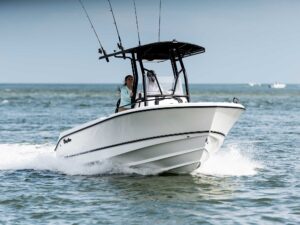
Boat Test: 2024 EdgeWater 208CC Watchman
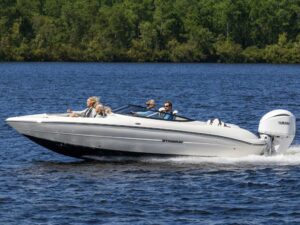
Boat Test: 2024 Stingray 23 OSX
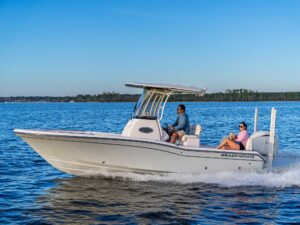
Boat Test: 2024 Grady-White 231 Coastal Explorer
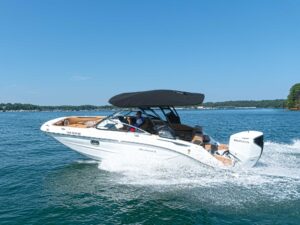
Boat Test: 2024 Hurricane SunDeck 2600 OB
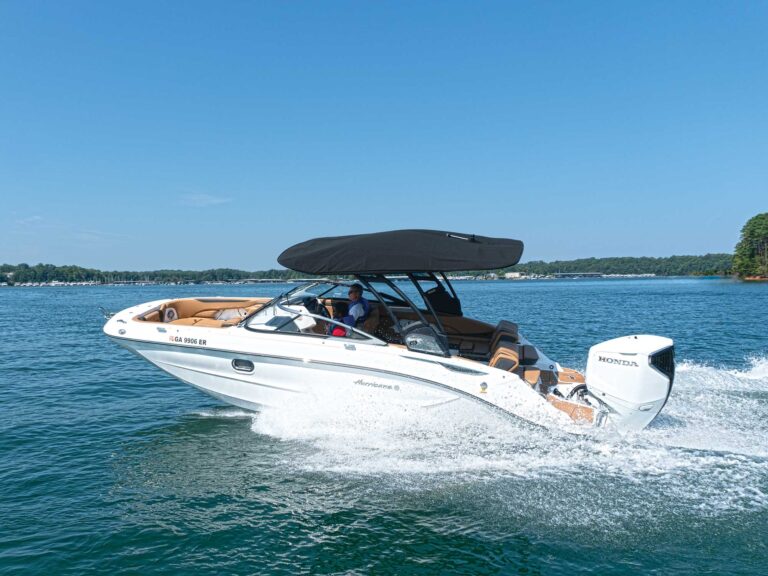
Boat Test: 2024 Brabus Shadow 1200 Sun-Top
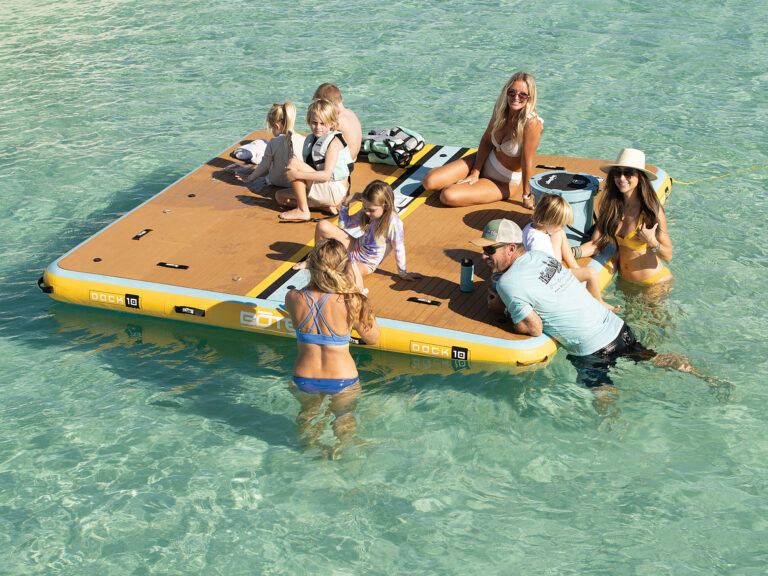
Inflatable Water Mats for Boaters
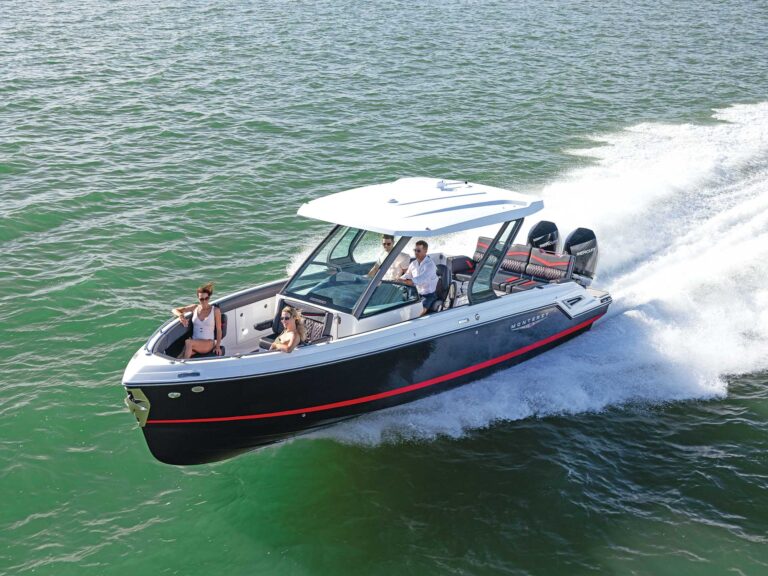
Boat Test: 2024 Monterey Elite 30

- Digital Edition
- Customer Service
- Privacy Policy
- Terms of Use
- Cruising World
- Sailing World
- Salt Water Sportsman
- Sport Fishing
- Wakeboarding
Many products featured on this site were editorially chosen. Boating may receive financial compensation for products purchased through this site.
Copyright © 2024 Boating Firecrown . All rights reserved. Reproduction in whole or in part without permission is prohibited.

Catamaran Or Monohull? 27 Important Facts (Explained)
Catamarans and monohull boats are two very different kinds of vessels. Each craft offers distinct advantages and disadvantages that you’ll want to consider before choosing between the two.
In this post, we’ll go over some of the important things to consider when choosing between catamarans and monohull boats:
Table of Contents
Cost & Availability
Both catamarans and monohull boats come in small recreational sailing versions, larger motorboat versions, and larger sailing models. In all cases, the catamarans will cost more and will be harder to find.
The reason catamarans are harder to find because there are not as many of them, and they’re mostly made overseas.
Also, there aren’t as many catamaran manufacturers, so sailors have fewer options when buying them.
On top of this, catamarans have only recently become popular in the United States and other areas of the developed world. This means the used market for boats doesn’t have as many catamarans on it. You might find that you have fewer options when making a used catamaran purchase, which could bring costs up to a premium.
Two Times The Fun with Catamarans

Another reason that catamarans are more expensive than monohulls is the fact that catamaran buyers have to purchase two hulls, two engines, and two of all of the components that help make an engine work.
Traditional sailboats and large powerboats with one engine don’t have this cost issue.
On top of this, a catamaran is much wider than a monohull, and thus you have more space to build and equip.
On the other hand, once you’ve purchased the boat, you do get to enjoy the benefits of having two of everything. We’ll talk about the advantages of this further down in this post.
Maintenance Cost Makes A Difference
The maintenance on a catamaran is also more expensive than the maintenance on a monohull boat. This goes back to the fact that there is twice as much of everything to maintain.
Catamaran owners will need to do preventative maintenance on two different engines, and they’ll have two hulls and a large deck area to clean and maintain as well. If they’re getting the bottom of the boat treated, they’ll have to do this twice (once for each hull).
Even the interior components can usually be found twice.
Each cabin will usually have a head in it, so you’ll have at least two toilets and sinks to maintain, which obviously has its plusses and minuses.
One positive aspect of this is that catamaran owners do have the option of deferring some of their maintenance. For example, if one head is no longer functioning properly, you always have the second one that you can use.
It also adds a bit of safety as well.
This is because while the catamaran does have two engines to maintain, the owner does have power even if one of the engines happens to go down.
Some catamaran owners also like to point out that maintenance may not have to be done as frequently. This is because the engines don’t have to work quite as hard, and other items like additional bathrooms and sinks might only be used half as much.
How Much Space Do You Need?

A catamaran has more space than a monohull. This is because the boat is wider, and it has a much larger deck area. It also has twice as many hulls, so you have more overall space between the two of them.
The additional space is great for people looking to throw parties on their boats.
Most boat owners would agree that the catamaran is usually the party boat of choice at the docks.
Even if you aren’t into throwing parties, the extra space can still be nice for relaxing on the deck or getting a suntan. The wide-open space also makes it easy to use the boat as a fishing platform.
Additionally, you have more space for stuff like surfboards, rafts, and other items that can easily clutter up the deck of a monohull. Even fishing can be easier from a catamaran as the deck provides plenty of space between different anglers.
Catamaran owners also have additional space for carrying fresh water and adding generators and solar panels.
Interior space is generally more plentiful on a catamaran, and luxury catamarans have an easier time fitting large items like washers and dryers inside of them. You can have these on larger monohulls as well, but it will be harder to make them fit than it is in a catamaran.
On the other hand, all of the additional space means the catamaran owner has more space to maintain and clean. Also, all of the additional items that can be brought onto the boat will make it heavier. A heavier boat will use more fuel, and it will travel more slowly.
Living Quarters Vary Between The Two
The living quarters on a catamaran are much different than they are on a monohull. Most people would agree that the berths in a monohull are much more spacious than in a catamaran.
A monohull offers people the opportunity to have a large bed with space on either side to walk around it. This is great for couples who want to get out of bed without waking up their partner.
Catamarans, on the other hand, have the advantage of being able to offer large above-deck salon areas. The galleys, the dining areas, and the living areas can all be above-deck, while the two hulls can provide heads and berths.
Some boat owners say that living in a monohull is akin to living in a basement apartment . Other boat owners prefer the monohull because it brings them closer to the water and gives them the feeling of being at sea.
Privacy Can Be Prioritized On Catamarans
A catamaran offers up many different living areas that people can take advantage of. For example, each hull will typically have its own bathroom and bedroom.
This gives each sleeping area complete privacy from the other.
The living quarters are usually up on the deck, so early risers can wake up and move to these quarters without waking up the others.
The same holds for night owls. A night owl can stay up late without bothering the people who want to retire to their beds earlier.
With two hulls, large catamaran owners can hire a crew and give them their own hull to live in so that there is separation between the cruisers and the crew. This is a wonderful advantage for honeymooners looking to have their own space.
The downside to all of this, of course, is that sometimes a family may not want the additional privacy. For example, a family with small children might not want their children in a different hull than they are.
Additionally, the extra privacy can make it hard for people on the boat to communicate. This could become a big problem in the event of an emergency.
For this reason, it is often recommended that each hull have a radio in it so that the occupants can quickly communicate with each other. Remember, even in inland areas, cell phone reception may not be very good inside the boat hulls.
Recreation In a Monohull vs. a Catamaran
Most sailors agree that sailing a monohull boat is much more exhilarating than sailing a catamaran. Traditional sailboats heel, and sailors get instant feedback while they’re sailing. For the most part, catamarans stay stable, and you don’t get the same feeling with the movement of the wind and the water.
When it comes to monohull powerboats, you have the advantage of being able to pull water skiers, kneeboarders, and tubers with ease, as long as the boat has the power and a planing hull. A power catamaran usually doesn’t have the speed or maneuverability to pull off these recreational opportunities because they are displacement hull designs.
Catamarans excel in more leisurely recreational activities. A catamaran makes a great party deck as well as a great cruising deck. Catamaran owners can comfortably walk around a catamaran without having to worry that the boat might knock them over the next time it decides to heel. This allows boaters to sit and talk with one another comfortably.
A catamaran can also be used as a beaching vessel. This makes it a great platform for people looking to go swimming or fishing around sand bars and other shallow water areas. It also makes it a great boat for sailors looking to sail a larger boat on a river or lake known for having shallow areas.
Swimming and Diving
Swimming and diving off of a catamaran are usually much easier than doing the same from a monohull. The wide stance of the two hulls offers boat designers the option to put in staircases at the back of both hulls.
In between these staircases, some boats will have an additional diving platform and/or a dedicated frame for pieces of equipment and dinghy storage. This makes catamarans great for swimmers, snorkelers, and divers.
On the other hand, modern monohull sailboats can also have good transom stairs for easy access to the dinghy and swimming. Both types of boats can easily travel far out to sea, giving boaters the option of diving in areas that can’t be accessed from beaches and developed areas.
Boat Draft In Shallow Waters
For the uninitiated, the boat’s draft refers to how deep the boat’s hull sits within the water.
A monohull typically sits deep within the water, while a catamaran sits much higher on the water. This is why we stated that a catamaran is good for shallow waters.
The advantage of having a boat that can go into shallow waters isn’t restricted to just recreational activities like swimming and fishing. A boat that can go into shallow water is safer to operate in areas where a boat with a deeper draft might become damaged.
Additionally, a catamaran has more stability on calm waters. This helps make a catamaran more comfortable to relax or sleep on while at anchor or the dock.
The deeper draft of a monohull boat has its advantages as well. A deeper draft provides more stability in rough waters and allows a boat to go further into the sea.
For this reason, many coastal cruisers will prefer catamarans, while many ocean voyagers will prefer monohull boats. In fact, some areas of the Caribbean and the Florida Keys can be off-limits to boats with deep drafts as it simply isn’t safe for the boat to navigate these waters.
This isn’t to say that you can’t navigate these waters in a monohull boat, but you will have to be cautious depending on how deep your monohull’s boat draft is. You wouldn’t have this issue in a catamaran.
Stability On The Sea

A catamaran offers a lot more stability in shallow waters, in calm waters, at the dock, and anchorage. This makes the boat great for cruising and for relaxing in port.
A monohull offers a lot more stability in rough waters.
This makes this boat great for heading out to sea and for navigating vast distances.
Safety Issues To Consider
Both catamarans and monohulls can be built to navigate the waters they were made for safely. This will be determined more by the boat’s category designation rather than the type of boat.
However, each boat deals with unsafe situations in different ways. For instance, a monohull boat is likely to right itself if it is capsized.
This means that even in rough seas, you’re unlikely to find yourself permanently capsized.
The downside to this is that should you become completely swamped from a capsize in a monohull boat, you are much more likely to sink. In fact, if there is a hull breach on a monohull boat, your boat could sink.
Catamarans are said to be unsinkable. This isn’t completely true, but it is very unlikely that a catamaran will sink. Even if a hull is breached, you still have a second hull to keep the catamaran afloat.
However, a catamaran can’t right itself. If you capsize your catamaran, it will stay capsized.
One other safety concern to consider is that a monohull sailboat will heel while a catamaran will not. This increases the chances that someone could fall off the boat or onto the deck in a monohull boat.
Catamarans Are Faster Than Monohull Boats
A catamaran is faster than the average monohull boat.
This is because they face less water resistance, and their narrow hulls don’t have to deal with their own bow waves as a monohull does.
Of course, catamarans aren’t always faster. Old cruising catamarans may not go faster than 8 knots, and modern monohulls can exceed 10 knots.
Monohull boats tend to sail downwind and in choppy seas better than catamarans. This gives them a speed advantage during ocean voyages.
We have a separate post with complete average speeds per type of catemaran . It’s a must read if you are at all concerned about speed!
Fuel Consumption Considerations
Catamarans have two engines to burn fuel, which can drive up fuel costs.
However, a catamaran is lighter on the water, so it usually takes less energy to move a catamaran. This means you’ll end up using less fuel in a catamaran than you would in a monohull.
On top of this, catamarans can decide to use just one engine in low wind areas. This further decreases the amount of fuel that a catamaran consumes.
These rules only apply to calm waters.
A monohull navigates waters with high waves and strong winds much more efficiently than a catamaran. In this case, you’ll use less fuel in a monohull than you would in a catamaran.
Sailing Differences To Notice
Sailing a monohull boat can be exhilarating. These boats can glide through choppy waters, and you get to feel the motion of the boat as the sea rushes by the cockpit and the wind causes you to heel.
This type of sailing also provides instant feedback as you’ll know what you need to do with the sails as you’ll feel what is going on through the boat’s motion.
Sailors all over the world have been using monohull sailboats for years, and you’ll find plenty of outlets for recreational sailing with a monohull sailboat.
Sailing catamarans do not heel like a monohull sailboat.
These boats, therefore, do not provide the sailor with instant feedback. Also, if you incorrectly sail a catamaran, you do risk capsizing the boat more easily.
Training Can Be Quite Hard
Sailing a catamaran and sailing a monohull boat are two different experiences. People looking to sail either should probably get professional training.
Obtaining this training will always be easier with a monohull boat.
This is because monohulls are more popular, so you’ll have more instructors available to you.
Do You (Or Your Friends) Get Seasick?
People who are prone to getting seasick easily might want to consider a catamaran. A catamaran provides much more stability in calm waters, and you get a lot less movement.
On the other hand, people who are not prone to getting seasick might prefer a monohull in choppy waters.
This is because a monohull will deal with deep and choppy waters with high waves much better than a catamaran will.
As a result, a catamarans movement can seem extreme under these types of conditions. People who have never gotten seasick before can end up sick under these conditions.
Here’s a separate article we wrote with everything you should know about seasickness on Catamarans . There are some things you can do and some things you should know!
Docking Is (Usually) Easier With A Monohull Boat
Docking a catamaran can be a difficult endeavor.
This is because catamarans are often too wide to be docked within the slips located in central areas of a marina.
Because of this, they need to be docked at the end of the dock. This leaves them with fewer spots to dock. It also makes docking more expensive.
Catamaran owners traveling through areas that are unlikely to have many catamarans in them may find it difficult to find a dock at all. This is true in areas of the northern Atlantic where monohulls are much more popular than catamarans.
Storage Issues To Consider
Even storing a catamaran can be more difficult. This is because storage facilities often do not have the equipment to get a catamaran out of the water.
The wide width of these boats requires special lifts, and not all boat marinas will have them.
Storage facilities that do get the catamaran out of the water will often charge more money for it. They’ll charge additional fees for taking the catamaran out of the water, and they’ll charge additional fees for the actual storage of the boat as well.
Redundancy And Backup Equipment
We touched upon this earlier, but it is worth repeating that catamarans have many redundancy built into them. This can be a big advantage when it comes to safety.
For example, if one rudder becomes inoperable, the boat can still be steered with the other one. If one engine becomes inoperable, the boat can still be driven with the other one.
In extreme cases, a hull could become damaged, and you could still stay afloat because the other hull will keep the boat safely above water. These safety advantages can save lives and keep people from becoming stranded out at sea.
The primary downside is the maintenance issue that we mentioned earlier. All of these redundant components will need to be maintained. As a result, maintenance costs will be close to twice as expensive in a catamaran.
Cooking Is Easier On Catamarans

Cooking on a catamaran is usually easier than it is on a monohull. The main reason for this is that a catamaran doesn’t heel like a monohull, so you don’t have to worry as much about things falling over.
This not only makes cooking easier, but it makes cooking safer as well.
Additionally, catamaran galleys tend to have more space in them to move around. Also, they are often up on the deck, so you don’t have to climb in and out of the hull with your dinner in hand.
Dinghy Storage
Monohulls and catamarans can both hold dinghies. The larger the boat, the larger the dinghy can be.
However, catamarans have a wide area at the rear of the boat that is perfect for holding dinghies.
This makes getting in and out of the dinghy easier. Also, people can often have larger dinghies on their catamarans because the boat’s stern is so accommodating.
Power Generation Is Easy On A Catamaran
A catamaran has a lot of space for solar panels and wind turbines. Rigid panels can be placed in areas that won’t be walked on, like overtop of the bimini, and flexible panels can be placed in areas where the panels might end up getting stepped on.
The width of a catamaran even gives them more opportunities to put hydro generators into the water.
This means catamarans can generate more power than the average monohull boat can generate.
On the other hand, a monohull usually has less powered items to worry about. Monohulls need less power to operate at full capacity, so you may not need all of the additional space for generating power.
Ventilation Issues To Think About
Some people feel that monohull boats don’t offer enough ventilation. This is especially true in warmer areas of the world.
Catamarans also lack ventilation within their hulls, but fortunately for them, much of the living space is located up on deck. This gives catamarans an edge when it comes to cruising in warm weather.
On the other hand, monohull owners aren’t exposed to the cold winds that you might find up on deck in harsher climates.
This lack of airflow may actually be of benefit in this instance.
Some people find monohulls to be better looking than catamarans and vice versa.
This all comes down to personal preference, so you’ll have to decide for yourself which type of boat has the advantage in this case.
Some people think catamarans are the most elegant thing in the world while others prefer monohull boats as they look more classic.
Resale Value Is An Important Factor
If you read our extensive guide to boat depreciation per boat type , you know that no matter what boat you buy, it will always go down in value. This is just a sad fact of boat ownership that people need to consider before buying a boat.
Many factors go into how much you’ll be able to get for your boat when you resell it. These factors are the condition of the boat, the age of the boat, and the economy in general. For example, people are less likely to want to buy boats during a recession. This is especially true when it comes to smaller boats.
However, one additional factor that catamaran owners need to consider when thinking about resale value is the value of the dollar.
People from the United States don’t have many American catamarans to choose from and will usually need to buy these overseas.
This means that a catamaran will be less expensive to buy when the dollar is strong compared to the Euro and more expensive to buy when the dollar is weaker in comparison. This will affect the used market as well because higher values on new catamarans can help to bring up the value on the used market.
With a monohull boat, you may not have to consider situations like this as there are makers of monohull boats all over the world.
Don’t Let The Length Trick You!
One thought to keep in mind when comparing monohull boats and catamarans is that their different shapes account for different space advantages.
For example, a 40-foot long catamaran will have much more cubic space than a 40-foot long monohull.
Because of this, when comparing boats, you should look at the cubic space rather than the length. In this case, you may be comparing a 48-foot long monohull with a 40-foot long catamaran.
When you compare the two types of boats in this manner, the price differences aren’t quite as large, and the comparison is fairer. It also may make the operating and maintenance costs more similar.
This is an important distinction to make because the length of the boats can trick you!
Consider Trying Both (Before Buying)
Boats can be an expensive purchase, so it makes sense to try them out before you decide to make your purchase.
Rent each type of boat and use it on the types of waters that you intend to cruise on the most.
Try the boat out in different weather conditions as well, and don’t be afraid to do multiple rentals before you make your final choice. The time and money invested into making sure you get the boat you really want will be more than worth it in the end.
Click to share...
- Marine Supplies
- Maintenance & Boating Guides
Catamaran vs Monohull: Pros, Cons & Main Differences
By: B.J. Porter Editor

The choice of catamaran vs monohull ultimately comes down to preference. What’s critical for one buyer may mean little to another. If your partner refuses to set foot on a boat which heels, that’s a deal-breaker for a monohull. But if you’re passionate about classic looks and styling, your quest for beauty may override other considerations and rule out catamarans.
We can’t tell you whether a catamaran or a monohull is right for you. But we can help you with the pros and cons of each for your search.
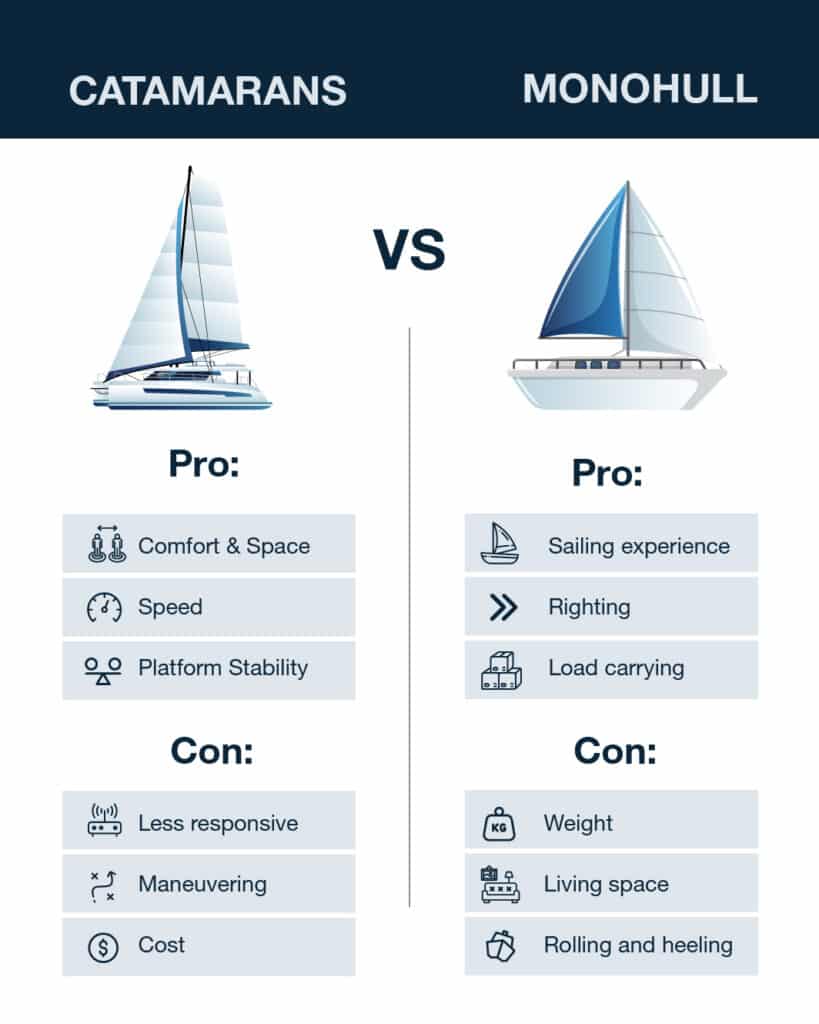
The Strengths and Pros
No matter your choice of monohull or catamaran, there are safe, comfortable, and excellent sailing boats of both types. Neither has an exclusive lock on any strength, and both sail safely and comfortably. But there’s a different emphasis on how they do it. No matter what you are trying to do – sail fast, cruise the world, or just host a crowd at the dock, there are monohulls and catamarans that can work for any requirement.
Catamaran advantages
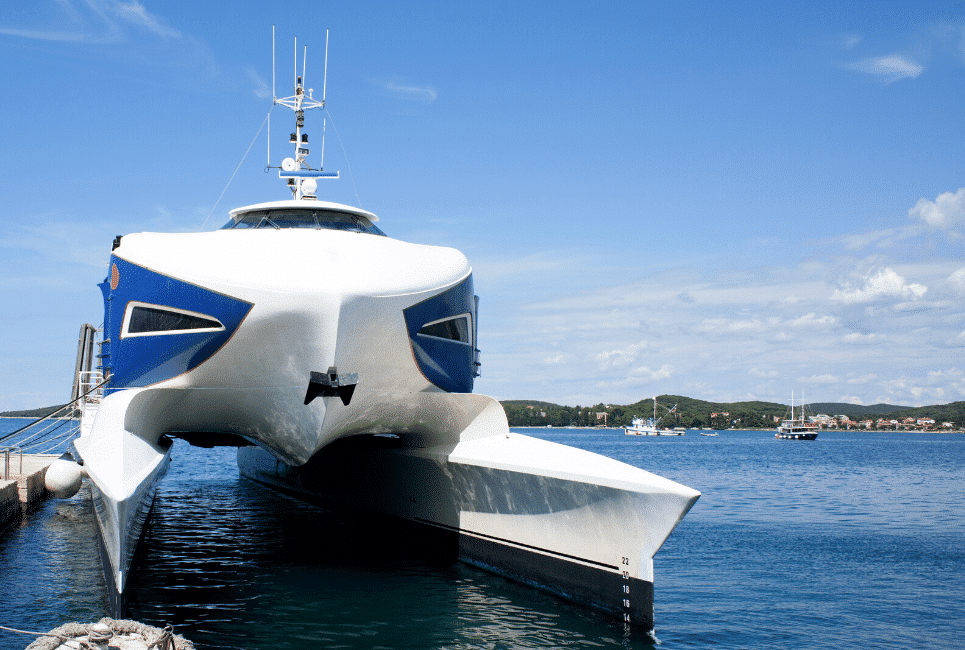
Space and comfort: Two hulls and a wide beam make a very stable platform with lots of volume in the saloon and cockpit. Most living space is above the waterline, with wonderful light and airflow. Cabins in the hulls offer better privacy and isolation, usually with standing headroom.
Straight line speed: Most catamarans are faster in straight-line sailing speed (1) that similar sized or even longer monohulls. Without a lead keel, they’re lighter, so more driving force from the sails converts to speed, and narrower hull forms may have less drag than wide hulls with deep keels. Some heavier cruising catamarans may not be faster, especially if they keep rig size small for ease of handling.
Stability : The beam of two hulls with a bridge deck leads to much higher stability and resistance to roll (2). Waves in an anchorage that induce violent roll in a monohull may make a catamaran bounce or bob. Under sail, catamarans do not heel appreciably even when powered up.
Twin engines. : With one engine in forward and balanced in reverse, most catamarans can spin in a circle in place and make sharp adjustments to the boat’s direction. If you have an engine failure, you also have a second engine, giving a safety edge when you can’t sail.
Monohull advantages

Upwind sailing performance: While catamarans have the edge at straight-line speed, monohulls sail closer to the wind. When you’re racing or you have to sail upwind to get to the next island, this can get you there faster.
Sailing feel and responsiveness : The “feel” of sailing a monohull is much better. With a single hull, you’ll feel wind pressure and trim adjustments immediately for a more responsive helm and a better ability to sail to the wind.
Maneuvering under sail: Monohulls are quite nimble tacking and turning under sail, and there’s less risk of slow or missed tacks.
Righting Moment: The primary offshore safety argument for monohulls is their ability to right when capsized. The heavy keel keeps the boat deck up when sailing, and most monohulls will come back upright even after a complete capsize.
Cargo and Loading: A higher displacement boat with thousands of pounds of lead hung from the bottom isn’t going to be as affected by loading as a relatively light multihull.
Aesthetics: This is subjective, as many catamaran enthusiasts love how they look. Classic sailboat styling, with swept sleek looks, springy sheer lines, and all the “right” proportions are more common on monohulls.
Also read: The 5 Best Electric Anchor Winches
Weaknesses and Cons
Like strengths, weaknesses are relative; just because one class has a strength doesn’t mean the other doesn’t. There are spacious monohulls and beautiful catamarans, just like there are cramped catamarans and unattractive monohulls. The differences have to be highlighted relative to each other, and the weaknesses of one are most apparent compared to the strengths of the other.
Catamaran Cons
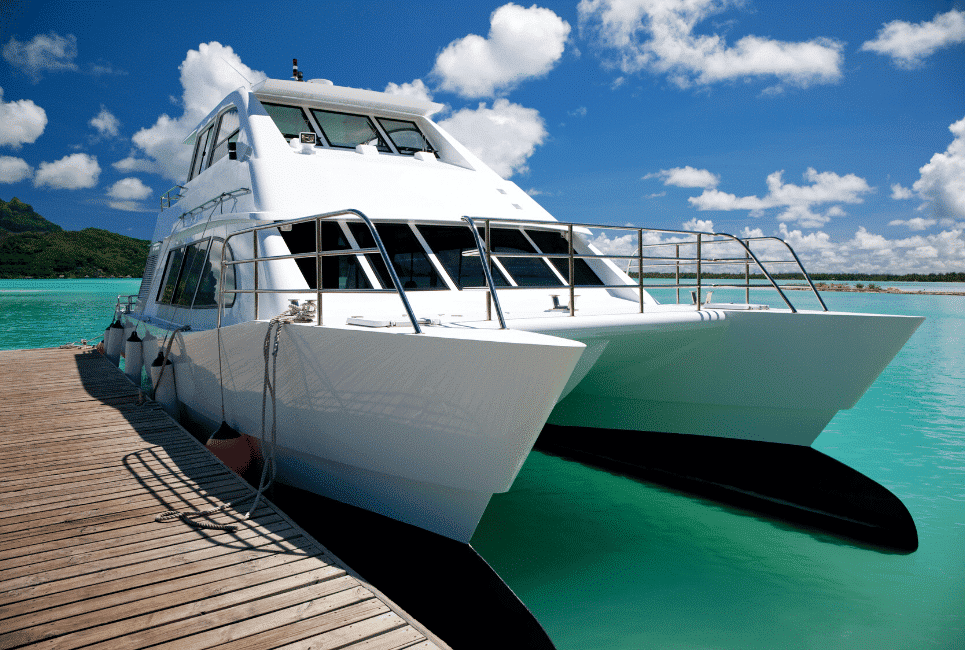
Upwind performance: Cats don’t sail as close to the wind, but they make up for it by sailing faster off the wind. You’ll sail a less direct course upwind. Even if you get in at the same time, you’ll have to sail farther.
Less responsive sailing: Two hulls with two rudders and a very broad platform reduce the helm feel when sailing, cutting responsiveness sailing in shifting wind and wave conditions. It also makes tacking slower.
No-flip zone: It is very difficult, but not impossible, to flip a large catamaran (3). But if a catamaran capsizes, it will not flip back over by itself.
Large in marina/close quarters: You have two problems in marinas. Beamy cats are tough to maneuver in tight spaces because they’re big and visibility is tough over the hulls. And many marinas charge extra because the wide beam extends into the next slip. The good news is that twin engines make tight maneuvering easier.
Price point: Catamarans are more difficult to build and need more materials. This is directly reflected in the cost of the boats.
Monohull Cons
They are heavier: Every large monohull needs a keel for stability (4). They can not sail or stay upright without thousands of pounds of ballast, and this makes them heavier and slows them down. Tiny monohulls can use a centerboard or daggerboard for stability, but most boats big enough to sleep on need ballast.
Darker interiors : Most monohull living space is lower in the boat, where you can’t put enormous windows for light and circulation. It’s very hard to get space as bright and airy as catamaran saloons.
Less living space: With one hull and no bridge deck saloon, most monohulls feel cramped compared to spacious catamarans.
More prone to rolling motions : Only one hull makes monohulls susceptible to rolling in waves, and the movement can be quite uncomfortable.
Heeling: Tipping is just part of sailing monohulls upwind and is unavoidable. It can be reduced on some other points of sail, but not eliminated. Many people, especially non-sailors and new sailors, find this movement uncomfortable or distressing.
You might also be interested in: How to Buff a Boat | A Detailed Guide by a Boating Expert

Troubleshooting Pontoon Boat Battery
Pontoon boats are a great way to enjoy the water and spend quality time with family and friends. But just like any other boat, they rely on a battery to power various systems, including navigation lights, trolling motors, and other…
Boat Accessories

Best Ice Fishing Fish Finders in 2023
In search of the best ice fishing fish finders in 2023? Not all fish finders are created equal, particularly when it comes to ice fishing. Specialized features are crucial to ensure successful outings in harsh winter conditions. You require a…

Best Side Imaging Fish Finders in 2023
Navigating the world of angling equipment can be challenging. That's especially true when it comes to side imaging fish finders, given the extensive range of options available in 2023. This post makes it easy for you to narrow down your…

How to Choose a Fishfinder for Your Boat: A Comprehensive Guide
Today, we embark on a journey to unravel the secrets of choosing the perfect fish finder for your boat. As we navigate through an ocean of options, we'll explore different types of fish finders, delve into their key features, and…
Accessories
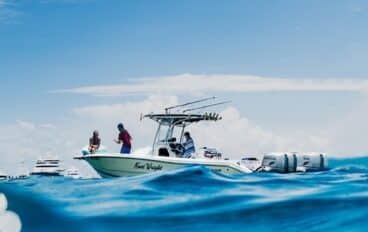
5 Best Portable Fish Finder in 2023
Looking for a portable fish finder for kayaking, ice fishing, or other activities? The good news is that there are a lot of solid products out there. The year 2023 has ushered in an array of advanced models, each brimming…
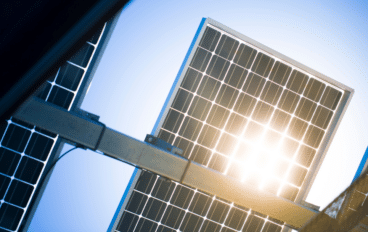
Charging Your Trolling Motor Battery with a Solar Panel
Charging your trolling motor battery with a solar panel is not just the right thing to do for the environment, it is extremely convenient. When you’re out on the boat, with any luck, you’ll have access to a good amount…
Don't miss out
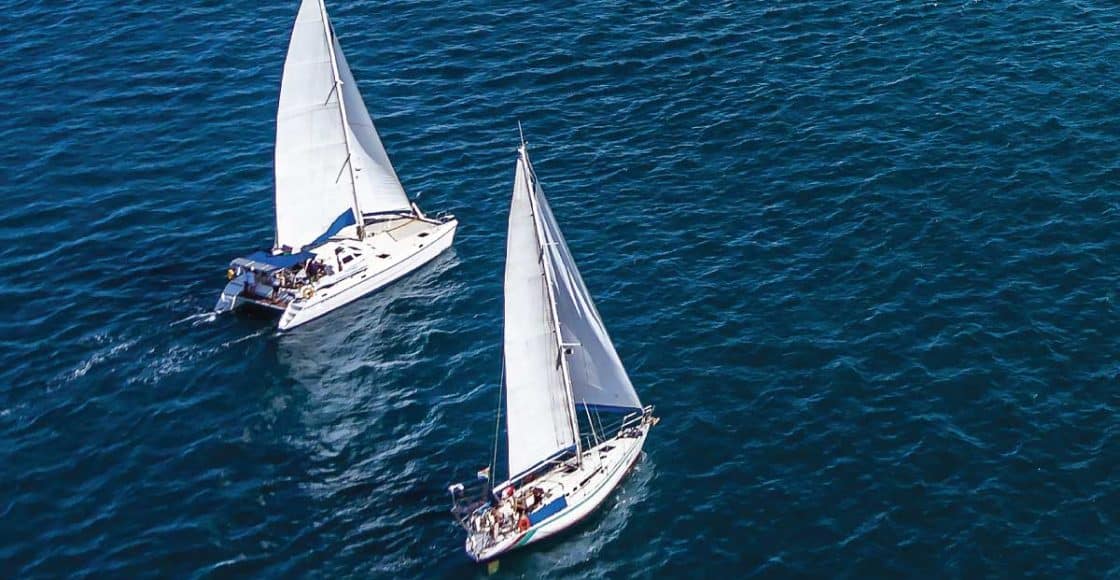
Catamaran vs. Monohull: Which Is Better?

Table of Contents
Last Updated on September 1, 2023 by Boatsetter Team
It used to be that sailors and powerboaters (blowboaters and stinkpotters, respectively) used to hold the loudest arguments about which was better– sailboats or powerboats. Today, the debate is centered around catamarans and monohulls— how many hulls are best? Is there a best?
Let’s look at what each boat offers— and continue to read for all Pro Boatsetter Tips .
Got a boat? Put it to work
The benefits of catamarans
Spacious for large crews, easier on your body, shallow drafts, safety system in case of emergencies.
Pro Boatsetter Tip: Did you know catamarans have seen a great surge in popularity over the last decade?
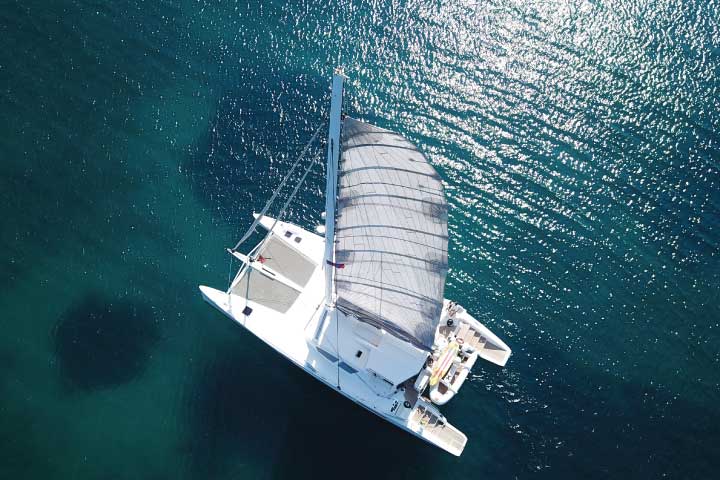
If you’ve got a large crew or plan on throwing parties aboard, you’ll probably benefit from the catamaran’s (also known as “cats”) roominess. Cats offer separation on deck with the aft cockpit , forward lounge or trampoline, and maybe even a flybridge .
Inside, cats have cabins and multiple heads for convenience. A cat of a given length (let’s say 40 feet) has 1.25 x the space of the same length monohull. In other words, it feels the same as a 50-foot monohull. It’s also usually laid out in a more user-friendly manner.
Cats have two hulls, making walking easier for kids, older folks, and pets! Because of its steadiness, you and your crew are less likely to be fatigued by the end of your boat trip. Maybe stay out longer to catch more fish.
Best of all, you’re less likely to feel seasickness because they don’t feel “on their ear” even when sailing in high winds and rough conditions. Not to mention, they’re much easier to sleep on.
Most sailing catamarans have a shallow draft perfect for skinny water cruising like the Chesapeake Bay and Florida. They can venture into areas previously off-limits to deep-draft monohull sailboats.
Most cats have double the systems, including bilge pumps, freshwater pumps, showers, heads, engines, etc. This means if one system fails, you’ve got a backup!
Twin screws also offer easier docking and increased maneuverability. It’s much easier to drive a large sailing cat than a single-engine monohull, especially in a cross-breeze and when docking, backing, or maneuvering in tight quarters.
The benefits of monohulls
- Performance
- Easy cruising
- Familiarity
- Availability & expense
Pro Boat Type Tip: Operating a monohull can be challenging! If this is your first time sailing on a monohull , make sure to rent with one of our pro captains.
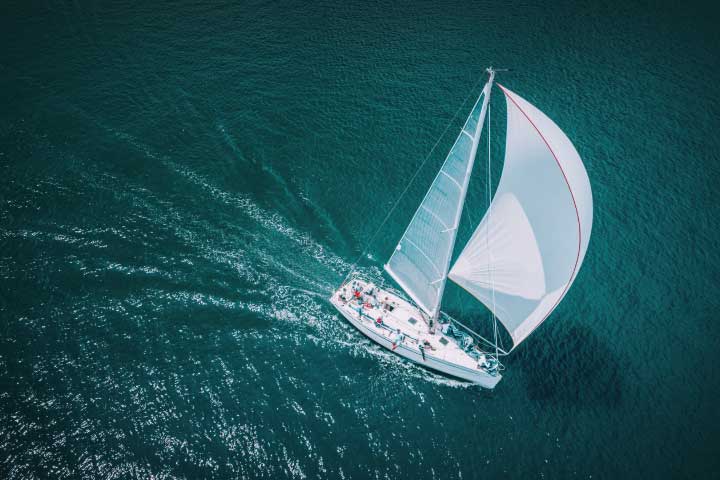
Competitive performer
If you want to win a sailboat race, use a monohull. This boat’s design makes it a favorable contender even when weather conditions are working against you.
Let’s add a caveat here for cruising under power– cats tend to be more fuel efficient because they’re lighter and they’re not dragging a heavy keel through the water.
Easier motion
Monohull sailboats have their own groove. This motion is predictable and distinguishable by pro sailors. Cats, on the other hand, depend on the body of water’s condition state. Also, cats pound when going upwind into big seas if their bridge deck is pummeled by waves, while monohulls tend to slice through the waves.
Familiar handling
Monohulls have been around for centuries, and chances are that you learned to sail or powerboat on one, so their handling is more familiar. A cat’s dimensions may seem intimidating at first, especially if you are short-handed.
Availability & cost
Monohulls are more available, especially for rent. There are simply more of them. They’re also usually less expensive to rent and less expensive to moor in a marina.
The good news about catamarans and monohulls
There’s no right or wrong choice. It all depends on your budget but, above all, your boating lifestyle. So the better question is: what will you use your sailboat to do?
Party at hidden coves with your crew. Take the kids out for a fun sailing excursion. Sunset cruises with your partner. Enter a regatta; win! Rent it out for an extra income.
Learn more about boating types, gear, and fun water toys at Boating Resources .
Boatsetter is a unique boat-sharing platform that gives everyone — whether you own a boat or you’re just renting — the chance to experience life on the water. You can list a boat , book a boat , or make money as a captain .
List, rent, earn — Only at Boatsetter.

Zuzana Prochazka is an award-winning freelance journalist and photographer with regular contributions to more than a dozen sailing and powerboating magazines and online publications including Southern Boating, SEA, Latitudes & Attitudes and SAIL. She is SAIL magazines Charter Editor and the Executive Director of Boating Writers International. Zuzana serves as judge for SAIL’s Best Boats awards and for Europe’s Best of Boats in Berlin.
A USCG 100 Ton Master, Zuzana founded and manages a flotilla charter organization called Zescapes that takes guests adventure sailing at destinations worldwide.
Zuzana has lived in Europe, Africa and the United States and has traveled extensively in South America, the islands of the South Pacific and Mexico.
Browse by experience

Explore articles

7 Gifts Under $100 for Boaters
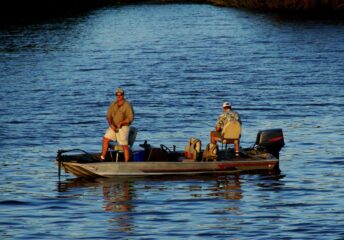
10 Best Jon Boats 2024
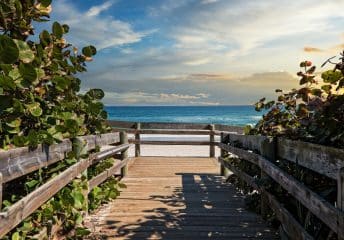
5 Best Beaches in Melbourne, Florida
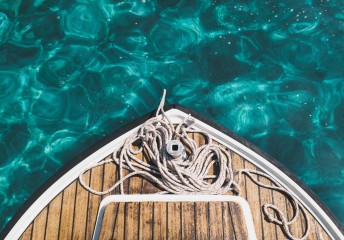
FAQ: Boatsetter Owner Payout and Fees

Catamaran and Monohull Compared: Which is Better, Faster, Safier, and More Stable in Rought Sea?
Catamarans and monohulls are two vessels that have distinct features from each other. Catamarans have two hulls connected by a bridge structure whereas, as the name suggests monohulls have a single hull.
Both types of vessels have different features in terms of both aesthetics and function, let’s get into the details to find out more.
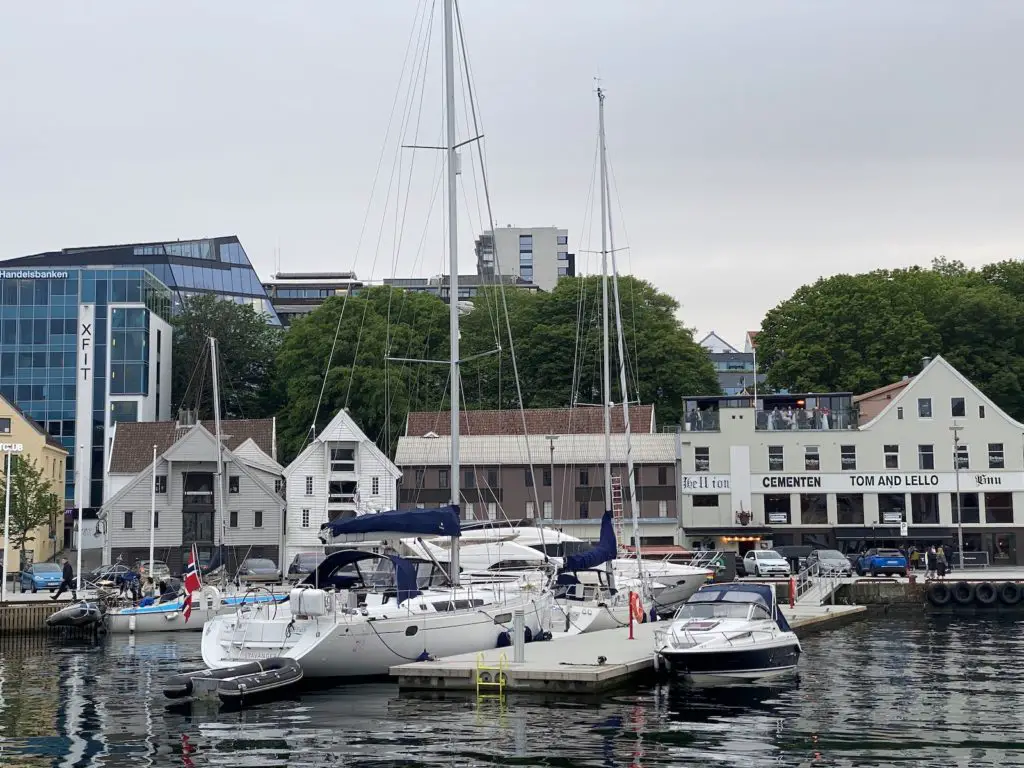
Do Catamarans Have More Space?
Since catamarans have two hulls, they are normally wider than monohulls. This gives the designers and owners the flexibility to maximize the space requirements in terms of space and function.
Vessels can be designed for either commercial or recreational uses. The additional space can serve as an advantage in both fields. In terms of recreational vessels such as yachts, the accommodation can be split up between the two hulls and can be well designed in such a manner that separate spaces can be allotted for the owner, guest, and crews with separate passages such that the path between the primary guests and the crew don’t collide.
In terms of interiors, the huge space addition can give the owners much more flexibility in choosing furniture without size restrictions and more space for additional appliances such as washers, dryers and so on which can make life on board much easier.
The deck can also house more people without the feeling of being enclosed in a closed space and for this reason, catamarans are normally used as party boats with wider deck space and more space to move around.
In terms of storage, catamarans have better storage options than monohulls as both the hulls can be utilized for different functions which not only increases the overall capacity of storage in terms of fuel , fresh water , cargo, and so on but also gives the designer an option to segregate the storage areas for different uses.
Catamarans are also now a growing trend in the fishing industry as the wide decks provide more area for the fisherman to move around without any obstructions making fishing much easier also, catamarans tend to roll less which stabilizes the vessel better than monohulls, giving more stable conditions for fishing without the risk of going aboard.
Due to the wider proportions, the spaces can also be designed in such a way so as to house tenders, jet-skis, and so on, on either of the deck spaces normally aft of the vessel mostly functioned by a small crane which can launch the vessel into the water.
Recreational activities such as swimming and diving can be performed with ease on both types of boats. On catamarans, the wide aft spaces also provide effective spacing for housing equipment and accessories such as dive tanks, telescopic staircases and so on which can serve as must-haves for similar activities.
The same can also be performed on monohulls with limitations to the width of the vessel. The wide superstructures on catamarans can also be used to house solar panels for green and renewable energy solutions which surely is going to be a great advantage in the near future.
Monohulls have the advantage of having wider compartments below the deck when compared to catamarans, as the overall width of the hull is larger than a single hull on a catamaran. This gives room for larger living spaces below the deck, which can have the option to walk around on either side of the bed.
Why Are Catamarans More Expensive Than Monohulls?
Catamarans are normally priced more than monohulls. This is because they have more overall area which requires more raw materials in the production stage than monohulls.
In terms of machinery, they have two or more engines on each hull depending on the width of each semi-hull and its supporting machinery which can increase the overall cost of the final product.
In terms of engines, maintenance is less frequent when compared to monohulls as they don’t need to operate on their maximum limits to push the vessel.
Maintenance costs can also be higher for catamarans as they have more machinery and more deck space, but on the contrary, the ease of maintenance will be much better in catamarans than monohulls as they have better accessible spaces.
The preventive maintenance for corrosion and marine growth on catamaran hulls is also higher as they normally have more area to treat than monohulls.
Are Catamarans Faster Than Monohulls?
Catamarans tend to outperform monohulls due to their slender hulls which help in reducing the drag forces. On performance power catamarans the space between the two hulls is called a “Tunnel” which is designed in a similar manner to an aerofoil so that it acts like a wing, which increases the aerodynamic lift forces thereby increasing overall efficiency and top-end speeds of the vessel.
The balance between the hydrodynamic and aerodynamic forces is the key aspect that determines the performance and stability of high-speed catamarans.
Fuel economy is normally better on catamarans due to the higher lift forces and lower water friction compared to monohulls which thereby reduces the overall load on the engines, reducing fuel consumption.
Is A Catamaran More Stable Than A Monohull?
Catamarans are generally more stable than monohulls in terms of roll stability. Let’s take an example of balancing a stick in the middle compared to balancing it by supporting the two ends, obviously, the second case has an advantage. In a similar manner, we can observe that catamarans have better roll stability when compared to monohulls.
This gives them an upper hand in terms of comfort and executing different operations onboard the vessel with ease, also reducing the risk of people falling on board the vessel. Catamarans are mostly used as ferries or passenger vessels as people tend to get less seasick on these kinds of vessels.
The deeper the deadrise the better the sea-keeping characteristics, most monohulls are designed with a deep v deadrise and tend to outperform catamarans which normally have displacement or semi-displacement hulls, in rough waters.
The typical catamarans are better in shallower water than rough water due to this reason and that’s why we see most of the coastal or inland cruisers as catamarans and most ocean-going vessels as deep v monohulls.
The draft can be defined as the distance of the waterline to the keel of the vessel. Catamarans normally tend to have a lower draft compared to monohulls which gives them an advantage of plying over shallower waters without the risk of grounding.
The lower the draft of the less the vessel, the less it is in contact with water, and therefore the overall water friction resistance is reduced leading to the need for lower power to push the vessel and better fuel efficiency.
What Is Easier To Sail A Catamaran Or Monohull?
For the thrill of sailing most sailors prefer monohulls over catamarans. They are sensitive to different forces like wind and waves acting on the vessel and there is an immediate response on the vessel. They ride through rough and choppy waves; this is the experience the sailors look forward to, giving them an adrenaline rush.
Sailing catamarans do not respond similarly to monohulls as the overall motions are reduced and also monohulls maneuver much easier than catamarans at high speeds.
Docking in marinas usually is easier with monohulls than catamarans as they require lesser space to mauver into the docking space.
Which Is Safer Catamaran Or The Monohull?
Catamarans normally tend to be on the safer side than monohulls in terms of backups and safety. If any machinery fails there is always a backup, say for example if rudder machinery fails on the port hull we can always get back ashore with the help of the starboard rudder, similarly if an engine fails there is always the second engine which can be used as a backup.
In terms of reserve buoyancy, if the port side hull gets damaged, the vessel will still remain afloat. These advantages can help people on board keeping them safe and saving a life.
The only downside to the above aspects is the maintenance costs which come up with the same as we discussed earlier.
Which One Should I Get?
The type of vessel should depend totally on your end goals in terms of functionality, performance, region of operation, and so on.
But always keep in mind never to get blinded by the length when you compare a monohull to a catamaran. A monohull in comparison might be longer but the overall space which is measured in cubic space will be higher in the shorter-length catamaran.
Going through the pros and cons the final decision should be made depending on your personal requirements.

- Recent Posts
- Responsibilities of a Fourth Engineer on Cargo Ships – September 10, 2024
- The Role of Cargo Ships in Global Trade – August 22, 2024
- Report: Yang Ming’s YM Mobility Explosion at Ningbo-Zhoushan Port – August 9, 2024
About the author
I worked as an officer in the deck department on various types of vessels, including oil and chemical tankers, LPG carriers, and even reefer and TSHD in the early years. Currently employed as Marine Surveyor carrying cargo, draft, bunker, and warranty survey.
Latest posts

Is Maritime Security Necessary on Modern Ships?
It’s vital for ships to stay vigilant. Isolation from land means having no backup or protection for miles, making them vulnerable to attacks and other threats. Equip modern ships using modern maritime security methods.
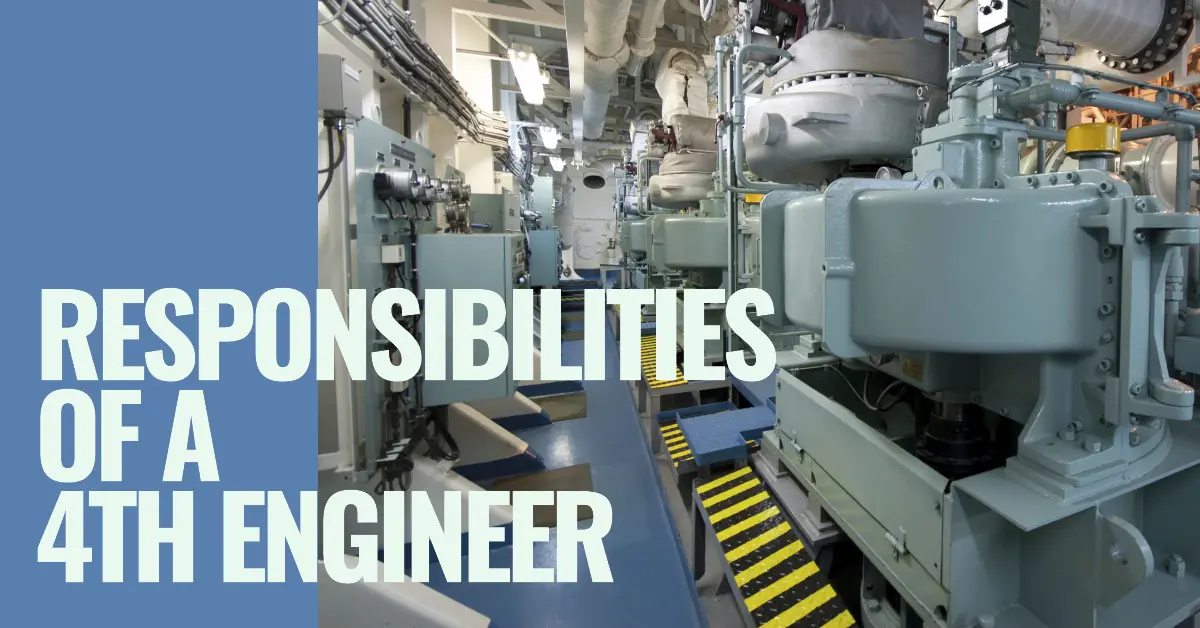
Responsibilities of a Fourth Engineer on Cargo Ships
A Fourth Engineer on cargo ships oversees engine room operations, machinery maintenance, and ensures compliance with regulations like MARPOL.

The Quality Control Process in Marine Manufacturing
Companies in the marine manufacturing space must have tight and effective quality control processes. What steps should an effective quality control process include?
- Course Checklist
- Important Information
- How to Get to Us
- Our Instructors
Monohull vs Catamaran: A Deep Dive into Design and Performance
The genesis of two designs.
In the world of sailing, the debate between monohulls and catamarans is a tale as old as time. The history of these two iconic designs stretches back to antiquity, reflecting the evolution of human innovation and our insatiable desire for exploration.
The monohull's genesis lies in the early days of human seafaring. Traditional cultures from the Mediterranean to the South Pacific have all used some form of monohull craft for fishing, trade, and exploration. The monohull's sleek, single-hulled design, characterized by a deep keel and distinct bow and stern, offers an efficient shape for cutting through waves. Over centuries, the monohull design has been refined and perfected, culminating in the magnificent yachts we see gracing our waters today.

On the other hand, the catamaran, a vessel with two parallel hulls, boasts a legacy equally steeped in seafaring history. Its origins can be traced back to the outrigger canoes used by ancient Austronesian cultures.
The word 'catamaran' itself is derived from the Tamil word 'kattumaram', which loosely translates to 'logs tied together'.
These innovative sailors discovered that by adding a second hull, they could greatly improve the stability and speed of their vessels, a design principle that holds true to this day.
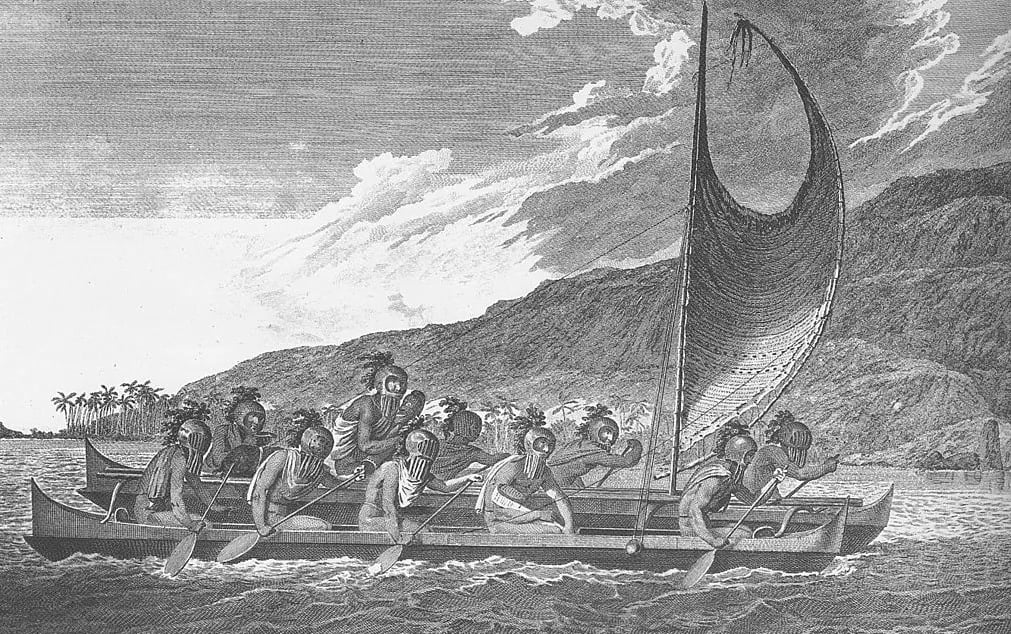
Exploring the Monohull Design
Stepping into the present, let's delve deeper into the modern monohull design. Its traditional single hull offers a quintessential sailing experience that's hard to match. Monohulls are typically seen as the embodiment of the romantic sailing ideal, thanks to their elegance and the graceful way they heel under sail.
One of the major benefits of monohulls lies in their seaworthiness. Their deep keels provide excellent stability, allowing them to handle heavy seas and high winds effectively. In addition, the keel acts as a counterbalance, enabling the boat to right itself after being heeled over by a gust of wind. This 'self-righting' characteristic is a significant safety feature exclusive to monohulls, adding a level of reassurance when navigating challenging sea conditions.
Monohulls are also known for their responsive handling and satisfying sailing performance. The mono-hulled design cuts cleanly through waves, resulting in a smooth and predictable ride. If you're the type of sailor who enjoys feeling the wind and waves' raw power, the visceral connection that a monohull provides is unparalleled.
However, as with everything in life, monohulls also have their downsides. For one, space can be at a premium. The deep keel and the rounded hull shape necessary for stability and performance take up much of the interior volume, leaving less room for living space compared to a similarly sized catamaran.
Another consideration is the heeling motion. While some sailors love the feeling of a boat leaning into the wind, others may find it uncomfortable or disorienting, especially during prolonged passages.
Despite these trade-offs, monohulls continue to hold their charm for many, offering a blend of tradition, performance, and adventure that has stood the test of time. In the next part of this deep dive, we'll shift our focus to the twin-hulled wonder of the sailing world: the catamaran.
The Catamaran Conundrum
As we switch gears to catamarans, it becomes apparent how contrasting they are to their monohull counterparts. Catamarans, with their dual hulls connected by a central platform or cabin, present an entirely different set of strengths and challenges.
Let's start with one of the most prominent features of catamarans: their stability. The wide beam of a catamaran provides a significant increase in stability over a monohull, reducing the boat's tendency to roll. This stability not only enhances the comfort of your crew but also allows for safer and easier movement on deck and below. If the notion of preparing a meal in a level galley while underway appeals to you, a catamaran might be the perfect fit.
Space is another major advantage of catamarans. With essentially two hulls worth of volume, catamarans typically offer much more living space than a similarly sized monohull. This makes them an attractive option for those planning extended cruises or living aboard. The additional space also allows for separate, private cabins in each hull, perfect for accommodating families or groups.
When it comes to performance, catamarans have a distinct edge in certain areas. Their dual-hulled design and lack of a ballasted keel result in less drag, allowing them to often outpace monohulls in moderate conditions. However, this speed advantage may be offset in heavy weather, where the ability to cut through waves (rather than ride over them) can make a monohull's ride smoother and faster.
But, just like monohulls, catamarans aren't without their drawbacks. While their stability and flat sailing characteristics are often seen as benefits, they can also create a false sense of security, leading some sailors to push their boats beyond safe limits. Additionally, while catamarans are significantly harder to capsize than monohulls, if they do flip, they generally won't self-right like a monohull would.
Furthermore, catamarans can be more challenging to handle in confined spaces due to their wider beam. Docking, in particular, can be trickier, especially in marinas designed with narrower monohulls in mind. Also, the increased beam and dual hulls often lead to higher mooring and maintenance costs.
Monohull vs Catamaran: Performance Parameters
Before we take this deep dive to its conclusion, it's important to touch on a few key performance parameters. These can greatly influence whether a monohull or catamaran would be a better fit for your sailing needs.
For starters, how a boat handles various wind conditions is critical. Monohulls, due to their keeled design, tend to excel upwind. Their ability to 'point' into the wind is usually superior to that of a catamaran. On the other hand, catamarans, with their lighter weight and reduced drag, often have the upper hand in downwind and lighter wind conditions.
Another factor to consider is load carrying capacity. While catamarans have more space for storing gear and provisions, they can be more sensitive to overloading. Additional weight can significantly impact a catamaran's performance, whereas monohulls tend to be more forgiving in this regard.
In the final part of this blog, we'll wrap up our deep dive by considering these and other factors to help determine which design might be the best fit for your sailing needs.
Choosing Your Vessel: What Suits Your Sailing Style?
Now that we’ve explored the design principles and performance traits of monohulls and catamarans, it’s time to consider what kind of vessel will best cater to your personal sailing needs and preferences.
If your sailing plans involve long passages in open waters, especially in rougher seas or challenging wind conditions, a monohull's sturdy and seaworthy design might be the most fitting choice. Their excellent upwind performance and smoother ride in heavy weather will provide you with both comfort and safety on lengthy oceanic voyages.

For those attracted to the exhilaration of speed, catamarans, with their swift downwind capabilities, can offer a thrilling sailing experience. They can be the ideal choice if your sailing adventures are primarily focused on coastal cruising, island-hopping, or participating in sailing races where their speed advantage can shine.
Lifestyle preferences play an essential role as well. If you value space and comfort, and perhaps are contemplating living aboard or planning extended family cruises, the spacious interior of a catamaran, with its level sailing and private cabins, may be the superior option.
However, if you're a sailing purist who enjoys the classic feel of a boat that heels under sail, the thrill of mastering the art of balancing a boat in various wind conditions, a monohull will likely provide the sailing experience you're seeking.
As for cost considerations, remember that while catamarans offer more living space and stability, they can also come with higher purchase, maintenance, and mooring costs.
Closing Thoughts: Your Ideal Adventure on the Water
If you're looking to buy or charter a sailboat , the choice between a monohull and a catamaran ultimately boils down to your sailing goals, personal preferences, and budget. There's no definitive answer to which is better because it's subjective to the individual sailor.
Whether you're lured by the traditional appeal and seaworthiness of a monohull or the comfort, stability, and speed of a catamaran, the most important thing is to choose a vessel that will provide you with many memorable and safe adventures on the water.
At Sailing Virgins , we love them both and appreciate their unique characteristics. Whatever you choose, the sea will always be an ever-changing playground that continually challenges and rewards those who embrace the sailing lifestyle.
If you're still unsure about which one is for you, why not join one of our sailing courses or adventures? It's the perfect way to gain hands-on experience and discover what type of sailing brings you the most joy. Feel free to press the button below to check out our courses.
Fair winds and following seas to all prospective boat buyers out there!

Related posts
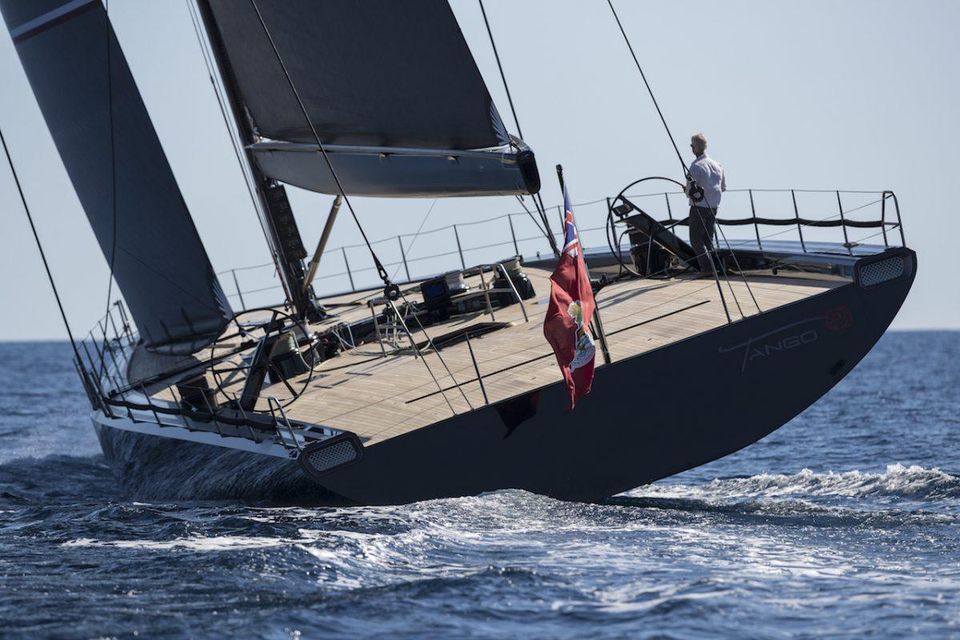
Catamarans vs. Monohulls
Which is better, a monohull or a catamaran.
This question gets asked a lot in sailing. Especially...
Recent Posts
- August 2016 (11)
- May 2023 (11)
- April 2023 (10)
- September 2016 (8)
- November 2016 (5)
- June 2016 (3)
- July 2017 (3)
- March 2018 (3)
- November 2018 (3)
- June 2019 (3)
- June 2023 (3)
- October 2016 (2)
- January 2017 (2)
- February 2017 (2)
- May 2017 (2)
- August 2017 (2)
- October 2017 (2)
- February 2018 (2)
- December 2018 (2)
- June 2022 (2)
- July 2022 (2)
- November 2015 (1)
- April 2016 (1)
- May 2016 (1)
- December 2016 (1)
- April 2017 (1)
- September 2017 (1)
- November 2017 (1)
- December 2017 (1)
- January 2018 (1)
- April 2018 (1)
- July 2018 (1)
- September 2018 (1)
- January 2019 (1)
- July 2019 (1)
- September 2019 (1)
- January 2020 (1)
- March 2020 (1)
- April 2020 (1)
- May 2020 (1)
- June 2020 (1)
- April 2021 (1)
- August 2022 (1)
- October 2022 (1)
- December 2022 (1)
- July 2023 (1)
- August 2023 (1)
- January 2024 (1)
- how to (21)
- sailing (14)
- Sailing Tips (12)
- corporate (9)
- sailing course (7)
- General (6)
- Insider (6)
- professional development (6)
- vacation (6)
- Mindfulness (5)
- leadership (5)
- Performance (4)
- group travel (4)
- opinion (4)
- opinions (4)
- qualifications (4)
- Interview (3)
- Trip Notes (3)
- Uncategorized (3)
- adventure (3)
- sailing virgins (3)
- Instructor Course (2)
- Self-Care (2)
- catamarans vs monohulls (2)
- charter boat (2)
- island adventure (2)
- networking (2)
- preparation (2)
- sailing guide (2)
- youtube (2)
- Athlete (1)
- Beginner (1)
- City Guides (1)
- Failure (1)
- First Time (1)
- Maderia (1)
- check out (1)
- fishing (1)
- french polynesia (1)
- gear tips (1)
- golf vs sailing (1)
- safety brief yacht (1)
- the yacht week (1)
- trip review (1)
The founders of Sailing Virgins started things as a result of having some incredible sailing seasons in the Mediterranean and Caribbean working for sailing company The Yacht Week. James then worked for and for a while managed Tortola Sailing School. In 2016 he branched off and started Sailing Virgins. We LOVE how sailing is changing. Top speeds in the America’s Cup were thirteen knots not so long ago. Now they’re 45 knots. If you’re excited by that, we’re with you. Giddy up!
- Wickhams Cay 2 Road Town, Tortola VG1110, British Virgin Islands
- +1 (272) 999-1920
- [email protected]
© LOVE SAILING VIRGINS 2016-2024
- Terms & Conditions
- Privacy Policy


Catamaran vs Monohull - 6 Points To Consider Before Choosing Your Boat
Multihull or monohull? It’s an age-old (and ongoing) debate, and each option certainly comes with its own set of pros and cons. Whether you’re thinking of investing in a boat of your own, or planning on chartering one for a sailing holiday, one thing’s for sure: the type of vessel you select will have an impact on your cruising experience. Ultimately, what you intend to use it for will determine which type of boat would be best suited for the job. In this article, we considered the aspects of space & design; safety; stability; speed; manoeuvrability and cost, so do read on for our comparison of the multihull catamaran vs the monohull sailboat.
THE CATAMARAN VS THE MONOHULL – A COMPARISON
1. stability . which is more stable, a catamaran or a monohull.
Fact – by virtue of having two hulls, both under sail and at anchor, catamarans are more stable than monohull boats. If you are sailing with young children, seniors – or anyone who’s not all-too steady on their feet – a catamaran will provide you with a much smoother and stable cruising experience than a monohull. Being multihulled, catamarans are not nearly as susceptible to the action of the ocean’s waves. This prevents them from heeling as much as monohull vessels would under the same conditions. As anyone who suffers from seasickness will tell you, this can be an enormous bonus. What’s more, a cat’s multihull stability will also be highly appreciated by anyone prepping food in its galley (two hulls make for a somewhat more pleasant dining experience, too). Lastly, because of its superior stability, walking around the deck (and moving around the interior) of a catamaran is much easier than it would be on a monohull. The verdict? Catamarans are more stable than monohulls.
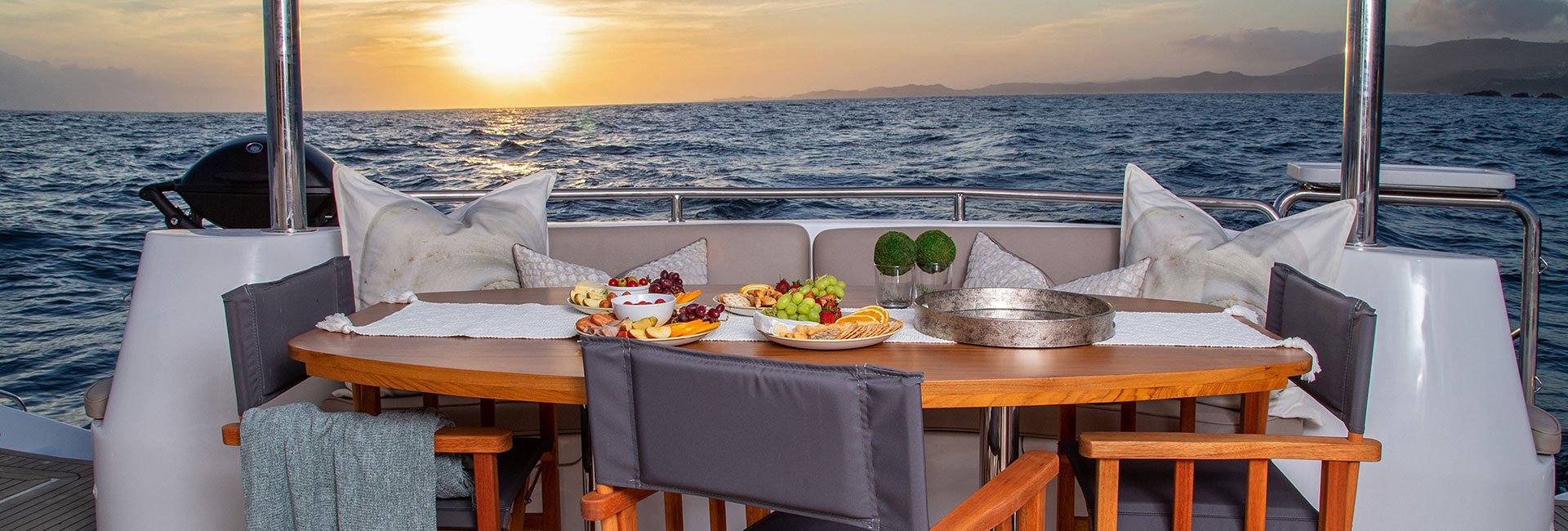
2. SAFETY . WHICH IS SAFER – A CATAMARAN OR A MONOHULL?
The inherent stability and natural buoyancy of a catamaran automatically increase its safety while out at sea. As catamarans don’t have heavy, lead-loaded keels, they will remain afloat, even when (heaven forbid) they are holed. This is because most modern catamarans have such a large amount of buoyancy built into them that they are almost unsinkable, making them much safer than monohull sailboats in this regard. Sure, catamarans can capsize, but being rescued from an upside-down, still-floating multihull is definitely preferable to sinking to the bottom in a monohull! The verdict? Contemporary catamarans are incredibly buoyant and virtually unsinkable, making them safer than monohull sailboats.
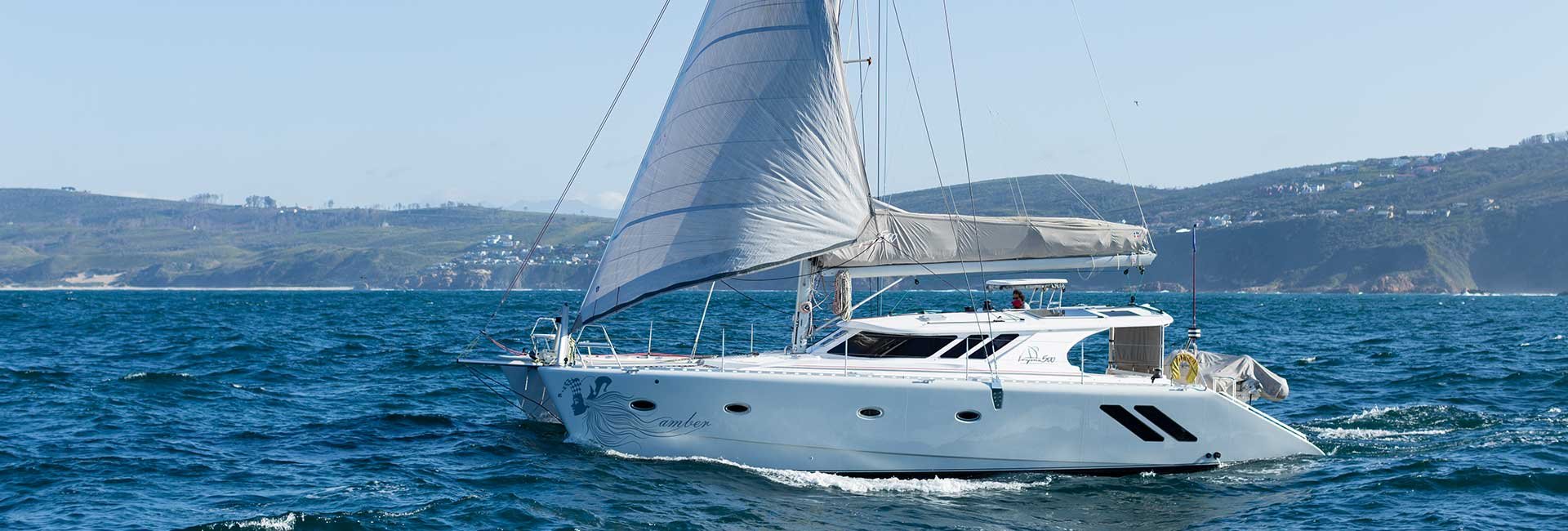
3. SPACE & DESIGN . WHICH IS MORE SPACIOUS AND PRACTICAL – A CATAMARAN OR A MONOHULL?
Due to the boat's shape (and the amount of usable space each design allows), when compared square-foot-for-square-foot, every area of a monohull vessel is usually smaller than its catamaran counterpart. Generally, catamarans offer more room to move in its galley, cockpit and saloon areas than similarly priced monohull boats. Often, catamaran cabins are more spacious too, with cabins of even the smallest cat offering stand-up headroom. Catamarans are also generally more private than monohulls, and more straightforward when it comes to separating living spaces. This can be a significant advantage when you are cruising with children or guests. As most of a cat’s living spaces are above the waterline (on a monohull, only the cockpit is above the waterline), you’ll also enjoy superior airflow through ventilation on a catamaran. If you’re a scuba-diving enthusiast, carrying all of your diving equipment will be easier on a cat. What’s more, catamarans have trampolines, which make them perfect for onboard sunbathing as well as stargazing in the moonlight – a big, romantic plus for sure! Catamarans also have shallower drafts, allowing you to drop anchor closer to the beach than a monohull would. The verdict? Compared square-foot-for-square-foot, catamarans are more spacious than their monohull counterparts. In terms of design, a catamaran is perfect for onboard sunbathing and stargazing and will allow you to anchor closer to shore.
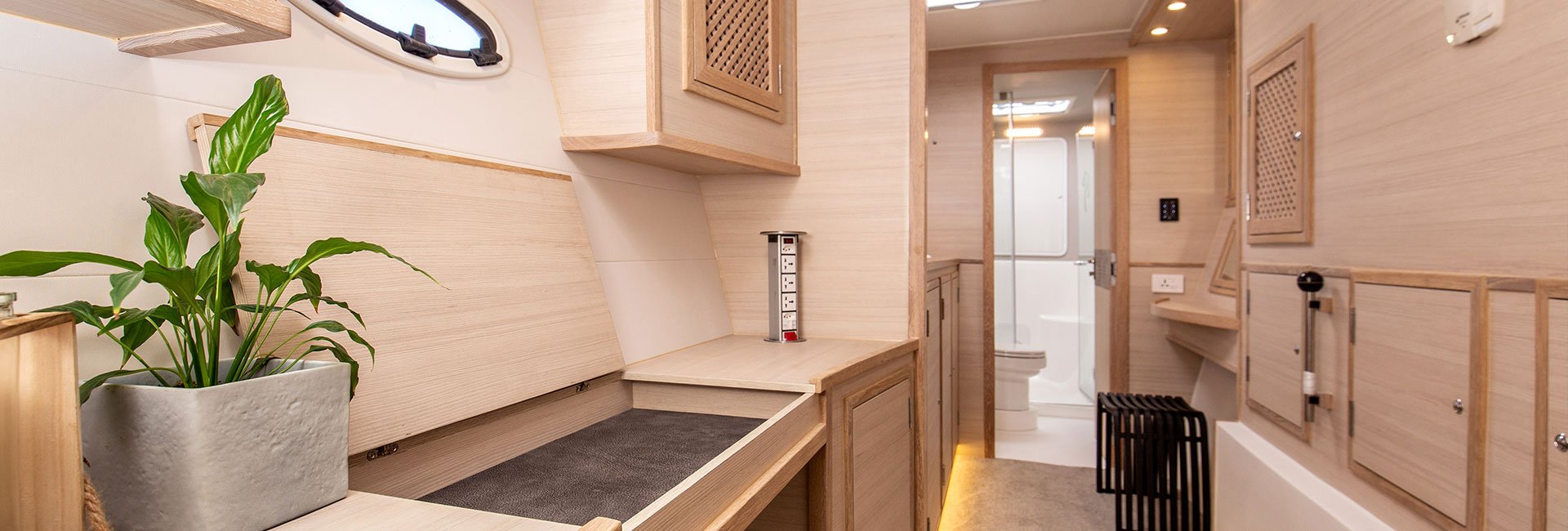
4. MANOEUVRABILITY . WHICH IS EASIER TO STEER, A CATAMARAN OR A MONOHULL?
Most catamarans can turn 360 degrees within their own length, something very few monohulls are capable of doing. However, generally speaking, monohulls are quick to tack, more manoeuvrable, and quicker to respond to the helm than catamarans. At the helm of a catamaran, you’ll get less feedback from the wheel than you would from a monohull. This will require you to be vigilant in rough conditions, and you’ll also have to know when to reduce sail. Compared square-foot-for-square-foot, catamarans are much lighter than monohulls, which means they also slow down a lot quicker. For the most part, catamarans are easier to dock than monohulls, as they have two motors and two rudders which simplify things a lot. This also does away with the need for a bow thruster. The verdict? We’re calling it a tie. Although monohulls are generally more manoeuvrable than catamarans, thanks to their two motors and two rudders, cats are easier to steer than monohulls.
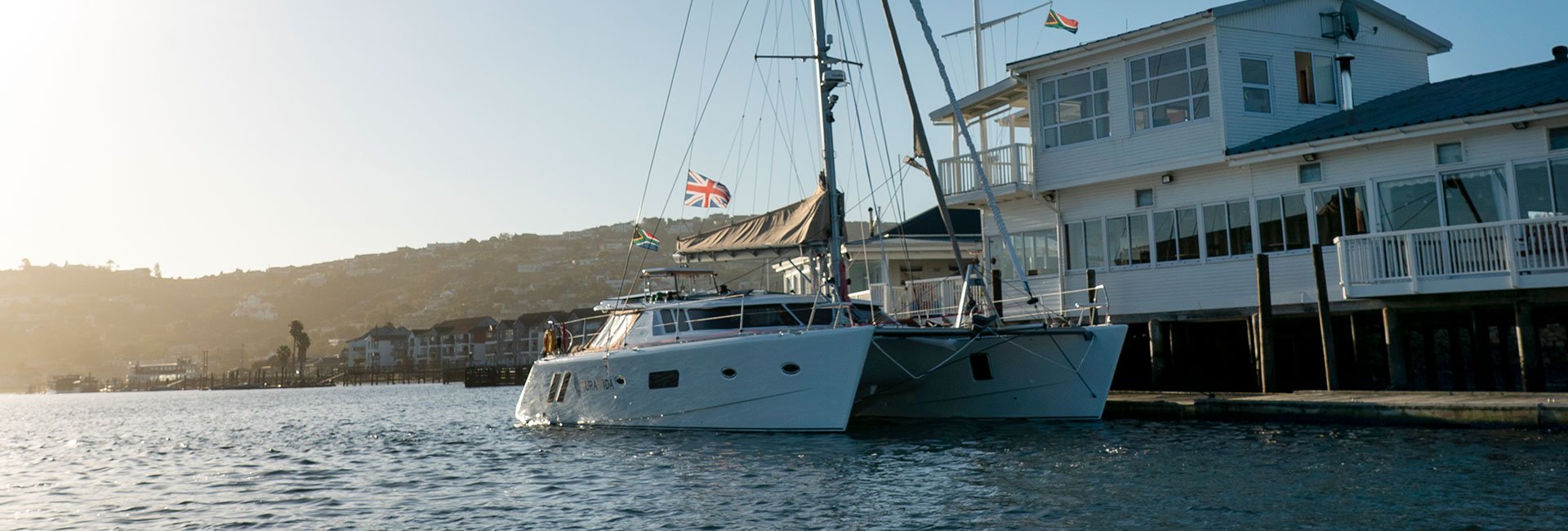
5. SPEED . WHICH IS FASTER, A CATAMARAN OR A MONOHULL?
Although catamarans cannot sail as close to the wind as monohull sailboats, most cats do sail faster than a monohull on a reach. On downwind runs, reaches, and broad reaches, in particular, catamarans usually beat monohulls when it comes to speed, going about 20% faster than a monohull (even outrunning bad weather when necessary!). Another plus is that sailing a catamaran requires less physical exertion than sailing a monohull. The verdict? Even if they don’t point as high into the wind, catamarans are faster than their monohull counterparts.
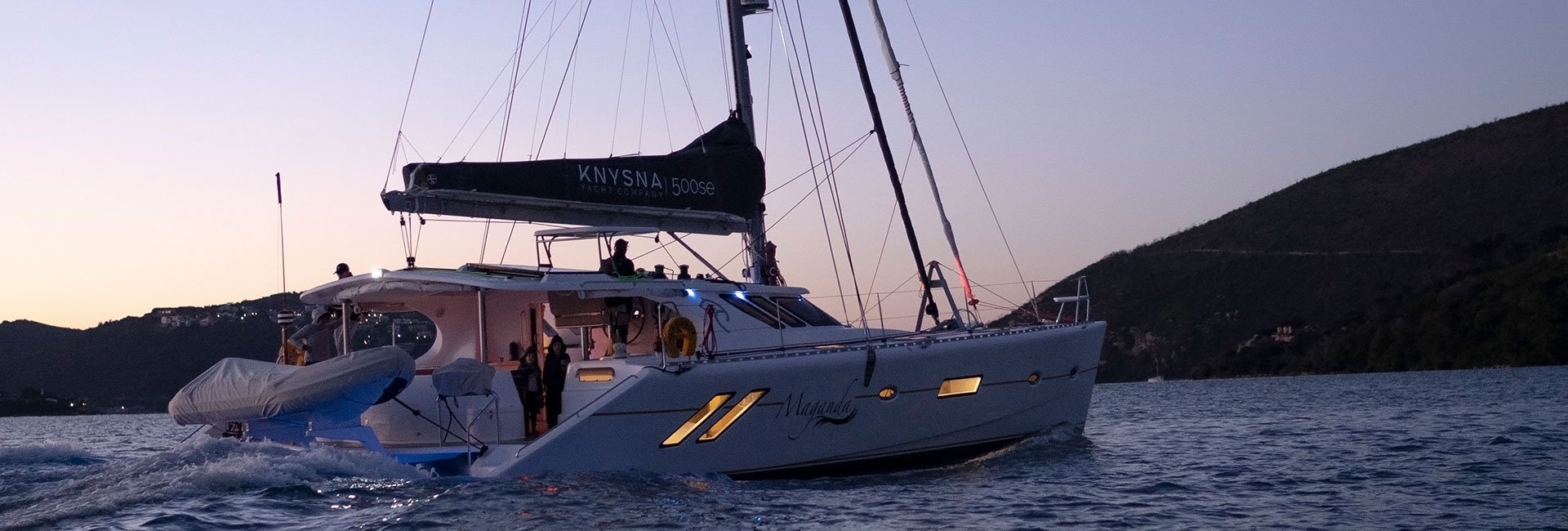
6. COST . WHICH IS MORE EXPENSIVE, A CATAMARAN OR A MONOHULL?
Generally speaking, catamarans with similar sleeping capacity and equipment are more costly than their monohull counterparts (both to own or to charter). Just keep in mind that catamarans typically hold their value better and longer (and tend to be in higher demand) than monohulls. Comparatively, previously owned monohulls are cheaper to purchase than cats, as supply tends to outweigh demand by a large margin. The verdict? Catamarans are more costly than monohull sailboats. However, a read-through of Points 1 to 5 might convince you that they are worth the extra expense.

CATAMARAN OR MONOHULL? – YOUR NEEDS WILL DETERMINE YOUR CHOICE
Looking at the list of pros and cons above, it would seem that the catamaran comes out the clear winner – at least when judged on aspects of safety, space & design, speed and stability. However, your budget, the requirements of the people in your sailing group, as well as your own needs and preferences will all play a significant role in the boat you end up choosing. Both catamarans and monohulls offer unique advantages, and whichever choice you go with, we wish you many happy ocean voyages and an abundance of adventure! Ps. If you’re still unsure which option is the right one for you, why not check out the verdict from ocean adventurers who have lived aboard two monohulls and four catamarans over the past 25 years?
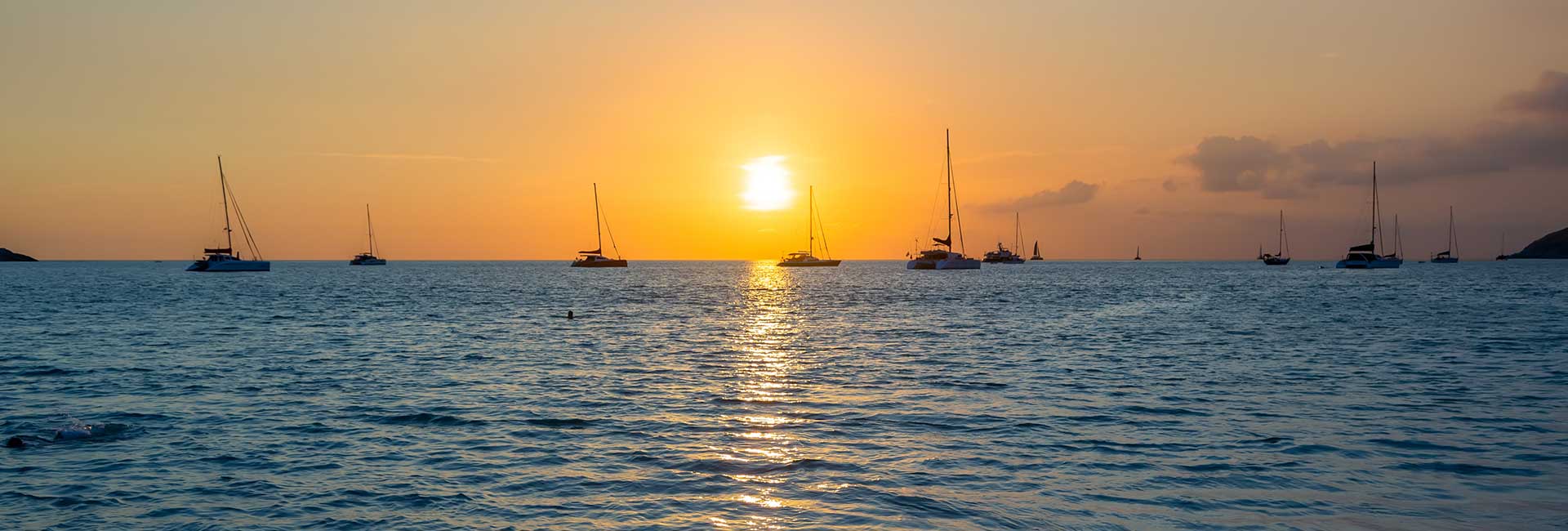
Yacht Maintenance - Top Tips for Protecting Your Investment
Essential things to know about boat insurance, top things to know about yacht solar power, building a yacht: top things to know about the yacht-building process, get all the latest to your inbox, discovery awaits.

Better Sailing

Catamarans vs Monohulls: Which is Better a Better Sailboat For You?
The question of whether to choose a monohull vessel or a catamaran is an eternal dispute between boat lovers. These arguments are usually based on one’s preferences and philosophy. In fact, the popularity of catamarans has grown significantly since their design facilitates many aspects of sailing. But, both mono-hulls and multi-hulls have their advantages and disadvantages. So, in this article, I’m going to list some details about both cats and monohulls so as to help you understand which one is better for you. Remember it all depends on what sort of experience you are looking for. Keep reading!
What is a Monohull?
In general, boats float due to the fact that they displace more water than they weigh. The hull is in “displacement mode” while a boat is stationary or moving slowly. That is, all of the upward forces that keep it afloat come from flotation, which is achieved by displacing water. With certain hulls, increasing the boat’s speed beyond a particular point causes the hull to lift up and skim along on top of the water. This is referred to as “planning.” Monohulls can be divided into two types; displacement and planing hulls.
Some hulls are only capable of moving at displacement speeds . This style of boat has generally slow speed, but it is incredibly efficient to operate. While moving, most have a smooth motion , though rolling (side-to-side movement) might be an issue. On the other hand, while on the sea, achieving fast speeds requires a hull that can readily transition onto a plane. Flat bottom surfaces from amidships aft, or from the middle to the back of the bottom, and a flat transom, or the back of the hull, are the main characteristics of a planing hull. Keep in mind that at a sharp angle, the transom must contact the bottom.
What is a Catamaran?
Nowadays, catamarans are becoming more and more popular. They’re particularly appealing to fishermen since they combine high-speed performance and a smooth rough-water ride with a solid angling platform. Catamarans have two primary disadvantages . Firstly, they require twin engines. Also, larger catamarans may be too broad to fit into standard marina docks. Another disadvantage is that there is less usable interior space than on a monohull of comparable length.
The two hulls of a catamaran are known as amas. These days, the popular phrase is “sponson,” but ama is still acceptable. Note that in comparison to its entire length, each ama is quite short. The narrow amas of a catamaran travel quickly through the water with little power. This allows for fast speeds even when the amas aren’t actively planning.
Trimarans on the other hand have three separate hulls. Sailboat designers have successfully employed this design to provide a large central hull for cabins. But, also for two outrigger amas for stability. The trimaran concept hasn’t been used much in powerboats, despite the fact that several “cathedral” hulls are related. Instead of three independent hulls, a cathedral design squishes them together to the point that they often share a similar planing surface near the transom.

Monohull or Catamaran? Let’s Take a Look at Their Pros and Cons
Catamarans are unsinkable because they are incredibly stable and have natural buoyancy. Yes, they can capsize in a major accident. But, being rescued while floating on the water’s surface is preferable to plunging to the bottom in a monohull. Furthermore, moving around on a flat deck is far safer than on an angled deck.
Classicists have long claimed that catamarans are not as safe as their keelboat counterparts. However, this remark is now regarded as archaic. Since it dates from the mid-nineteenth century when the majority of catamarans were made by amateurs. They could readily tip over even in calm weather, especially if one of their bodies became leakproof owing to damage. Sinking is extremely difficult, if not impossible, for a well-built modern catamaran. Modern structures are designed using computer simulations of various water conditions. Bear in mind that the maximum potential safe sail area is available to cruisers and charter possibilities in particular.
Monohulls , particularly sailboats, offer significantly stronger “self-righting” capabilities in the event of a worst-case knockdown situation. In a catamaran, once you’re upside down, you’re stuck there…And, who wants to be upside down in the middle of the ocean? Returning to an upright position gives you complete access to onboard safety equipment. This includes a liferaft, dinghy, flotation devices, EPIRBs, and strobe lights, which can save you if the boat sinks.
Generally, a catamaran’s high speed allows it to avoid adverse weather . While catamarans do not point as high into the wind as monohulls they are around 20% faster . Or, if they do, they create more leeway or slide sideways. This means that even if you sail upwind at a slightly broader angle to the wind than a monohull and cover a more distance, you will arrive at your destination sooner than a monohull.
A modern performance catamaran with daggerboards and strong sails may point as high as a monohull of comparable size. It will point similar to a comparable monohull but will sail far faster. This allows it to reach an upwind position far sooner than a monohull. However, it’s worth noting that the majority of production cats on the market are underpowered and have standard smaller sails. Many of these designs perform poorly in light breezes. Unless they’re equipped with larger headsails, a Code Zero, and a square-top mainsail.
While cats are more comfortable and safer in rough weather, we must admit that if the weather gets extremely terrible (60 knots of wind or more), it’s better to be on a monohull for survival reasons. For serious offshore single-handed sailing, I believe a monohull is superior since it is easier to hove-to in it. Bear in mind that when you’re in a cat during severe storms you won’t feel any danger, but it demands some nifty seamanship. And, keep in mind that even though a monohull can capsize in bad weather or even roll in a storm, they usually right themselves. A catamaran , on the other hand, is incapable of self-righting . However, the cat will usually stay afloat, providing a safe haven to wait out until aid arrives. Modern catamarans, on the other hand, are extremely difficult to capsize.
That being said, most catamarans can travel 200 to 250 miles per day, and with contemporary technology allowing one to control weather, it’s difficult not to deal with bad weather. In many circumstances, a faster boat is a safer boat because it can outrun heavy weather. A catamaran can avoid the worst weather and, at worst, put itself in the best position to avoid the brunt of a storm if there’s good weather routing information.
So, to sum up, cruising catamarans are quicker than monohulls, and sailing catamarans, depending on their angle, can sail at half the speed of the wind. It’s great to be on a boat that can swiftly attain high speeds and get you to your destination safely and on time. However, catamarans are faster because of their lower surface area , but their prices are generally higher than those of monohulls. Instead of fighting the elements, monohull designs operate in harmony with them . In addition, keep in mind that when sailing upwind, sailing catamarans are inefficient and tack slowly.
Fuel Consumption
Do you want to save money on gas? Then, in most cases, catamarans have less fuel consumption than monohull boats. Catamarans save a lot of gasoline since they have a less wetted surface area on their hulls. They can propel the boat with just one engine in weak winds. Also in flat water, and if the engines have the same number and horsepower. However, in heavier weather , where the higher efficiency of a monohull design provides less resistance , this is not the case.
Generally, catamarans have two fuel-burning engines, which can raise fuel expenses . However, because a catamaran is lighter on the water, it requires less energy to move. In a catamaran, you’ll use less fuel than you would in a monohull. Furthermore, in low-wind areas, catamarans might choose to use only one engine. This reduces the amount of fuel consumed by a catamaran even more . But, only calm waters are subject to these laws. A monohull is far more efficient than a catamaran in navigating waters with heavy waves and heavy winds. A monohull will consume less fuel than a catamaran in this situation.
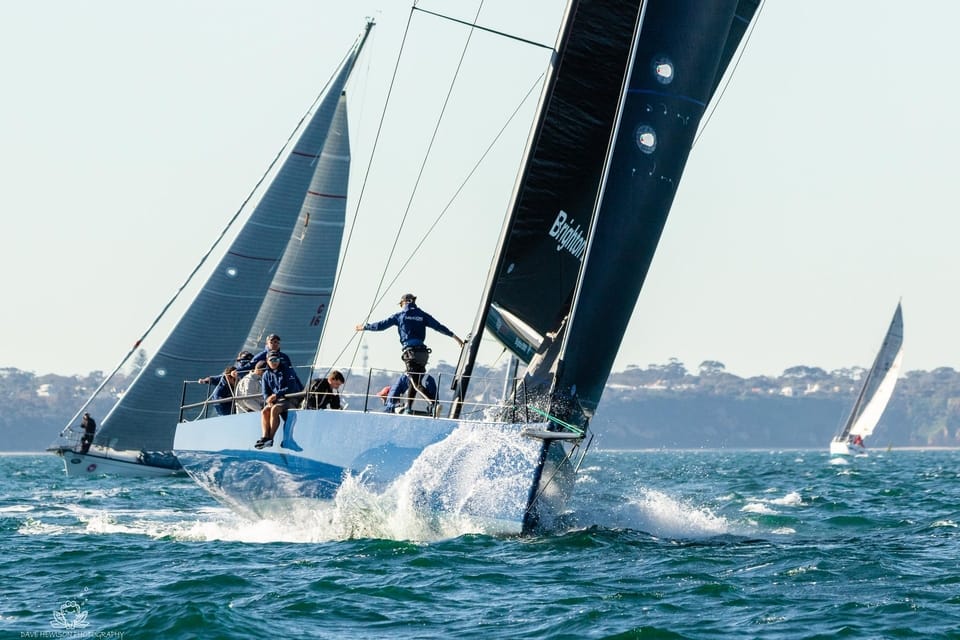
The best feature of catamarans is that all of the rooms are on the same level. The four-cabin arrangement is common with sailing cats and is popular among charter companies. Owner versions usually feature three staterooms, with one hull serving as a big cabin for entertaining. Most catamarans have a big central living room with not one, but two narrow staircases leading down into the hulls—one on each side. It’s a little like living in a tube in the hulls. They’re too thin to accommodate walkaround double/queen berths like those found in monohulls. But, in case of an emergency, it would be impossible to communicate with someone in the opposite hull.
Obviously, a monohull has less space than a catamaran. This is due to the fact that a cat is broader and has a larger deck surface. It also has twice as many hulls as the other, giving you greater total space between them. People who want to host parties on their boats will appreciate the extra space. The catamaran is usually the party boat of choice at the docks, according to most boat owners. Even if you don’t like to host parties, the extra room might be useful for lounging on the balcony or tanning. The boat’s large open space also makes it simple to utilize as a fishing platform.
You also have more room for equipment like surfboards, rafts, and other equipment that can easily clutter a monohull’s deck. Even fishing from a catamaran can be easier because the deck allows for plenty of space between anglers. Owners of catamarans also have more room for carrying fresh water and installing generators and solar panels. A catamaran’s interior room is often larger, and in luxury catamarans, it’s easier to install heavy appliances like washers and dryers inside. These can be fitted to larger monohulls as well, though it will be more difficult than on a catamaran.
All of the extra space, on the other hand, means the catamaran owner has more room to maintain and clean. Furthermore, all of the other stuff that can be brought into the boat will add to its weight . And, as well all know, a heavier boat will consume more fuel and move at a slower speed.
Maneuverability
With their twin motors, catamarans are incredibly agile . On a catamaran, the engines are widely apart, making navigating more easier and more precise than on a monohull, unless the monohull incorporates a bow thruster. Most of the time, a bow thruster isn’t required because the engines are around 20 feet apart. When there’s no bow thruster (as do few monohulls) you have to rely on prop-walk and prop wash on the rudder. On her own axis, a contemporary catamaran can turn 360 degrees. A monohull would be unable to accomplish this while it has a larger turning circle.
A monohull under sail, on the other hand, is far more maneuverable and will tack much faster than a catamaran. But, the ease of movement under motor on a catamaran, especially in close quarters, is substantially superior. They also feature shallow drafts , allowing you to maneuver into areas that a monohull cannot, as well as anchor closer to shore . However, monohulls are more maneuverable as you don’t have to deal with two hulls. They can make sharper turns and travel through small channels and small areas easier than cats. In addition, their hull displacements lessen the negative impacts of crosswinds in confined spaces.
Anchoring and Docking
While docking a catamaran is simple, its big size makes it difficult to fit into a standard slip. However, with some skill and good planning, finding room should be no problem. You may even anchor or moor the boat and dock it with the dinghy, which is much easier than a monohull. However, keep in mind that in most cases docking, hauling, and slipping a monohull is significantly easier, takes up less room, and is far less expensive.
Moreover, docking a catamaran can be a challenging task. This is due to the fact that catamarans are frequently too wide to dock in the marina’s core regions. As a result, they must be docked at the far end of the dock. Therefore they have fewer docking options and raise the cost of docking. Owners of catamarans sailing through places where there aren’t many catamarans may find it difficult to find a dock at all. This is especially true in the northern Atlantic, where monohulls outnumber catamarans.
Keep in mind that one of the most significant advantages of a sailing multihull is its stability . Not only at sea, when heeling simply does not – or should not – occur to any significant extent, but also at anchor. It also greatly expands one’s anchorage options to include areas influenced by the swell. This is quite common in the Caribbean, where a slight shift in wind direction may make a previously flat, quiet anchorage intolerable in a monohull. In addition, its fairly shoal draught expands the options even more.
Catamarans have a large platform, making them ideal for relaxing at anchor without the rolling motion that monohulls are prone to in a swell. Many monohull sailors had to leave anchorages because of the uncomfortable anchoring. This is because large rollers or swells entering an anchorage can make the situation extremely uncomfortable and dangerous.
Also, a bridle is tied to both bows and down to the anchor chain on catamarans , resulting in a fairly secure position at anchor . In heavy winds, many monohulls tend to sail at anchor since the bow acted as a sail (due to the high freeboard). They sail in one direction until the chain snatches, then tack across and sail in the opposite direction, almost completely dislodging the anchor. The catamaran, on the other hand, is much more stable at anchor and does not sway as much.
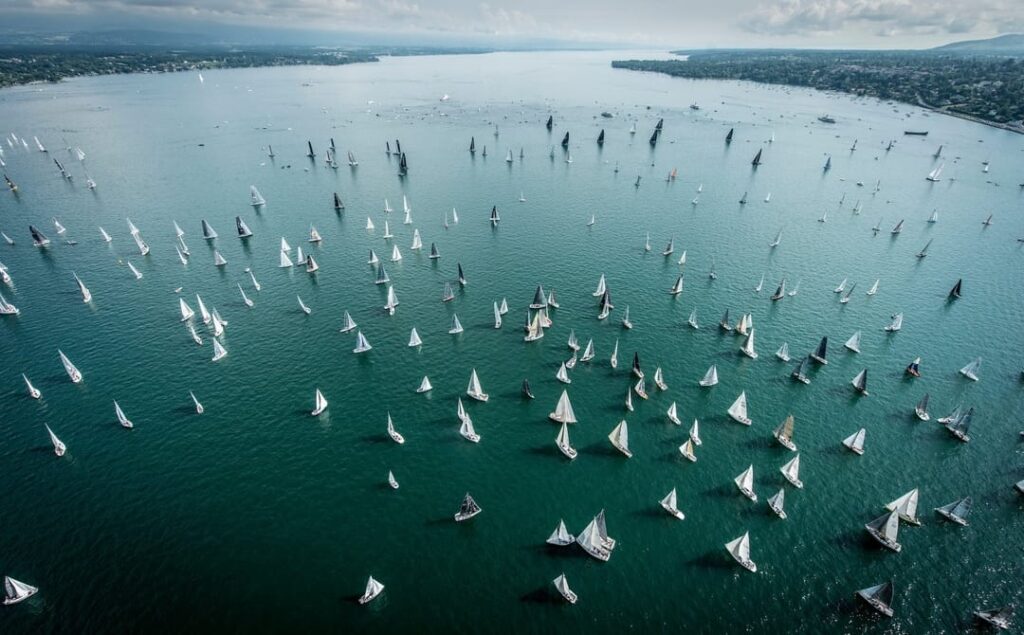
Sailing Abilities
Most cruising multihulls won’t point like a monohull with a deeper keel upwind, and the motion may be rather unpleasant when sailing in rough weather. You must also keep a close eye on the sail area, but we’ll analyze this further below.
Moreover, catamarans are not suitable for racing and sailing sports. They can be fantastic for a holiday or even living aboard, but most racers would never buy one because of the stability. There is no sense of wind, waves, flying, or the boat itself on a catamaran. It’s quite tough to tell when it’s time to reef. While this can be done by feel on a monohull, there is specific instruction for catamarans as to what winds the sail area should be reduced.
When sailing to higher latitudes, like the North Atlantic, then a monohull would be a better solution than a catamaran. Residential areas are easy to heat and keep warm, and traditional metal may even melt thin ice. The contrary is true in the tropical zone, where huge catamaran salons would be unbeatable.
Monohulls can sail higher into the wind than most catamarans due to their keel. Daggerboards, which serve the same role as a keel and boost windward performance significantly, are common in some catamarans. However, daggerboards are not seen on 95 percent of cruising cats (those available for charter). Also, a monohull will be much easier to tack than a catamaran and glide lightly through the water. Moreover, in rougher seas, certain catamarans experience an annoying slapping of water on the bridge decks. A monohull responds to the helm more quickly than a multihull (in other words, they turn faster). This is due to the fact that most cruising cats have small “spade rudders” whose depth is dictated by the need for a modest draft. While with a keel, a monohull can have a more responsive rudder for its draft.
Monohull spreaders are 90 degrees to the mast, however, catamaran spreaders must be backswept. The reason for this is that a monohull has a backstay, and by combining it with the intermediates, you can achieve a lovely pre-bend in the mast. Keep in mind that the pre-bend is to flatten out the mainsail and allow for better performance.
Also, in order to pre-bend the mast on a catamaran without a backstay, you’ll have to utilize the backswept spreaders and diamonds. The reason I bring this up is that if you want to broad reach or run on a catamaran, you can’t let the mainsail out all the way because the backswept spreader tips could puncture the cloth. Because the spreaders on a monohull are at 90 degrees, you can let the main and boom out much wider, which is obviously more effective. This is one of the reasons why a catamaran should broad reach and tack downwind.
- Maintenance
Because catamarans have two of everything, there is a clear trade-off between maintenance costs, reliability, and redundancy. One of the most significant advantages of having two of everything is that you have a backup . As a result, even if one component fails, you can typically still utilize the boat, such as running on one engine while the other fails. While redundancy is fine, lower maintenance and repair costs are generally preferable. Although having two of everything provides you some redundancy, I doubt you’ll want to take the boat out if one of the two hulls “fails.” Of course, this means two hulls to clean and antifoul, double the engine maintenance, and so on , but having two of the important pieces of equipment, such as engines, outweighs the disadvantages.
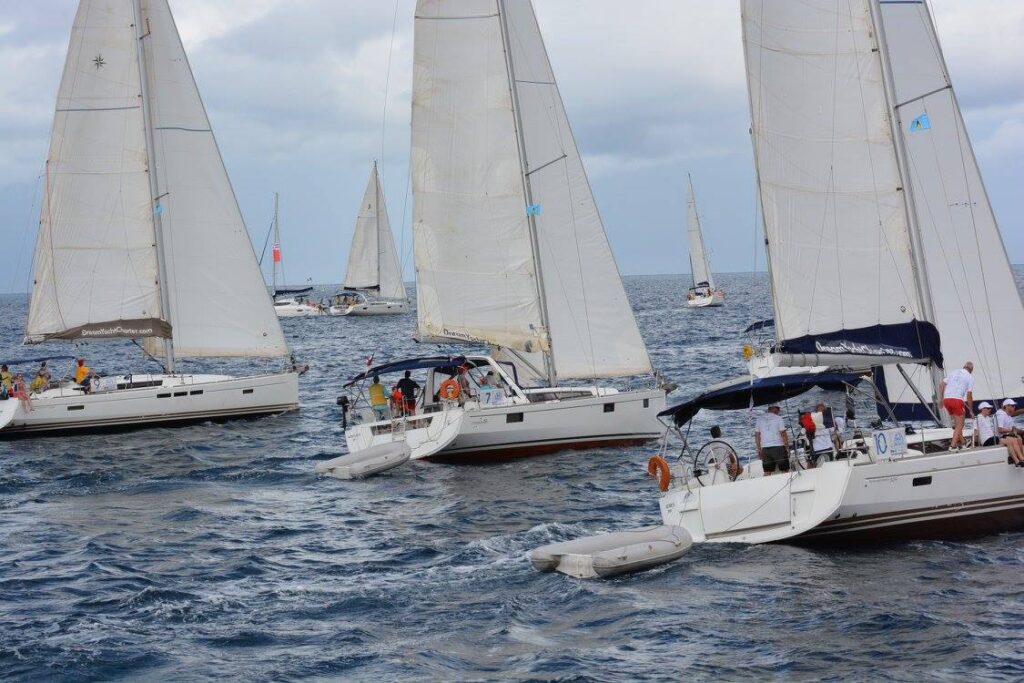
Due to their weight-bearing, catamarans have minimal to no heeling and do not roll at anchor. With sudden gusts, heeling on a monohull can be dangerous and uncomfortable, not to mention seasickness. Again, the trade-off is a noisy ride and fast movement, which many people find uncomfortable in bad weather. However, the heeling action of a monohull sailboat offers stability, spills wind from the sails, and provides safety.
Catamarans, unlike monohulls, do not have ballast in their keels, therefore they rely on beam and buoyancy for stability. Typical cruising catamarans have a beam-to-length ratio of around 50%, while several modern designs exceed this figure. A 45-foot catamaran will be around 22 feet wide, offering a highly solid sailing platform. Monohulls, unlike catamarans, cannot overcome rolling and pitching because of their narrow beam and lead ballast.
Rolling and pitching on a monohull while underway is quite dangerous. But, walking around on the deck of a catamaran while underway is easier because the boat is considerably more stable and does not heel. Sail adjustments and reefing are also significantly easier and safer for the crew as a result of this. The risk of falling overboard on a catamaran is far lower than on a monohull because of the rolling and pitching motion.
Generally, buying a catamaran is substantially more expensive than a monohull. So, if you opt for a cat you should also consider your budget before even starting your research. Pre-owned monohulls, on the other hand, are extremely inexpensive to purchase due to a current supply that considerably outnumbers the demand.
Nowadays, catamarans are in high demand , and they normally keep their worth far better and longer than other types of boats. And that’s why the market is currently centered to manufacture lots of them. Bear in mind that looking for a catamaran under $250,000 your options will be limited, and finding a catamaran under $100,000 is nearly difficult. Unless you opt with older boats like the Prouts or the less priced Geminis, a monohull is your best bet in this instance.
The cost of a cat rises if you need at least two of everything. But, keep in mind that due to their popularity, catamarans have a high resale value and a low depreciation rate , and they normally sell faster than monohulls. Due to the fact that most catamarans are not made in the United States, delivery expenses must be considered when purchasing the boat. Multihulls are becoming more popular, and as a result of the increased demand, they command greater prices in both the new and brokerage markets. Lastly, when considering a purchase, keep in mind that maintenance costs are substantially higher than on a monohull.
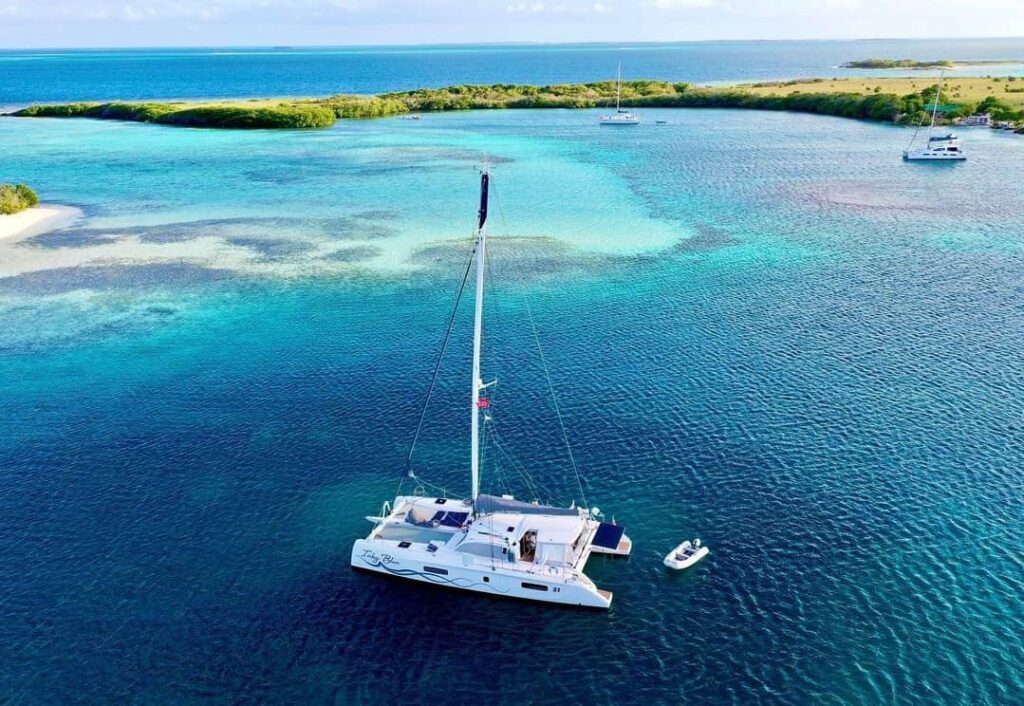
Catamarans vs Monohulls – The Bottom Line
So, this is it! We’ve come to the end of this highly discussed topic among sailors. Obviously, everything would be determined by two basic factors: personal preferences and budget considerations. Both monohulls and multihulls have their pros and cons and it’s totally up to you to decide which one suits you best. Because the two types of vessels provide such a different experience, it is highly recommended that you rent and test each one before purchasing to compare everything. In any event, it’s reasonable to say that a catamaran is an excellent choice for a charter, if not for purchase. Despite its high price, it provides comfort, space, and stability but you have a better overall sailing experience with a monohull. So, I hope that this article will help you make the right choice according to your needs. I wish you good luck with your research!
Peter is the editor of Better Sailing. He has sailed for countless hours and has maintained his own boats and sailboats for years. After years of trial and error, he decided to start this website to share the knowledge.
Related Posts

The Ultimate Guide to Choosing the Best Fishing Line for Trolling

Lagoon Catamaran Review: Are Lagoon Catamarans Good?

Best Inboard Boat Engine Brands

Are O’Day Sailboats Good? A Closer Look at a Classic Brand
- Buyer's Guide
- Destinations
- Sailing Info
Hit enter to search or ESC to close.
- About Sailonline
The One Source For Yacht Charters And Charter Yacht Ownership

- What is boat chartering
- Choose your best charter type
- Choose your charter company
- Choose a cruising area
- Choose the right boat
- Booking your charter
- Your sailing resume
- Yacht Charter Destinations Chart
- Catamarans vs. monohulls
- Bareboat Destination Skills
- Sailing Area Table
- Caribbean weather info
- What to pack for your charter
- Charter boat checklist
- Internet access on charter
- Briefing your charter crew
- Saving money on charter
- All boat charter tips in 1 file
- Budget Charter Fleets
- Provisioning a charter boat
- Booking directly with a boat owner
- The charter days you really get
- Managing your boat on charter
- Boat charter with kids
- Seasickness tips
- Starting a charter from the USVI
- If you damage a charter boat
- Flotilla charters
- Charter with a handicapped child
- Crewed yacht charter myths
- Organize a crewed charter
- Crewed charter tips
- Browse The Database
- Submit your Boat Listing
- Yacht Management Contract
- Buying a boat with a partner
- Bareboat vs. crewed yacht
- Charter Yacht Phase-out
- Phase-out punch list
- Yacht & Marine Surveyors
- Charter Boat Owners forum
- Yacht financial management tools
- 2nd tier fleets financial comparo
- Active ownership FAQ
- Layman guide to charter boat ownership
- Is Buying A Charter Boat For You?
- Buying a used charter boat
- Yacht buyer representation
- Bareboat vs. crewed yacht ownership
- Active Yacht Ownership
- Customers' Testimonials
- Cruising Logs
- Captain licenses
- 'Heaving to' maneuver: A must
- Charter Boat Seamanship Manual
- Yacht Crew Certification: All answers
- Snorkeling & kayaking safely
- Rules of the Road
- MOB Crash-Stop Maneuver
- 5 Knots you must know
- Flag Etiquette
- Emergencies on charter
- Distress calls at sea
- Navigation on a yacht charter
- Navigation aids sheets
- Estimate distances at sea
- Heavy weather basics
- Caribbean weather information
- VHF use: The basics
- Raising Main Sail | UnPC
- Anchoring technique & hand signals
- Catamaran sailing tips
- Docking: Avoid the embarrassment!
- Mooring technique
- Med-mooring technique
- Dinghy handling: make the best of it!
- Reefing a Catamaran
Remember Me
- Forgot your password?
- Forgot your username?
- Create an account
Catamarans - Monohulls: Pros and Cons

With catamarans vastly popular in the charter industry, and showing no sign of abating, let's compare the pros and cons of monohull and catamaran strictly on the charter work point of view . The reason why this distinction is important – and I write this as a monohull fanatic myself - is because for charter companies, catamarans are in huge demand due to the overwhelming number of advantages they offer. Out of charter use, there is no question for me that, when the offshore going gets tough, I would much rather be on a solid monohull than on a catamaran - although the catamaran builders have come a long way to strengthen comstruction. But this is just a matter of opinion!
Catamaran Pros
On deck The cockpit, highlight of catamarans, is usually huge, since it spans over both hulls. The cockpit and the salon are on the same level, which enhances the feeling of light and spaciousness, along with the typical huge panoramic windows. The foredeck area is very large as well and sports a big pair of nets between the hulls, the notorious trampolines, which make a great sun bathing area. In any case, it is a great observation spot and a kids' favorite. As a result of this roominess, a catamaran rarely feels crowded, as it is relatively easy to get some seclusion and quietness from other members of the party. Most cats are equipped with dinghy-davits at the transom, which is absolutely great: no more towing the dinghy, thus no more drag on the boat speed.
Down below The catamaran will provide you with considerably more room than a monohull almost everywhere on the boat: in the cabins and in the salon. Besides, there is ample headroom everywhere. A typical 43/47 ft. cat will have 4 large staterooms, with rectangular queen-size beds – no more of those pointy beds! - each with en-suite bathroom. A 38 to 42ft. will have 3/4 staterooms and 2/3 bathrooms. Most cats have an enormous salon/cockpit combination capable to entertain about 20 people in style! Because of the cats’ layout configuration, there is full privacy in every cabin and one does not hear anything from one cabin to the other.
Stability The key fact is that catamarans have a phenomenal stability: they do not heel under way and do not roll at anchor. This usually makes seasickness a non-event. Incidentally, it makes it somewhat safer for kids running around. Whether at anchor or under way, a catamaran is always much more stable than a monohull. Stability is also a good factor for elderly people and/or first time sailors. As a matter of fact, a catamaran will give the latter an excellent impression for their first cruise, instead of memories of being seasick!
Speed & maneuverability There is no question that catamarans are faster under power or sail. Whatever your cruising goals are, catamarans will usually move you about more quickly than a monohull. Catamarans have shallow drafts. This means catamarans can get into places monohulls yachts often cannot reach, and that they can also anchor closer to shore. However, more and more charter cats now have small "sacrificial" keels to improve close-hauled performance. Lastly, I personally enjoy the phenomenal maneuverability of the cats. With 2 engines spread apart, you can pivot a cat of any size literally around the boat's central axis – and without the help of the rudders. The autopilot works particularly well on cats, on a tracking standpoint.
Catamaran Cons
A hard-core monohull sailor once said: "When I sail a cat, it feels like I am driving my living room!" He meant that a cat does not convey the "real" feeling of sailing, with the "rail in the water" as sailors say. That is precisely because a cat does not heel, whereas a monohull does, and sometimes a lot. So if you are in for hard, pure sailing, you will not get that felling on a cat. Only a monohull will give you the full experience!
A cat does not typically sail well upwind and needs a different technique for tacking and anchoring. ( See tips for cat handling ).
It is often said that anchoring a catamaran can be more difficult. This is due to the fact that catamarans have more “windage” than monohulls, and, without keel and ballast, they have a tendency to “bob” on the water when a gust hits. ( See tips for cat anchoring )
Obviously, catamarans take up twice as much docking space as monohulls. This can be a bit of a problem in chartering areas where spending nights in marinas is a necessity.
If you are bringing with you a party of first-time sailors, or older people, or people who could feel apprehensive at sea, you probably will better off with a cat.
- PREMIUM FILES
- Pre-Owned Yachts
- Charter Boat Owners/Buyers Forum
- Favorite Links
|
|
| Built their boat. |
Copyright ©2000 - 2022 Sailonline.com. Unauthorized reproduction prohibited. Sailonline is not affiliated with any charter company.
- Articles and Guides
Catamaran vs Monohull: The Great Sailboat Debate
16th jun 2023 by john burnham.

Do you love the natural sounds of water sliding past the boat’s hull and a breeze blowing across your rigging and sails while gliding ahead powered only by the force of the wind? If yes, you are well-suited to spending plenty of time on a sailboat, like so many generations of boat people before you.
But do you take your lead from the Egyptians who rigged sails on their boats built of reeds along the Nile River or follow the path of the Polynesians, who used an outrigger for extra stability and sailed from one Pacific island to the next in the earliest catamarans?
The question of which is better for sailing, one hull or two, has been a matter of debate over thousands of years. Today, let’s explore these two basic types of sailboat, and while we may not settle the argument once and for all, hopefully in the process you will begin to discover which option is better for you.
What Are the Differences Between Catamaran and Monohull Boats?
The monohull and the catamaran (often referred to as “cat”) are the two most common categories of sailboats, and of the two, the monohull far outnumbers the catamaran in popularity due to its simplicity and sturdiness. Advocates of the catamaran, however, are typically even more convinced than monohull sailors that their boats are best due to performance potential and overall spaciousness.
What are catamaran-style boats?
Catamarans are easily identified by their two-hull design. Two hulls sit side by side with an interconnecting deck or structural beams across the bap in the middle. Catamarans have been around since Pacific Islanders and other Austronesian people sailed them centuries ago, and they continue to gain popularity in a wide range of designs both as high-performance racing boats and ocean-cruising designs.
Although not part of this debate, a third sailboat type comparable to a catamaran is a trimaran. Trimaran sailboats are constructed similarly to catamarans but have three parallel hulls rather than two. Collectively, catamarans and trimarans are referred to as multihulls, and sailors of both types often refer lightheartedly to monohulls as “monomarans.”
What are monohull-style boats?
Monohull sailboats are the most common boat type because they feature a single hull, typically with a single mast and two sails. Rather than maintaining stability with a second hull creating a wider beam, monohull boats usually carry lead or other heavy ballast in their keel, or are stabilized by human weight as their crews lean out to counter the force of the wind. Monohulls can also be excellent racers and cruisers, depending on their size, volume, sail area, and displacement or weight.
Where Catamarans and Monohulls Excel
Each type of boat has its advantages, depending on what the owner wants in a boat. Here are the main advantages of each type.
Catamaran advantages
• More space . Catamarans have greater beam for a given length, which provides more space for the crew on a daysailer and larger living quarters on cruising designs, which are often laid out with berths in each hull and living quarters across the bridgedeck between hulls.
• Faster hull . If they are light enough, the sleeker shape and reduced wetted surface of two narrow, shallow hulls can produce quicker straight-line sailing speed than a single, deeper and wider hull.
• Comfort and stability . Two hulls provide better initial stability and generally heel less than monohulls, especially in light- or medium-strength winds and waves.
Monohull advantages
• Upwind sailing . When sailing against the wind, monohulls often sail at a closer angle to the wind and arrive more quickly at their destination.
• Easier motion . Heavier monohulls often have a slower, gentler motion in waves than a lighter catamaran.
• Load carrying capability . A monohull’s performance is reduced less than a catamaran’s when the boat is loaded heavily with cargo or crew.
• Righting characteristics . Larger monohulls have weighted keels that provide increased resistance to a capsize when the boat is heeled far over by wind or a wave and if capsized will return the boat to an upright position.

Catamaran vs. Monohull Sailing Speed
There are several reasons why a catamaran is often faster than a monohull boat. These include the fact that most catamaran hulls have less water resistance than monohulls, they are often lighter, and they can be more easily driven by a relatively small sailplan. At similar lengths, a catamaran can be dramatically faster than a monohull under similar sea conditions. However, weight is the enemy of a catamaran’s speed; a heavy or heavily loaded catamaran may be much slower than a lightweight monohull.
Catamaran vs. monohull power
A monohull under auxiliary power may be faster than a catamaran in certain conditions, like powering against a strong wind. In other wind and wave conditions, the catamaran is often faster. Also, with an engines on each hull, the cat is often much more maneuverable in close quarters or at the marina. While it may seem counter-intuitive, turning and controlling the boat is often less challenging than when sailing a monohull boat with the typical single engine. Monohull boats require more finesse when in tight quarters like berthing in a marina.
Catamaran vs. Monohull Efficiency
A sleek monohull may sail against the wind super efficiently, pointing close to the wind and making an excellent speed. However, the power-to-weight ratio of the catamaran allows it to make good use of whatever wind it has. Some fast, light catamarans can travel at speeds equal to or faster than the wind, something very few monohulls can achieve. When the wave action increases and you start sailing into the wind, the catamaran may lose its advantage, and in strong winds, the greater windage of the wide catamaran may have a pronounced slow-down effect compared to the sleeker monohull.
Catamaran vs. Monohull Stability
Despite not having a weighted keel, a catamaran design is able to avoid heeling over in strong winds or bad weather due to its greater width or beam. As a result, the multihull also tends to be more stable at anchor and any time in calmer seas. However, if the winds are strong and the waves are large, a monohull, with its keel weight and ability to sail against the wind while controlling the sails, is sometimes the steadier of the two types. While a monohull with weighted keel can be knocked down by strong gusts of wind, it will only capsize in extremely large waves. Likewise, a cruising catamaran can only capsize in large ocean waves, unless it is a fast, lightweight catamaran, that can more easily tip over in gusty winds and waves.
Catamaran vs. Monohull Safety
Power catamarans and power monohulls are relatively comparable in terms of safety. But depending on the size of the mast and sails, the weight of the boat, and the wind and wave conditions experienced, many sailors believe that a monohull configuration is safer than a catamaran for a sailboat. That’s mainly because while a monohull will initially heel over further in a strong gust of wind, the weight of its keel provides increasing stability as described above and if completely capsized, the keel typically helps the boat self rescue.
It should be clarified that many sailing catamaran designs are conservatively configured and difficult to capsize except in extreme ocean wave conditions—and the same can be said for larger power catamarans.
In terms of ultimate safety in the event of a capsize, however, the catamaran is considered safer because even should it turn once upside down, even if damaged, the catamaran with its two hulls and minimal ballast typically remains buoyant and provides a safer configuration in which to await rescue. By contrast, if a monohull’s hatches and port windows suffer damage in a knockdown, the boat can more quickly take on water and, weighed down by its keel or other ballast, be more difficult to keep afloat in extreme conditions.
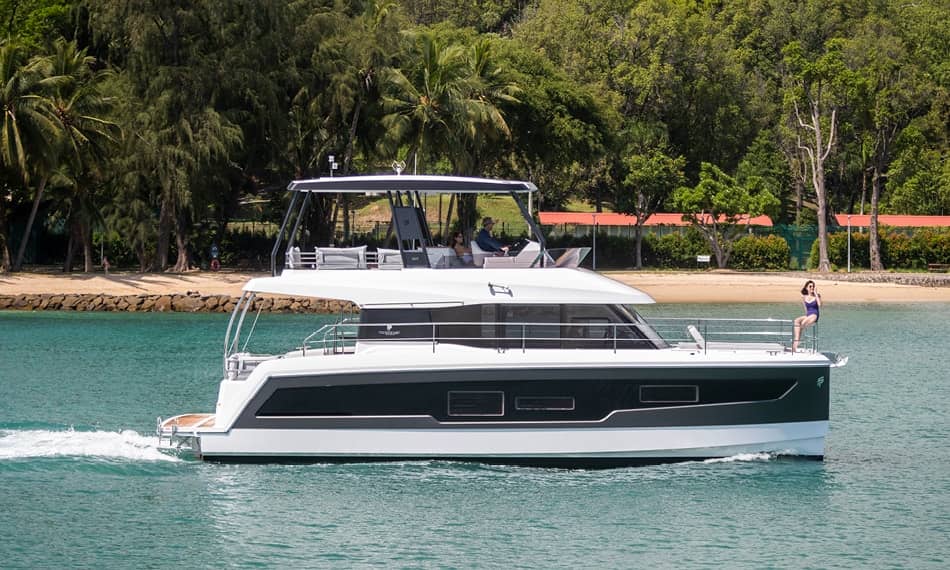
Photo credit: Fountaine Pajot
Monohull vs. Catamaran Maintenance
Depending on size, age, and type of hull construction, maintenance costs will vary, but when comparing two fiberglass sailboats of similar length, the catamaran typically costs more to maintain. That’s because there are two hulls to care for, two engines, connecting structures that align the two hulls, and an overall larger boat due to the catamaran’s greater beam. Hauling and launching a catamaran can be more expensive at many boatyards, as well.
However, smaller catamarans of about 20 feet in length or less are often more comparable and sometimes cheaper to maintain than a similar length monohull. That’s because cats are often lighter and suitable for keeping on a trailer rather than in a slip or on a mooring.
Catamaran vs. Monohull Cost
Compared to similar length monohulls, a catamaran will likely cost more than a monohull boat. That’s mainly because when you purchase a 40-foot catamaran, you are buying two hulls and two engines, but you are also buying a bigger boat that typically has much more volume. In the case of a 40-footer, you end up with a boat that has a large saloon and three or four private cabins, whereas in the monohull, the saloon is smaller and you’ll have three smaller sleeping cabins. Annual maintenance will also be greater, as described above.
Among smaller catamarans and monohulls, pricing will vary, and a lightweight beach cat may be less expensive than a heavier monohull keelboat of similar length.
Catamaran vs. Monohull, Pros and Cons
Depending on a variety of factors, there are plenty of catamaran and monohull pros and cons. These are some to keep in mind when comparing the two boat types.
Catamaran pros
• Comfort . On a cruising designed catamaran, two hulls with a wide beam create a stable and comfortable living environment with open spaces and plenty of standing room.
• Speed . Smaller, lighter catamarans are speed champions, especially in a moderate wind and modest waves. Cruising cats are often fast when sailing at reaching angles.
• Maneuverability . When equipped with two engines, a catamaran is highly maneuverable under power.
Monohull pros
• Upwind sailing . Although catamarans are often faster when sailing in a straight line, monohulls typically perform better against the wind.
• Self-righting . Except for unballasted monohulls that rely on crew weight for stability, the ballasted keel of a monohull prevents capsizing in most circumstances and the keel makes the boat self-righting.
• Maneuvering under sail . Monohulls turn more easily due to their shape, maneuvering in close quarters or tacking when sailing against the wind.
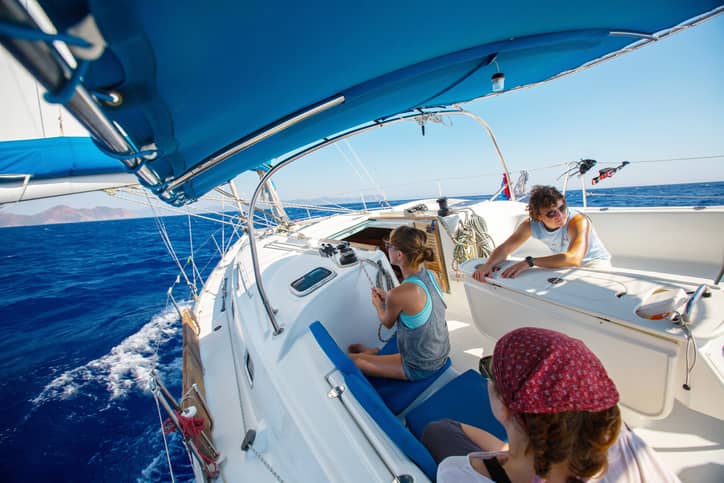
Catamaran cons
• Lack of feel when steering . Except in lighter, more performance-oriented catamarans, the broad platform with two rudders and two hulls sometimes isolates the sailor and provides little feedback through the helm when under sail.
• Sailing against the wind . Upwind sailing is generally not a catamaran’s best point of sail, but its straight-line speed can be such that it may arrive quickly at its destination, even though you will have traveled much farther than in a monohull.
• Pricing . Catamarans are typically more expensive than monohull boats due to their two hulls and other required build components and complexity.
• Not self-righting . Thanks to its wide beam and two-hull design, a catamaran is more difficult to flip, but it is not designed to right itself except for small beach cats where the crew can use their weight to re-right the boat.
Monohull cons
• Weight . Most monohulls have thousands of pounds of weight in the keel for ballast that is vital to its stability but can degrade performance.
• Wave motions . Monohull boats are much more susceptible to rolling wave motions.
• Cabin . With the monohull cruising design, you'll typically find a darker interior with smaller port windows and fewer space options.
• Heeling effect . Monohulls will heel over in a moderate wind, which is normal but often uncomfortable for newer sailors.
Written By: John Burnham
John Burnham is a marine editor and writer with decades of journalism experience as Chief Editor of boats.com, Sailing World, Cruising World, and other boating websites. As a competitive sailor, he has led teams to world and national titles in the International One-Design, Shields, and other classes. Based in Newport, Rhode Island, John is a PCC leadership coach, a member of the America’s Cup Hall of Fame Selection Committee, and a past board member of Sail America and US Sailing. For more, see johnsburnham.com .

More from: John Burnham
Related Articles and Guides
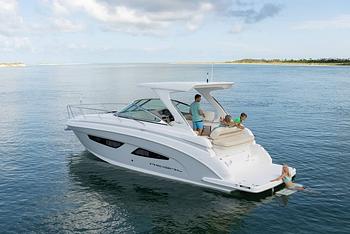
6th Sep 2024
The Best Mini Yacht Brands for Cruising and Luxury
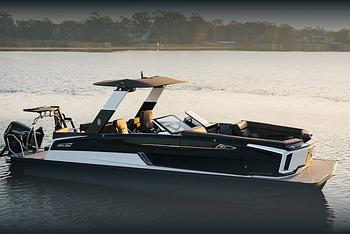
16th Aug 2024
Best Luxury Pontoon Boat Brands Have it All: Glamor, Speed, Fishing, Waterslides...
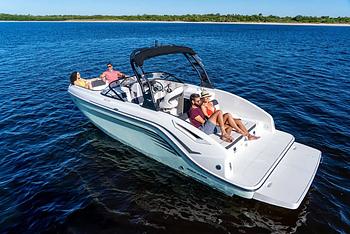
10th Aug 2024
Deck Boat vs. Bowrider: Which Runabout is Best?

19th Jul 2024
The World’s Best Yacht Brands

- Explore Rightboat
- Boats for Sale
- Boating Articles
- Buyers Guide
- About RightBoat
- Sell Your Boat
- Boat Selling Advice
- All manufacturers
- All categories
- Are you a broker/dealer?
- Learn more about the Rightboat:HUB
Enter your email to keep up to date with the latest news
Join for free
Sign up now for free and discover how easy it is to keep up to date with THE latest boats for sale. Find your right boat, and tailor your voyage to finding your next boat.
Benefits of becoming a member:
- Set up tailored alerts
- Personalise your experience
- Download full specifications and broker details
- Keep tabs on your favourite boats
Are you a broker? Join as a Broker
Rightboat - join for free.
Do you have an account already? Login
Save this search
Save your search and receive new boats in your email..
You can unsubscribe from your alerts whenever you like. By pressing the button you accept the Legal Terms and conditions

My Cruiser Life Magazine
Monohulls or Catamarans – Which is Best for the Cruising Sailor?
The debate between catamarans vs monohulls still rages, and most boaters are firmly on one side or the other. The truth is, either a catamaran or a monohull can provide a wonderful way to enjoy sailing, traveling, and being on the water.
Both have advantages and disadvantages, and both have large and loud fan clubs. The choice between a catamaran and a monohull depends on your budget, lifestyle, and personal preferences.
My wife and I have owned both types of vessels over the years. After five years of cruising on a Lagoon catamaran, we decided to go old school and bought our current boat—a heavy, full-keel monohull. The catamaran was fun, for sure—but it wasn’t for us in the end. Here’s a look at all of the differences we learned about during our journey.
Table of Contents
Life at anchor, life at a dock, life underway, living space, storage space, ride comfort and motion at sea, maintenance time and costs, docking and maneuvering, capsize risk, hull breach scenarios.
- Rigging Safety
Rigging Strength and Configuration
Monohull vs catamaran speed, thoughts on catamaran vs monohull for circumnavigation, deciding monohull vs catamaran, faqs – catamarans vs monohulls.
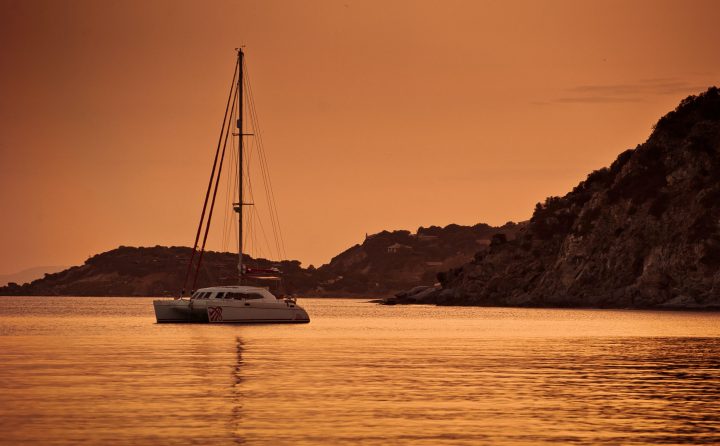
Life on Sailing Catamarans vs Life on a Monohull Vessel
At anchor, a catamaran provides superb comfort and living space. The “upstairs” cockpit and salon mean that boaters can enjoy non-stop wrap-around views. Monohull boaters are stuck in their caves and must peek out of their small portlights or climb into their cockpits to view the world.
A modern catamaran will also have swim steps that make it easy to get on and off the boat and provide easy access to dinghies and water toys.
If there’s an uncomfortable roll or swell in the anchorage, the catamaran’s stability will make the roll a bit less noticeable. Monohull boaters are more likely to be adversely impacted in a rolly anchorage. This does not mean that the cat owners are getting a perfect night’s sleep every evening, however. Catamarans just have a different motion in rocky anchorages, not a lack of motion.
Life at a dock gets a little more tricky for catamarans. Most marinas were built long before the catamaran trend and feature traditional slip sizes meant for monohulls. Marinas have to put catamarans on t-heads or make other accommodations. Therefore, it can be harder and more expensive to find a catamaran-friendly dock.
Once at a dock, the massive space of a catamaran can be harder to heat and cool efficiently. Catamarans usually need several air conditioners or heaters installed, whereas a monohull can get by with only one or two. That also means that cats might need more power (50 or 100 amp service instead of 30 amp) than some marinas can provide.
Monohulls will have fewer issues finding marinas that can accommodate them, and they pay standard rates.
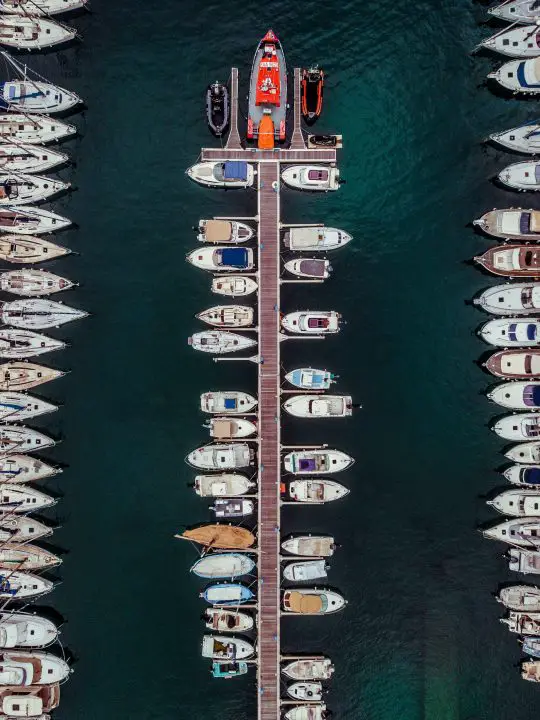
When sailing in protected waters, catamarans usually speed past their monohull friends. A catamaran provides a flat ride and sailors can move around their boats easily to make sail changes as needed. Walking on a catamaran’s deck is undemanding.
Catamaran sailors also have many options to rest comfortably underway. Because catamarans don’t heel over, catamaran sailors can sleep in their usual cabins. They can move about the interior of the boat with ease. Cooking in the galley doesn’t usually look any different underway.
In similar conditions, a monohull will heel over. Some sailors love the feeling of being heeled over and feeling the wind in their hair. Some don’t. It can be more challenging to walk the decks and work sails on a monohull vs a catamaran. While in the cockpit, monohull sailors will want to sit on one side and may even need to brace themselves to stay comfortable. For long trips, there is no doubt that living while heeled over for days at a time is exhausting.
Moving around the interior of a monohull boat at sea is also more challenging. Monohull sailors usually sleep in sea-berths with lee cloths instead of their usual quarters. It would be very uncomfortable to sleep in a v-berth underway, as the bow may be continuously pitching in seas. The lee-cloth in the sea-berth helps keep a resting sailor in their berth instead of falling onto the floor.
Monohull boats have gimbaled stoves. Even while the boat is heeled over, the galley stove will remain level. However, cooking in a monohull while underway is still more challenging than cooking in a catamaran since the cook needs to constantly brace themselves against the heel and rolling motion.
At the same time, none of this is to say that catamaran sailors have it easier at sea. In reality, catamarans may be more level, but they feel every wave in the ocean twice. The result is a choppy, bumpy ride with no rhythm. It can be just as tiring as being heeled over in a monohull.
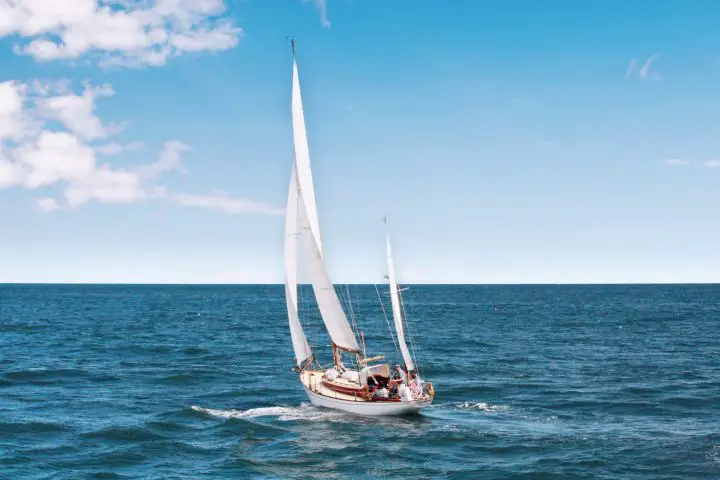
Catamaran vs Monohull Sailing Compared
Here are just a few ways that catamarans differentiate themselves from monohulls as platforms for living aboard.
- Living space—quantity and quality
- Storage space and weight
- Budget—purchase and routine maintenance
- Maintenance
- Catamaran vs Monohull for Circumnavigation
- Docking and close-quarters maneuvering
Catamarans have significantly larger and often more attractive living spaces. On the other hand, the living space on a monohull is usually small and can be dark due to small windows.
A monohull’s cockpit tends to be small and focused on safety. Families are more likely to feel in each other’s way, and moving around while others are seated can be awkward. On a catamaran, the cockpit is likely to be large and social. Catamaran cockpits have large tables and lots of lounging space in the cockpit.
Catamarans have large trampolines forward, which provides another comfortable, social lounging space that monohulls lack. Many catamarans also feature additional lounge space via the large cockpit roof.
The salon on a monohull is located in the main cabin. A monohull’s salon will be smaller than a similarly-sized catamaran. Often there is a small table, room for several people to sit, and a single sleeping berth.
Catamarans feature a wide bridge deck that crosses both hulls. This large living area features great visibility, ventilation, and natural light. On some catamarans, the galley is located on the bridge deck (called “galley up”), and on others, the galley is located in one of the hulls (called “galley down”).
Monohulls have sleeping quarters in the bow and stern of the boat. On smaller monohulls, the main sleeping area is usually a v-berth. Older, smaller monohulls usually have just one head.
On a catamaran, the sleeping quarters are located in each hull. These cabins often feature regular-sized boat beds and large en-suite heads. Cabins on a catamaran usually offer more privacy than monohulls.
Catamarans are popular with charter companies because large families or groups of friends can enjoy living on a boat together in style and comfort. Each will have a private cabin and a private head. In addition, if you want to find space to exercise, do yoga, or watersports, you’ll find these activities much easier and more comfortable on a catamaran.
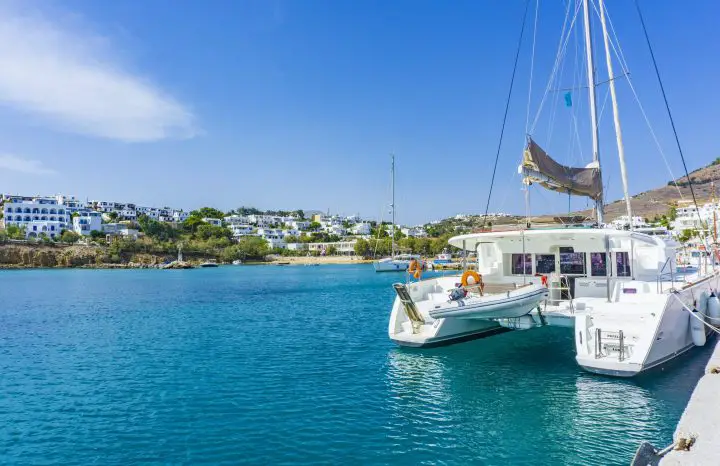
Catamarans have more space in general and certainly have more storage space. The additional deck space catamaran designs offer lends to easy storage for larger items, such as paddleboards and kayaks. Catamarans can often hoist and store larger dinghies than monohulls can. Large compartments make storage easy.
However, many catamaran owners are very cautious about storing too much. Additional weight can slow down a catamaran’s performance speeds. With so much space to put things in, it’s remarkably easy to overload a cruising catamaran. Many owners complain about the performance of smaller cats, when in reality they are often just badly overloaded.
Monohulls have less space and less storage. Finding space for big items like water toys can be challenging. But monohullers worry less about weight and freely carry around their cast iron skillet collections—because weight doesn’t impact performance on a monohull nearly as much.
This is a consideration when cruisers consider adding additional equipment. For example, a catamaran owner will have to consider the added weight of a generator and its detriment to sailing speed. In contrast, a monohull owner will have to consider finding space for the new generator.
Some prefer the motion of a monohull while sailing. Monohulls heel over but are steady, and sailors usually get used to the heeling motion. On a catamaran, if conditions are good, the boat won’t heel and will provide a comfortable ride.
When sailing upwind, some catamarans experience bridge deck slamming. Waves get caught between the two hulls and create a slamming motion and sound. It’s hard to predict the timing and strength of each slamming motion, so some catamaran sailors can find it tiresome.
The amount of bridge deck slam varies from boat to boat. Catamarans with higher bridge decks will experience less slamming, while boats with bridge decks closer to the water experience more.
Beyond that often-discussed issue, there is also the issue of the boat’s motion. It’s very difficult to imagine how different the motions are when compared to one another. The monohulls slice through the waves, usually with a predictable rhythm. A catamaran, built lightly to sail fast, feels more like it bounces over the tops of waves. The crew will feel each impact as each hull hits each wave. The result is a choppy, unpredictable motion—but it’s generally flat and level.
Monohulls have been around for ages. Therefore, sailors just starting out can find inexpensive, older monohulls. If you have a tight budget, you’ll probably start looking for a monohull.
Catamarans are newer to the market. Therefore, the initial purchase price of a catamaran is likely to be higher. Monohull buyers can often find a used, well-equipped, comfortable monohull for less than $100,000. Catamaran buyers usually spend upwards of $250,000 for a used cruising catamaran.
Because monohulls have been produced for so long, there is much more supply. The catamaran’s more modern pedigree means that there are always fewer catamarans on the market than monohulls. As more and more customers are drawn to the attractive living space and stable sailing offered by catamarans, demand keeps going up, while supply remains low.
Besides the higher up-front costs, catamarans are more expensive to keep and maintain. A monohull usually just has one engine. A monohull might have one head (bathroom) and will generally have less equipment. Monohulls have less space and storage, after all. Catamarans have twin engines, multiple heads, more hatches—more everything.
With more equipment, catamarans have higher maintenance costs. When a monohull owner services their engine, they have just one engine. A catamaran owner will need to service twin engines. Furthermore, each hull on a catamaran usually has separate and independent systems like bilge pumps, plumbing, fuel, water tanks, holding tanks…the list goes on.
A monohull owner will paint one hull bottom and wax only one hull. A catamaran owner will do everything twice. Therefore, the effort and cost of maintenance are often doubled on a catamaran.
Not only does it cost more money, it can also be harder to accomplish maintenance on a catamaran. You see, catamaran owners have fewer options to haul out. Most older boatyards have travel lifts that only accommodate boats up to 18 or 20 feet wide. Therefore, catamarans need to find a boatyard that has a large enough travel lift or a trailer to haul them. Because there is less supply and more demand for these larger travel lifts, the cost of hauling out a catamaran is often higher.
While some monohulls have lifting or swing keels and can reduce their draft, most catamarans have a shallow draft. This allows them greater flexibility while choosing anchorages. Even if a catamaran and monohull boat choose the same anchorage, the catamaran can get closer to shore and get better wind protection.
One final big difference between these two types of vessels is their ability to maneuver in tight spaces. Monohull sailboats are notoriously difficult to maneuver around docks and marinas. They often have poor visibility from the helm and difficult handling, especially in reverse. The single-engine design often requires a bow thruster, even on smaller boats.
The contrast that catamarans offer is pretty stunning. Even though they appear massive and ungainly in comparison, their twin engines mounted far outboard enable them to spin in their own length. Catamarans can be maneuvered in pretty much any direction using only differential thrust from the engines–all without a bow thruster.
Safety Considerations — Are Cruising Catamarans Safe?
Since most people have only limited experience with these vessels, many people wonder are catamarans safe. Even though they have been making large cruising cats for decades now, most of us have only really played on Hobie cats at the beach. And if there’s one thing we know about Hobie cats, it’s that they’re a lot of fun until you flip it over!
Here’s a look at a few safety considerations and how catamarans stack up against monohulls.
- Catamaran stability — capsize potential
- Hull breaches and sinking risk
- Rigging failures
- Designing for speed
- Redundancy on board
So, can you capsize a cruising catamaran? The answer is yes, no matter what the fanboys and girls say. It is technically possible but highly unlikely. Cruising cats are massive, and in all likelihood, you’re more likely to break the rigging than flip the boat. But in rough seas and extreme conditions, it does happen even on modern catamarans.
If a monohull encounters strong winds and rough weather, it will heel and roll significantly—but it will keep righting itself. In dire conditions, the vessel could suffer a knockdown. But a monohull will always right itself after a roll—it has tens of thousands of pounds of heavy keel to ensure that it does. Of course, the rig and anything on deck will sustain serious damage in the process, but the boat will be upright in the end.
In the same scenario, while unlikely, a catamaran can capsize. And the catamaran will then remain capsized, with no possibility of righting itself.
One of the scariest risks at sea is that of a serious hull breach, one that a bilge pump couldn’t keep up with. For example, a boat could be holed by an errant floating object or suffer a stuffing box or through-hull failure.
If a monohull sailboat is holed, it could sink straight to the bottom of the ocean. The crew would be left with only a liferaft and whatever they were able to recover before the sinking.
But a catamaran is filled with foam and is (more or less) unsinkable. If a catamaran experienced a hull breach or capsizes, it would take on water and may become less habitable. However, it will still float. In many cases, not much of the boat is left above the water—but it’s still at the top of the water.
Boaters may be able to perform emergency repairs and get the boat to port themselves. Or, they may have to stay with their vessel until help arrives. In either scenario, the crew maintains access to supplies and can stay with a much larger vessel, increasing the likelihood of being found and rescued.
Some catamaran sailors are so certain of their vessels floating in all scenarios that they don’t even carry a liferaft aboard. This is fool-hearty, to say the least, given the crazy and unpredictable things that can happen to any boat on the ocean. But one scenario is equally scary for the monohull or the catamaran sailor and should convince everyone that any offshore vessel should have a liferaft—the possibility of an uncontrollable fire.
Rigging Safety
When wind speed increases, a monohull will heel over. This heeling motion sheds the excess power of the wind. Monohull boaters should pay attention to the weather and reduce sail to ensure they aren’t overpowering the boat. This is why knowing how to reef a sail is so important for all sailors.
However, on a catamaran, the sails and rigging take the increased load when wind speed increases. Catamarans don’t heel, and therefore, don’t shed excess power. If the weather becomes gusty and a catamaran has too much sail up, all that extra power is transferred to the sails and rigging.
This can cause a dangerous situation. For example, there have been reports of catamarans being de-masted in sudden gusts of wind. In a worst-case scenario, a catamaran could capsize if they are over-canvassed when experiencing extreme wind conditions.
Most monohulls have strong standing rigging. The forestay is connected to a solid structure, the hull. This means that the forestay has a strong, stable platform and gives a monohull better upwind performance. Monohulls also usually have backstays, which provide rigging redundancy.
On a catamaran, the forestay is attached to a crossbeam. Because the platform is not as rigid as a monohull’s hull, the forestay is not as strong. In addition, catamarans usually don’t have backstays, and therefore have less rigging redundancy.
The configuration of the rigging is another rigging consideration. On a monohull, the spreaders and shrouds are perpendicular to the mast. Most catamarans come with fractional rigs that don’t have backstays, and their shrouds are set far back. Because of this configuration, catamaran sailors can’t let their mainsails out all the way on a downwind run because the shrouds are in the way. This leads to less efficient sail shapes when sailing downwind.
However, catamaran sailors can rig their sails to sail wing-on-wing. While monohull sailors can also use this configuration with the help of a whisker pole, catamaran sailors have a nice, wide, stable platform to fly large downwind sails.
There’s no doubt about it–catamarans sail faster. Most articles and comparisons state that catamarans are about 20% faster than a similarly sized monohull. Catamarans have a lower wetted surface area and less drag than monohulls. They’re especially nice to sail in light winds, conditions that heavy cruising monohulls tend to not do well in.
While most cruising cats can’t sail upwind as high as monohulls can, they still win the race. However, if a catamaran has daggerboards and a good sail inventory, it can point as well as a monohull.
Many boat owners believe that speed equals safety, as you might be able to outrun an impending storm. That’s a debatable strategy since weather systems often move faster than any cruising boat can move. It has a lot more to do with planning and the decisions made by the skipper, in the end.
Furthermore, more speed means a rougher ride. A heavy, full-keeled monohull might not move very fast, but the sea-kindly and forgiving ride means a more comfortable and better-rested crew. This only goes to illustrate that the “more speed” argument is far more of a personal preference than many sailors admit—especially when it comes to long-distance cruising.
A faster boat provides a skipper with more options, but it does not ultimately equal inherent safety. That will always come down to the skipper and the crew, and the choices they make. A slow boat in the hands of an experienced and careful crew will always be safer than a fast racer under the command of an inexperienced and green crew. In other words, there is no replacement for seamanship and careful planning.
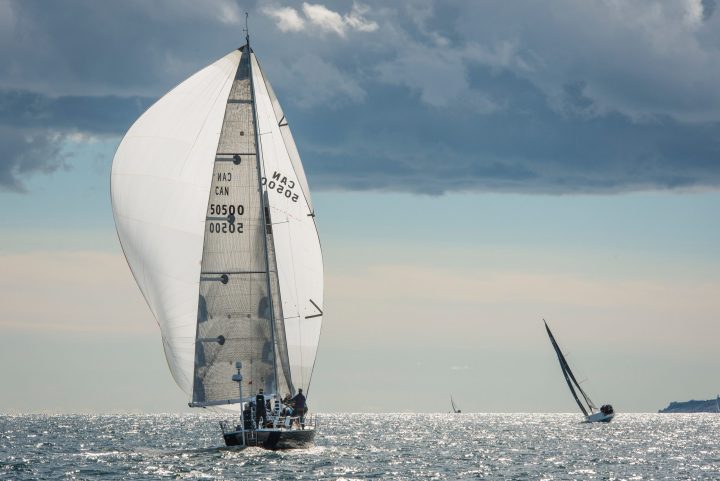
Catamarans have two of everything. While this does equal double the cost and maintenance, it also provides redundancy. If a monohull’s single engine dies and there is no wind, they may have to call for a tow or wait for wind. If a catamaran’s left engine dies, sailors can just continue on the right engine.
Twenty years ago, the majority of boats completing circumnavigations were classic bluewater monohulls. Monohulls are considered safe and capable circumnavigators.
But today, catamarans are establishing themselves as the more desirable choice for many circumnavigators. Catamarans are fast, stable, and capable of crossing oceans. In addition, catamarans can carry significant supplies and offer redundancies. Plus, the extra space that catamarans provide also means that the crew will enjoy watersports like diving, paddle boarding, and surfing.
Since nearly all traditional routes are downwind “milk runs,” catamarans naturally excel along the way. If you take a look at the competing boats for the World ARC rally for the last few years, a definite trend is growing. More catamarans compete every year. Common entrants include Lagoon 450s and Antares 44s.
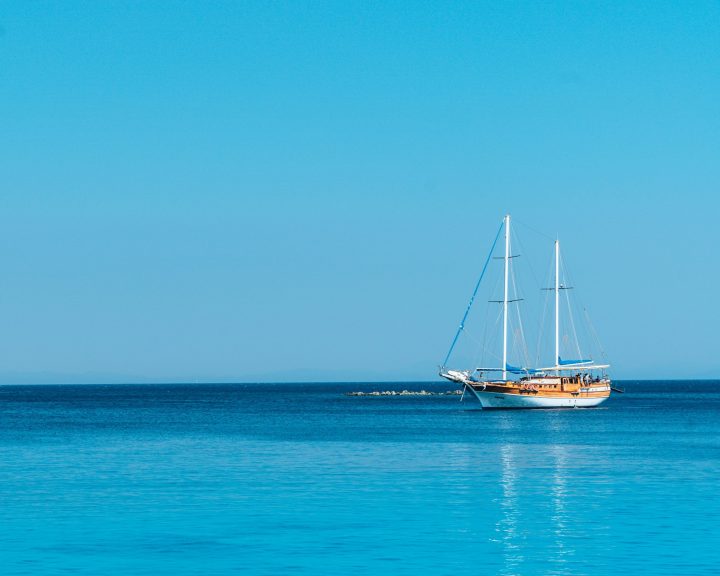
One of the most significant decision points when thinking about catamarans versus monohulls is your budget. If your budget is under $100,000, a monohull will be your best bet. If your budget is between $100,000 and $250,000, you can consider a smaller, older catamaran. Catamarans such as PDQs, Prouts, and Geminis will be in your budget. If you have a budget of over $250,000 and can afford higher dockage and maintenance costs, you can consider a catamaran.
Next, consider your comfort level. To try it out, you might want to charter both a monohull and a catamaran. Check out a sailing vacation in the BVI or with a company like Cruise Abaco. Taking classes at our local sailing school might also be helpful. https://cruiseabaco.com
Many folks are attracted to the larger, more comfortable spaces of a catamaran. However, some people feel more seasick on a catamaran and can’t get used to the motion. So a lot of your decision will come down to personal preference.
If you can’t imagine squeezing into a darker, smaller cabin in a monohull, then a catamaran might be calling your name. On the other hand, if you are a traditionalist who loves heeling and boats with a lot of teak, a monohull might be your dream boat. It’s just impossible to know how a boat will make you feel until you’ve experienced both.
Boaters often discuss the compromises involved in boat choices. Whether you choose a monohull or a catamaran, there will be some compromises involved. However, no matter which boat you choose, you can enjoy smooth sailing, beautiful anchorages, and some adventure along the way.
Worried about getting caught in severe storm conditions in your boat ? Visit our guide!
Which is better monohull or catamaran?
Both monohulls and catamarans are popular choices for cruising sailors. Which one is better depends entirely on your personal preferences and which boat is more comfortable and appealing to you. If you are on a tight budget, a monohull is your best choice. On the other hand, if you love large open living spaces, a catamaran will be the better option.
Which is safer catamaran or monohull?
When wondering are catamarans safe, always remember that the primary determinant of the safety of a vessel is its captain, not the vessel itself. Both monohull sailboats and cruising cats have important limitations that their skippers must know and abide by.
Some consider catamarans safer because they are virtually unsinkable. If it has a hull breach or capsizes, it will still float.
Others see the sea-kindly monohull to be the safer bet, as they are better designed to protect their crews from the elements in severe weather. They also cannot capsize, as their ballast provides a righting moment in all conditions. But on the other hand, if a monohull experiences a hull breach, it can sink.
Can catamarans handle rough seas?
Modern cruising catamarans are built strong enough to cross oceans and survive in all kinds of conditions. It might be an uncomfortable ride, but not an unsafe ride. In the end, it is the skipper of the boat who ensures its safety at sea. Good seamanship makes a far bigger difference in how a boat handles rough seas than the design of the boat does.
In extreme conditions, such as hurricanes or sudden gusty winds, catamarans can capsize. Once a catamaran has capsized, it won’t right itself. However, it will still float, although upside down. Heavy seas are more likely to cause maintenance and chafing issues on both catamarans and monohulls.
Matt has been boating around Florida for over 25 years in everything from small powerboats to large cruising catamarans. He currently lives aboard a 38-foot Cabo Rico sailboat with his wife Lucy and adventure dog Chelsea. Together, they cruise between winters in The Bahamas and summers in the Chesapeake Bay.

Catamarans vs Monohulls: Which Is Better for You?
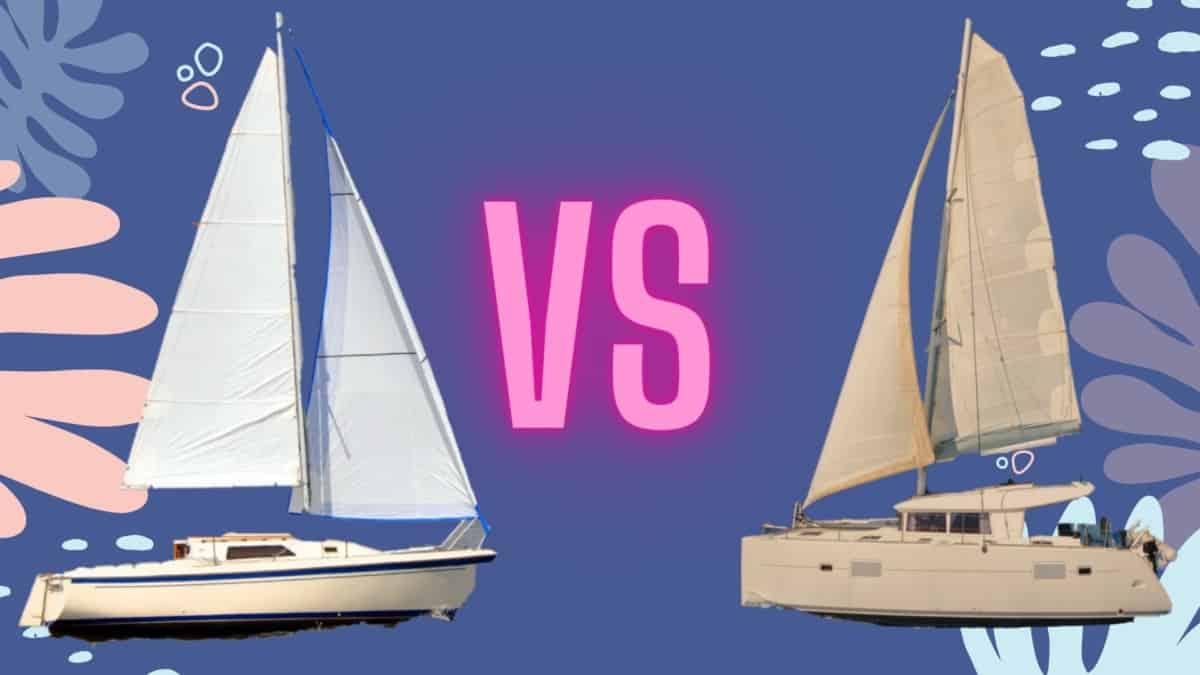
As an Amazon Associate, we earn from qualifying purchases. We may also earn commissions if you purchase products from other retailers after clicking on a link from our site.
In general, boating is an excellent pastime, but there are many things to consider before heading out and getting a boat. It’s important to ensure to get a boat that you are happy with and fits your needs, and one of the biggest debates in the boating community is whether catamarans or monohulls are best. But is there a clear winner, and what are the biggest differences?
Catamarans differ from monohulls in some very significant ways; Cats are more stable, faster, offer more space, and have two hulls. Monohulls offer heeling, faster steering response, less noise from water slapping, are cheaper to buy and maintain and have one hull.
Today we will be getting into the details you want to know regarding the differences and pros & cons between catamarans vs. monohulls. There are key aspects of each to be aware of before making an informed purchasing decision, and so if you would like to learn more, we encourage you to stick around and read further.
Table of Contents
Why Is It Important To Choose a Boat Carefully?
If you’ve ever shopped around for a boat , it’s no secret that they are large investments. And unless you are particularly wealthy, it will be a large expense where you want to get the most for your money. Buyer’s remorse is never a good thing, and avoiding it before you spend your hard-earned money is very important.
Boats come in all sorts of shapes and sizes, and not all will have the features you are looking for. Are you looking for something where you can hang out on the waters with friends and family – possibly with kids involved? Then stability and room are likely going to be your priority. On the other hand, if you prioritize the sailing aspect of boating, then getting something designed to be nimble in the waters is something to consider.
There is more to boating than simply saying “a boat’s a boat,” and the comparison between catamarans and monohulls brings this point home.
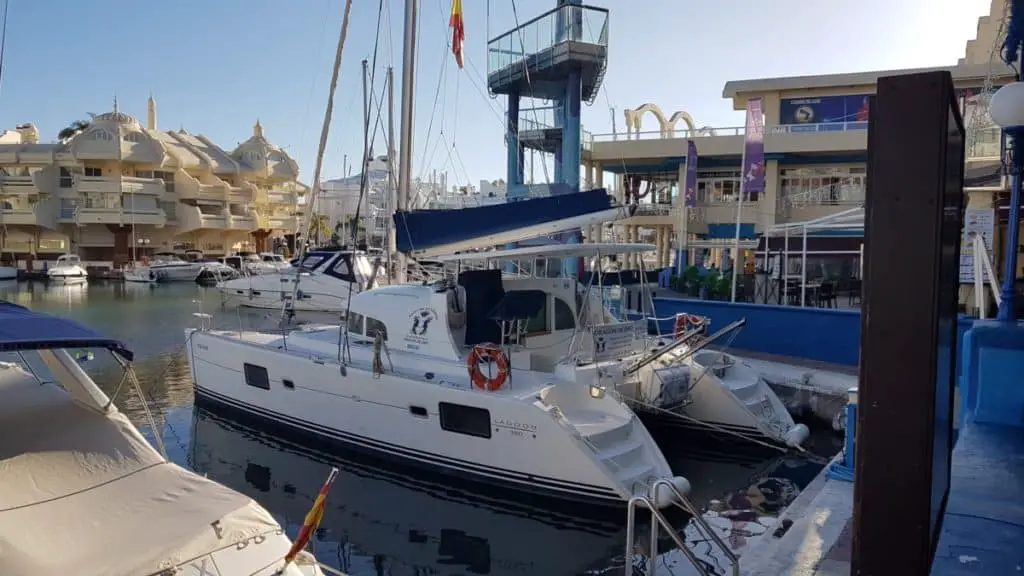
What Are Catamarans?
Catamarans , commonly referred to as “cats” for short, feature two hulls separated by a bridge deck rather than one central hull that most boats have. The hull is the body of a ship and is specifically designed to allow the boat to float rather than sink. Additionally, while some boats are more stable than others, the goal is always to ensure that the hull is as balanced as possible within reason (nimbler boats will generally be easier to rock).
Stability is the number one thing cats are known for; the two hulls ensure that it is nearly impossible to flip them over because they are spaced out over a large distance (aka wide beam). Think of it as standing with your legs far apart vs. tightly together, the physics word similarly with boats.
They also feel the most like standing on land since they are not prone to rocking back and forth, making them ideal for people prone to seasickness or who just want a stable platform for cooking activities.
How to stop sea sickness?
Catamaran Pros
- Unrivaled stability. As we stated above, the biggest thing cats have going for them is that they are almost impossible to flip over, and they don’t rock back and forth as much as monohull boats. If you are on still waters, it can feel as if you are on land which is beneficial for people who aren’t used to walking and standing on a boat that is constantly shifting around.
- More space. Due to how wide catamarans are, they are generally more spacious than the comparable monohull. This means more room for gear and people. If you plan to party on a boat, then a cat is likely going to be your best option.
- More privacy. A cat will have a different layout from a monohull, and these layouts typically feature more separation between the main living space and the cabins. If you plan to spend a lot of time on the boat with others, having the option of privacy may be an important feature. It’s always best to judge each boats’ layout if you value privacy, however.
- They Stay Level. This goes back to the stability of cats. A catamaran will heel only 5 to 10 degrees, which is a lot less than a monohull boat. This makes it easier to do certain activities such as cooking, and it provides a more comfortable experience for all onboard overall. A cat is the perfect type of boat for socializing with others.
- They are fast. While a monohull is elegant, a cat will usually have a higher top speed(want to understand sailboat speed? ). The reason for this is because they don’t have a heavy keel weighing them down. If you are the type you enjoy fast sailing, a catamaran will be right up your alley!
- Safety. Cats are hard to sink and capsize; it would take extreme weather and waves to defeat a catamaran. Because of this, they are regarded as one of the safest boats. In addition, it is rare for someone to be tossed overboard while on a cat due to the stability benefits. If you value the member’s safety onboard your boat, a cat won’t let you down. When do catamarans capsize?
- Shallow water cruising. Catamarans have low draft keels, which allows them to cruise in shallow waters. Additionally, you are less likely to misjudge a body of water being deep enough since chances are you’ll just pass above the reef or rock without ever noticing.
- Bridge deck view. Because cat decks are high up, you can get a better view of your surroundings. A higher deck’s advantage is that it allows for better sightseeing, and it can be viewed as a safety feature.
Catamaran Cons
- Different sailing experience. The stability of a cat is also seen as a downside from some people. Many sailing enthusiasts feel that sailing a cat is like sailing a houseboat, while monohulls offer the “true” sailing experience. If you are after exhilarating (or at least heeling) sailing, then a monohull may be better for you.
- They take up more space. Cats may have a lot of space, but they also take up a lot of space, which leads them to be more difficult to dock in certain areas, and in many instances, you may not be able to dock exactly where you want. Also, they often cost more money to dock simply due to their size.
- Noisy to sail upwind. Due to some cats having a low bridge deck clearance, waves can smack up against its underside and emit a very noticeable water slapping sound. This can get annoying when you are trying to enjoy a quiet sailing session. If you want to learn more, read this!
- Less feedback when turning. Due to their stability and overall wideness, you won’t get as much feedback from the wheel as you would a monohull. This means you will need to be more vigilant if you find yourself in rough waters and high winds. Some people also feel like there is a lag while steering a catamaran.
- More expensive. Besides higher docking fees, cats sometimes cost more upfront, catamaran vs monohull costs is a complex topic. When is a catamaran cheaper than a monohull?
What Are Monohulls?
As the name suggests, monohull boats have one hull. This design is likely what you think of when you think of what a boat is. You might be wondering why most boats aren’t catamarans given their stability advantages, and the answer to that is responsiveness, size, nimbleness, and sailing experience.
One advantage with a monohull boat is that it can slice through water like butter mitigating noise at higher speeds. Additionally, they are cheaper to produce (generally speaking) overall, making them even more attractive for both manufacturers and consumers.
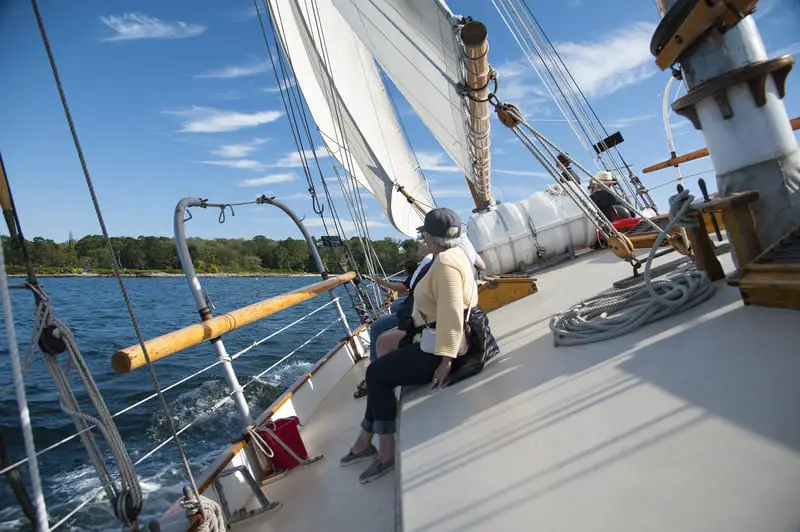
Many would also argue that monohulls are aesthetically pleasing. Think of the best looking Yachts and speedboats you’ve ever seen – they are highly likely to be monohulls.
But let’s not get too far ahead of ourselves; there are plenty of differences and pros & cons between cats and monohulls, and stacking them up together is the easiest way to make an informed decision on which one is best for you.
Monohull Pros
- Quiet sailing. Because of how monohulls are shaped, they don’t suffer from water slapping against a flat hull. They cut through the water, which allows for a quieter sailing experience overall. If you hate repetitive, annoying sounds, you might want to look into a monohull for this reason.
- More exhilarating sailing experience. This is the main argument from people who are fans of monohull boats. You can heel in them, and they are more responsive when steering. You’ll also “feel” the waters more as the boat gets sloshed around. If you are looking for that heeling motion a monohull or a trimaran is probably what you should get. In addition, monohulls are easier to tack .
- Aesthetics. This is subjective, but more people seem to prefer the aesthetics of monohull boats. A good looking monohull is simply gorgeous and sleek looking. I love the look of cats, but I do believe most people fancy the mono!
- Dock in more places. Monohulls are smaller, which means they can dock almost anywhere without special accommodation. Additionally, they can maneuver through tighter spaces. Even though shallow water can sometimes be the enemy of a monohull boat, you’ll likely feel like you aren’t as limited as a catamaran.
- Less expensive. A furnished out monohull boat is usually going to be less expensive than a cat. If you want amenities such as sleeping quarters and cooking tools, you’ll save money using a monohull.
Can catamarans be cheaper than monohulls?
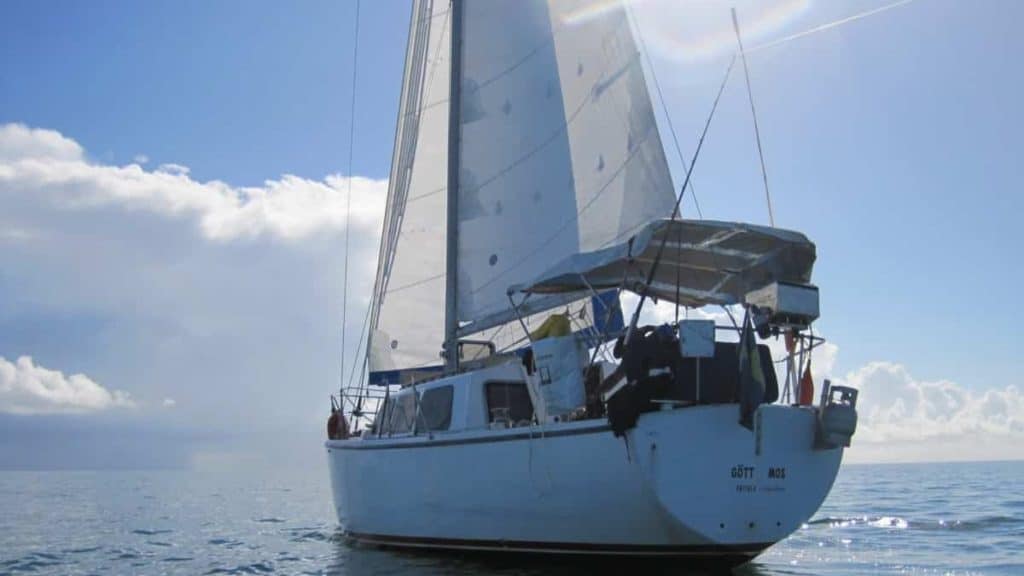
Monohull Cons
- Small quarters. Any area you go to inside of a monohull is going to be smaller than the cat equivalent. So while monohulls are cheaper, you are receiving less space; you will need to look for a bigger monohull if you want living quarters that are closer to a cat.
- Ventilation. Monohulls aren’t as good at ventilating as a cat. Things can get quite toasty on a warm day, which isn’t ideal if you are sleeping in your boat. You can use fans, or AC to help mitigate this issue, however.
- Stability. Monohulls rock a lot more easily than a cat, which can be disorienting to people not used to being on a boat. Additionally, it makes certain activities such as cooking harder than they should be. Not to mention it can be downright uncomfortable for some people. Some monohulls are more stable than others, but their nature generally means they won’t be as stable as a cat. This is one of the main reasons I’m switching to a cat!
- Lower sitting. Because the below deck areas sit below the waterline, it can make some feel like they are living in a hole. If you are claustrophobic, then this may be an issue for you. Some people like this aspect of monohulls since they feel hidden and secure, but it’s not for everybody.
- Safety. This is a big one to keep in mind. The hull on a monohull boat is simply the bottom of the boat. Unlike cats, which have holes on each side with the deck and below deck portions being in the monohulls don’t have protection against sinking due to a puncture. If there is a hole made on the hull, water will come in, and the boat will sink. This, however, is only a tiny fraction of what should be considered when discussing sailboat design safety. Why do catamarans capsize?
Also, it’s more likely to be tossed overboard if you are on particularly wavy waters and fall the wrong way. We’re not saying there is a high chance of this happening, but it is possible. Remember to wear a life jacket when on deck, such as this Self-inflatable I used in the Bahamas.
Who Should Buy a Catamaran?
Consider if you value the thrill of heeling or comfort. Putting together the pros and cons of cats, the conclusion can be made that they are better for people who want more of a “houseboat” experience. They are larger, more stable, and offer a superior deck view since they sit high. This is not true of all catamarans, the more performance-oriented boats are a true adventure to sail!
Additionally, If you enjoy passing other boats or just like to get to your destination quicker, you’ll enjoy the speed advantage of a catboat. You’ll also have more peace of mind that you are much more protected against punctures and sinking than a monohull.
In short, if you value a more “homey” experience and aren’t too fond of your boat rocking when you are trying to walk and cook. Additionally, if you are prone to seasickness, you will have an easier time with a cat.
If you are looking for a more “involved” sailing experience, you might be disappointed with a catamaran since it can feel as though you are gliding along in a boathouse. But if that is your thing, then a catamaran is for you.
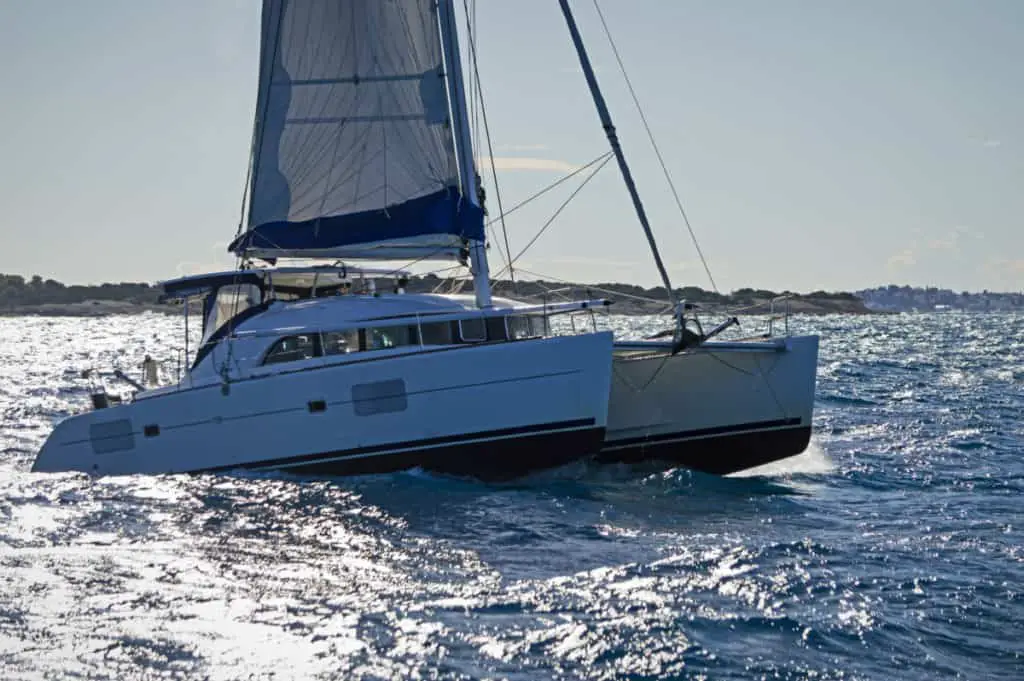
Who Should Buy a Monohull?
Monohulls are the more traditional of the two choices and are still preferred by many boat people— the main reason being that the whole “boating experience” is more pronounced with monohulls. You’ll feel the waters more, and you get to do fun stuff, such as healing. You will also be closer to the water since sections are much lower than they are in a cat.
Furthermore, these boats are usually the less expensive option.
You won’t get any of that annoying water slapping noise prominent with cats when the waters start getting rough.
Last but not least, monohulls (by popular vote) generally look better, and so if you want to stand out in a good way and show off your expensive investment, getting a monohull is going to be your best bet.
Overall, if you love connecting with the waters and want to feel like you are on a boat, a monohull will be more for you. Cats are great, but some traditionalists say “monohulls are the sailor’s boat”.
Want More Insight?
If you would like more insight on this topic, we recommend checking out this debate between two sailors on catamarans vs monohulls. You’ll receive two points of view regarding various factors regarding speed, fuel, etc. There is a reason why there are so many back and forth arguments in the boating community on this topic and exploring both points of view may help you make an informed decision based on what matters to you.
There are compelling reasons to go with one or the other boat styles. Cats will offer a more relaxed experience with their stability, spaciousness, and higher view. They are also extremely hard to sink due to the small draft. If you are prone to seasickness or just simply hate it when a boat rocks, then getting a catamaran is going to be the right call for you.
On the other hand, if you are looking for a more heeling experience, then a monohull is the best choice.
Owner of CatamaranFreedom.com. A minimalist that has lived in a caravan in Sweden, 35ft Monohull in the Bahamas, and right now in his self-built Van. He just started the next adventure, to circumnavigate the world on a Catamaran!
Leave a Reply Cancel reply
Your email address will not be published. Required fields are marked *
Save my name and email in this browser for the next time I comment.
Recent Posts
Must-Have Boat Gear for Catamaran Sailors!
Sailing is probably the most gear-intensive activity I've ever done; there are so many decisions to be made about what gear to buy now, for tomorrow, and what to definitely never buy. The gear on...
6 Best Trailerable Trimarans For Bluewater and Coastal Sailing
Having a boat costs a lot of money, even when you are not using it, marina fees, etc. And once it is in the water most sailors never go very far from their "home marina" and sailing will be somewhat...
Catamaran vs Monohull – Which is Better?
Which is better a catamaran or a monohull.
I’m often asked by my students why one would choose a sailing monohull or a sailing catamaran for their adventures. The simple answer is: There is no simple answer — it depends on a lot of things, perhaps the most important one is your preference. “Yeah, well, this is my first week sailing ever, so how do I have a preference?” Let’s explore the differences and discuss the ins and outs of sailing, chartering, performance, and living aboard either vessel.
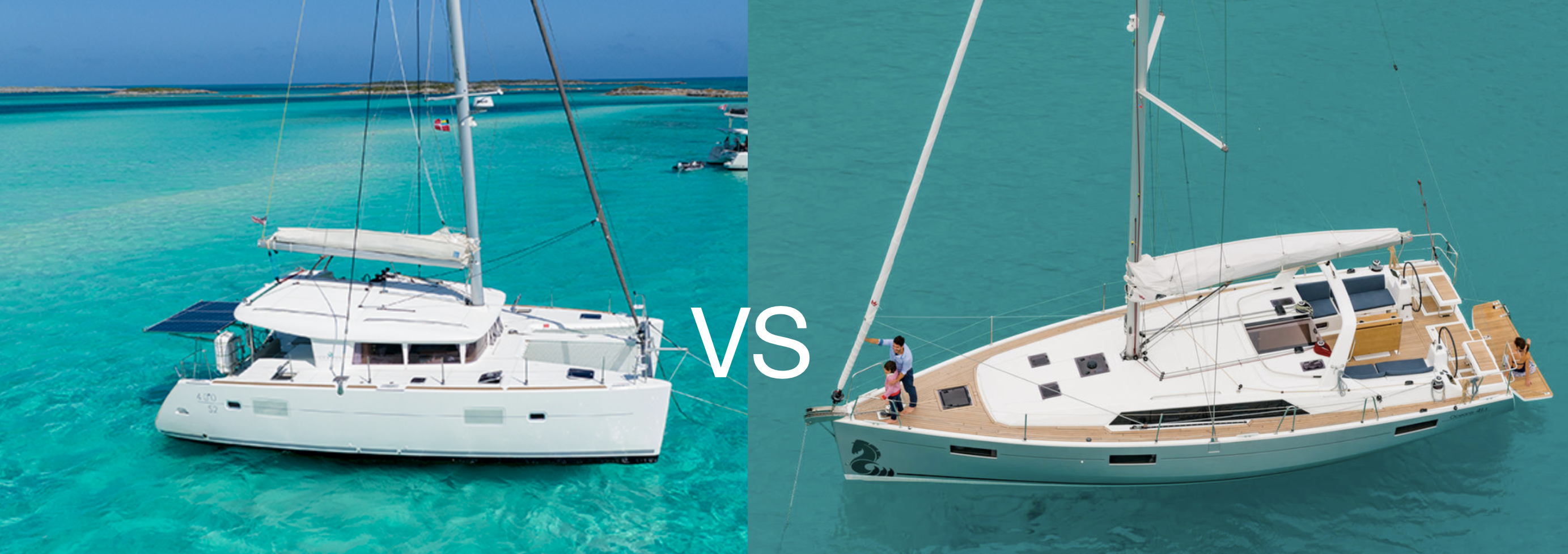
Notice that I don’t say “pros” and “cons” when considering the differences between the two vessels. To some, the gentle rocking of the monohull elicits nostalgia for a bygone youth spent sailing dinghies in the bay. To others, it represents sleepless nights, banging kitchenware, and angry spouses.
Short Summary – Catamaran vs Monohull
Generally, I describe my preference as follows: If I want to invite guests that are not frequently on the water, have less tolerance for “bumpy” nights, or expect a more “luxury” experience (you’ll see why I put it in quotes shortly) then I select a sailing catamaran. There is more room to spread out (vs the same length mono), rocking at anchor/mooring is minimized, and the kids love playing on the trampoline. Or perhaps phrased differently, “If you want to drink from beach to beach…”
DO NOT DRINK ALCOHOL WHILE OPERATING ANY VESSEL. EVER.
If, however, you want to put some miles down sailing from port to port in the Med (or wherever you have variable wind direction), then the mono is probably the better option. It has better upwind performance and costs less in marinas.
Let’s get into the details. We’re going to compare a suitable, common charter catamaran ( Lagoon, 40 ’) with a good, common charter monohull (Beneteau, 41’).
Sailing and Performance
The monohull total tacking angle is about 90-100 degrees apparent wind angle (AWA). This means that the closest close-haul sailing angle achievable is approximately 45-50 degrees off the wind. The comparable catamaran has a total tacking angle of about 110-120 degrees (55-60 degrees AWA off the wind). This loss is due to the extra leeway experienced in the catamaran. This is a significant difference when trying to beat to windward and can mean the difference between sailing the entire distance vs putting the sails up for show only. For those interested in math, the progress into the wind is determined by the cosine of the close haul sailing angle (angle of the wind) times the length of the leg on that tack.
windward distance = cosine(𝜶) x leg length
Where α is the close haul sailing of the vessel. Table 1 compares the windward distance achieved of 3 sailing angles over a leg length of 1 unit (nautical mile, km, etc). For example, if the leg length is 1 nm, and 7 legs are sailed, a total distance of 7 nm is covered. However, the progress to windward is not 7 nm, but
cosine(𝜶) x leg length = cos(45°) x 7 nm = 0.71 x 7 nm = 5.0nm
for a monohull sailing 45° to the wind, and 4.0 nm for a catamaran sailing 55° to the wind. The final difference after 7 tacks each is 1.0 nm, which would take the catamaran an additional 2 tacks (and just shy of 2 nm distance sailed) to make up the difference.
Table 1. Sailing Angle and Distance Comparison Sailing Angle (off the wind) Windward Distance Achieved % loss from 45°
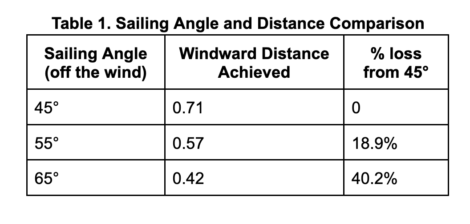
Figure 1. Sailing Angle Mono vs Cat
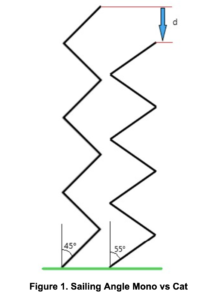
A real-life example
Sailing from Mallorca on a new Lagoon 40. We needed to sail directly upwind in about 20 knots of wind, 3 miles from Cala Mondragó to Cala D’Or. It took over 2 hours and we sailed over 7 nm. As you can see, the tacking angle is far from 90º typical to a monohull.
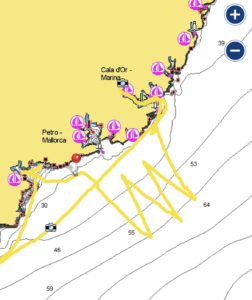
Additionally, the loss to each tack must be considered. Speed and headway is lost with each tack – the mono carries its momentum much better (minimal speed loss) through the tack and has minimal leeway loss compared to the catamaran. The cat loses a tremendous amount of its momentum and experiences significant leeway loss. And it has to take more tacks to make the same windward distance, rendering the loss greater than that just lost to having to sail a greater distance due to the tacking angle.
Daggerboards greatly reduce leeway and give catamarans excellent upwind performance on par with monohulls. There are reasons why all cats don’t just have daggerboards. Especially on charter boats, one mistake, leaving the boards down, in shallow water can destroy the boat.
Across the wind (most reaching situations), the catamaran is faster. Upwind, the mono makes better progress due to the tacking/sailing angle. Downwind is a competition.
Downwind is where catamarans really shine. The stability and smooth ride is no comparison to a monohull. We sailed Never Say Never, our Lagoon 400S2 from Hilton Head SC to Ft Lauderdale, we had a NE wind of 20-25 knots. For us to stay inshore of the Gulf Stream to avoid rough conditions, we were wing-on-wing for over 24 hours, surfing down gently at over 7 knots. We covered over 160 miles in 24 hours. Escorted by dolphins, this was one for the books —non-stop 3-day delivery.
Comfort & Stability
The catamaran doesn’t heel (well, it shouldn’t. I guess if that’s the case we’re having another conversation ). No heeling can mean easier walking about while underway: we’re all familiar with walking on level ground; walking with the ground at an angle is a less-common experience. However, there is an oft-missed discussion about the mono’s stability on a heel. Waves tend to roll under the mono’s hull. Once sea legs are found, the motion of the hull on the water is predictable and smooth.
The cat’s motion on waves tends to bounce between two “stable” states: one resting on the starboard hull, the other resting on the port hull. You get a slight, but sudden rock to starboard when the wave passes under the port pontoon, then a sudden return to port as the wave passes under the starboard hull. This tends to be a jarring motion all day. So while some argue that mono heeling is tiring, others will argue that this cat phenomenon is tiring. A sarcastic captain often says:
“One benefit of a cat, you get each wave twice!”
Each vessel has its own quirks for sail trim, so that is a wash. I can read a mono’s sails much easier than a cat’s, but I sailed monos for 20+ years before trying cats so I may be biased.
Catamaran vs Monohull Safety
The mono gives lots of feedback about being overpowered long before it becomes a problem: heel angle and weather helm are the loudest. The cat is much more subtle: mast and boom groans, light windward pontoon, lack of steerability. Experiment with the main traveller position and reefing on a schedule per the owners manual to find the optimum sail configuration on a cat.
When the seas pick up, catamarans do much better downwind. Monohulls tend to roll, yaw and wallow in the troughs and round up on the face of the waves. Catamaran’s tend to surf straight down the waves. A force 7-8 blow can be enjoyable. Stow your main and run with just the jib downwind on a cat and you’ll see the beauty and ease to steer this configuration.
“When the seas pick up, catamarans do much better downwind. Monohull’s tend to roll, yaw and wallow in the troughs”
Chartering and Living Aboard Considerations
Charter cost – cats are 30-60% more expensive than the equivalent mono.
In marinas, the cat rate is usually 50% greater than the mono rate. And, unless you get a reservation long in advance, they might not have room for you.
On moorings, depending on the bow cleat location, the mooring lines can run over or along portions of the hull of the cat. This leads to line stretch-and-relaxation noise all night long. For anyone in the forward cabins, this is a nightmare. Or worse since you can’t even get to sleep to have a nightmare.
Cats tend to have shallower draft and therefore can anchor closer to the beach. If wind and swell are from the same direction, cats tend to weather it better at anchor. Due to the bridle, cats do not swing on anchor. Older monos used to swing a lot, modern designs have reduced this swing tremendously.
There is lots more room on a cat to house the luxury amenities like A/C, water makers, and generators. Though, modern design is allowing for clever locations for these items in the mono, so there will probably be more monos becoming available with these options.
Cats tend to carry more potable water than the mono. They also carry more fuel. And burn more. Our weekly mono fuel bill ranges from $80-150 USD. Our weekly cat fuel bill ranges from $180-300 USD. (1.) Though you pay more for a catamaran, most systems are redundant. Two engines are better than one.
Catamaran vs Monohull Maneuverability
Cats are far easier to maneuver under power due to the two engines being separated by such a great distance. This makes picking up moorings, dropping and weighing anchor, and docking a breeze.
I would argue that monos are easier to manoeuvre under sail due to large rudders and heavy keels. The heavy keel maintains its momentum through manoeuvres much better than the cat. The large rudder means a small helm adjustment is quickly experienced in the respective heading. This large rudder also reduces steerage way to about 0.75-1.0 kts, whereas the cat is about 2.5 kts. While I doubt we’ll see cheaters , I mean bow thrusters, on 40’ monos, I have seen them on 44’ monos before. This added amenity makes up for greatly increased manoeuvrability while docking or weighing anchor.
Dinghy Storage
Storing the dinghy on the davits is a wonderful location for passages of any length. The reduced drag from not towing it is immediately seen in increased sailing speed. Monos must carry theirs on the bow or tow it astern. And you have to take the engine off too. Usually by hand, so you are not going to see a 20HP electric start engine on a dinghy for a 40’ mono. Not that you’d see that size for a 40’ cat either, but a 9.9 – 15 HP isn’t out of the question.
Ultimately, it boils down to what your preferences are. Do you like the extra space and amenities the cat provides? Do you like the sailing performance of the mono? Again, I choose a cat to sail from island to island in the Caribbean, where having a water maker or A/C is nice, fairly flat water is expected at all times, and anchoring close to the beach is a cool experience for everyone on board. I choose a mono to sail greater distances, go offshore, or hop from one marina to another in the Med.
1. This article was written in the spring of 2022, just before the crazy increase in fuel prices. As of publication date, these numbers need to be adjusted higher by about 50-100%

Ben Martin is a long-standing instructor at Nautilus Sailing. ASA 201, 203, 204, 205, 214 Certified Instructor, RYA Yachmaster Offshore, USCG 100 Ton Captain. Ben grew up in Northern Maine sailing dinghies on a lake. He graduated from University of Maine with a Master’s in Electrical Engineering. After working for the US Navy for a few years, he decided to pursue his passion on the water and worked as a charter yacht captain for several years in the Caribbean and the Mediterranean. Eventually, his career led to sailing instruction and he hasn’t looked back since.
- ← Prev Post
- Next Post →
HOW IT WORKS
Connect With Us
Plan Your Trip
START YOUR SAILING JOURNEY NOW
As featured in.

EXCLUSIVE EVENTS
The only way to join our tribe is to learn to sail with Nautilus.
We’re really careful to make sure that we know and trust anyone coming on one of our special trips.
Join us on flotillas, offshore deliveries, free webinars and unforgettable sailing adventures around the world. Join the Tribe.
- TERMS OF USE
- Privacy Policy
Monohull vs. Catamaran: which yacht is for you?!
By Yacht Week
Posted on 29th June 2022

If you're excited to join The Yacht Week but have never sailed before, we're here to help you decide on your perfect floating home for the week. From catamarans to monohulls, Classic to Premium, check out our handy guide with all the different types of yachts to help you work out which one is best for you.
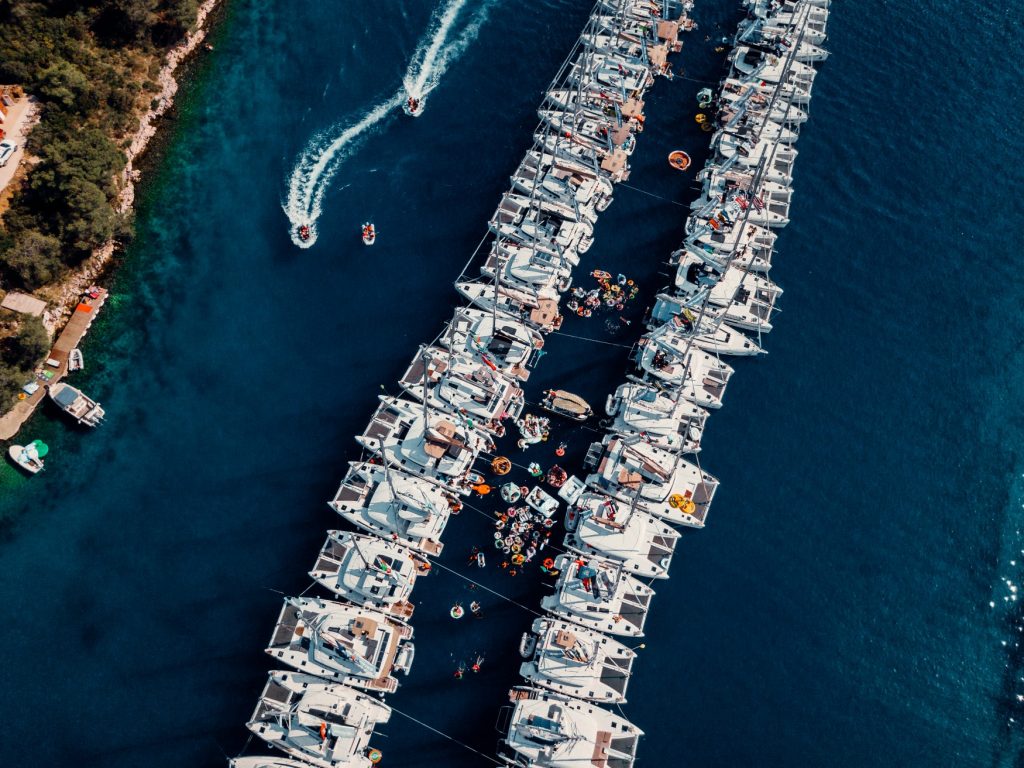
Catamaran vs monohull - what's the difference?
Firstly, let's talk terminology. To choose between a monohull and a catamaran you need to know what makes them different. Simply put, as the name suggests, a monohull has only one hull (the main body of a yacht), whereas a catamaran has two hulls.
The benefits of a catamaran having two hulls is that they will typically stay more level and offer a lot more space, while a monohull will always reach faster speeds when sailing. Here's what one of our amazing hosts, Cara Whiteman, has to say about the difference:
If you like to sail, make sure you book a monohull to get a real authentic experience with the yacht leaning over and cutting through the waves under sail! Don’t worry if you still like your space - you can always book the larger monohulls, such as the Jeanneau 54 .
Alternatively, if you are looking to top up on the tan, a catamaran is the best bet, with lots of outside space for lounging and sipping on cocktails. The kitchen is much bigger and the yacht stays more stable at sea, so if you’re a foodie you’ll enjoy the spacious and more social dining experience that the extra room allows.
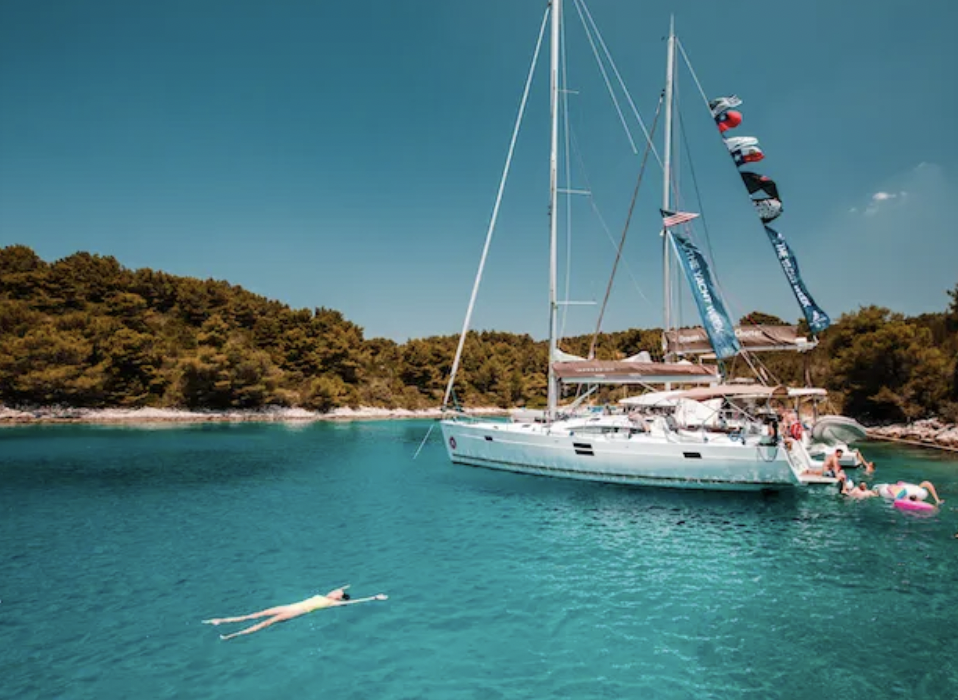
Things to think about before you book
There's nothing better than a recommendation from someone really in the know. Another of our amazing skippers, Anton Ha, has some great tips for you to think about before you book:
If you're planning to join TYW at the peak of summer, especially between weeks 26-34, then make sure you book a yacht with air-conditioning!
Don't plan to let people sleep in the saloon (lounge area) as it makes the yacht look messy all week long, which is no fun. If you can afford to keep your crew size down, you will really enjoy the uncluttered space.
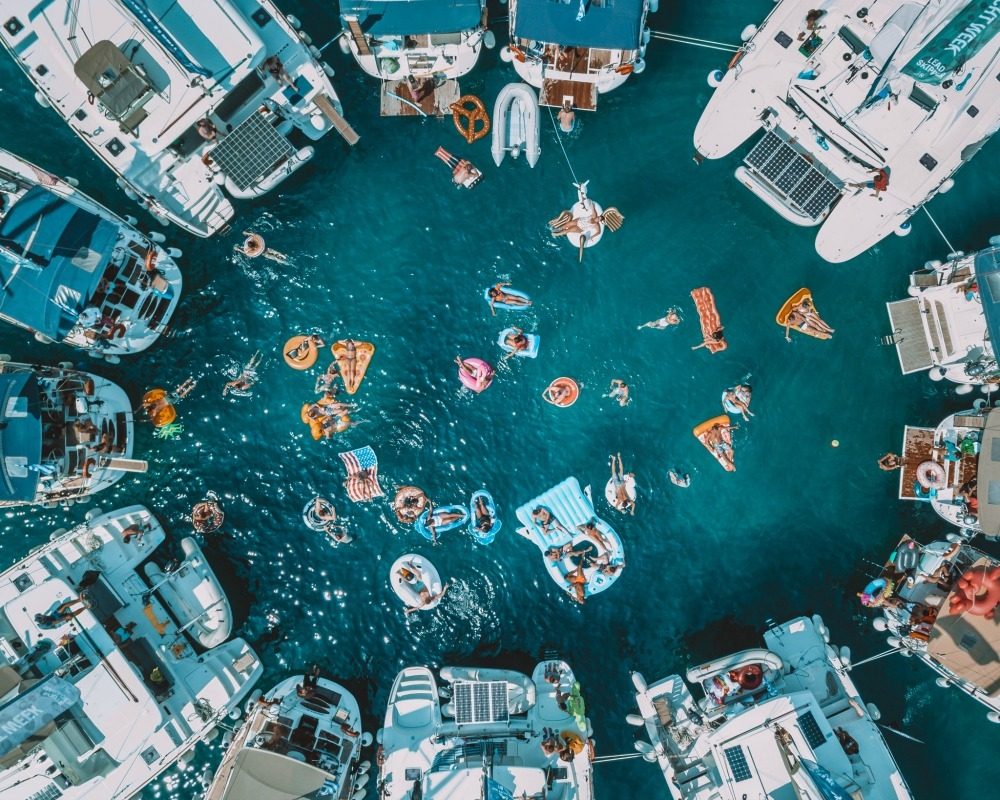
What's included with all our yachts?
So now you know the differences, but what do they all have in common? Here's everything that comes standard with our yachts:
- Your skipper - Very necessary, of course. Our amazing skippers are an essential part of your experience as they will help you sail your way through the week. They'll navigate your yacht, lead your crew and make sure you discover all the hidden gems along the way. They're there to ensure you have a safe and enjoyable experience and are happy to teach you some of the key skills for sailing if you’re keen to get involved.
- Fully equipped kitchen - Feast your way through the week by whipping up a storm in your very own kitchen. Packed with all the pots, pans and cutlery you could need. Don't want to bother with the cooking? Book yourself one of our friendly hosts for the week.
- Bedding and bathroom towels - All your linens are provided, so no need to pack any of these. We do suggest bringing your own beach towel so you don’t get seawater on your bathroom towel.
- Speakers - Every yacht has its own speakers, so you don't need to bother about packing these. Pump out the tunes as you sail your way through an unforgettable week.
- Wifi - while we definitely encourage you to switch off and enjoy every minute of the week, we also make sure you don’t lose touch with the real world (unless you want to, of course).
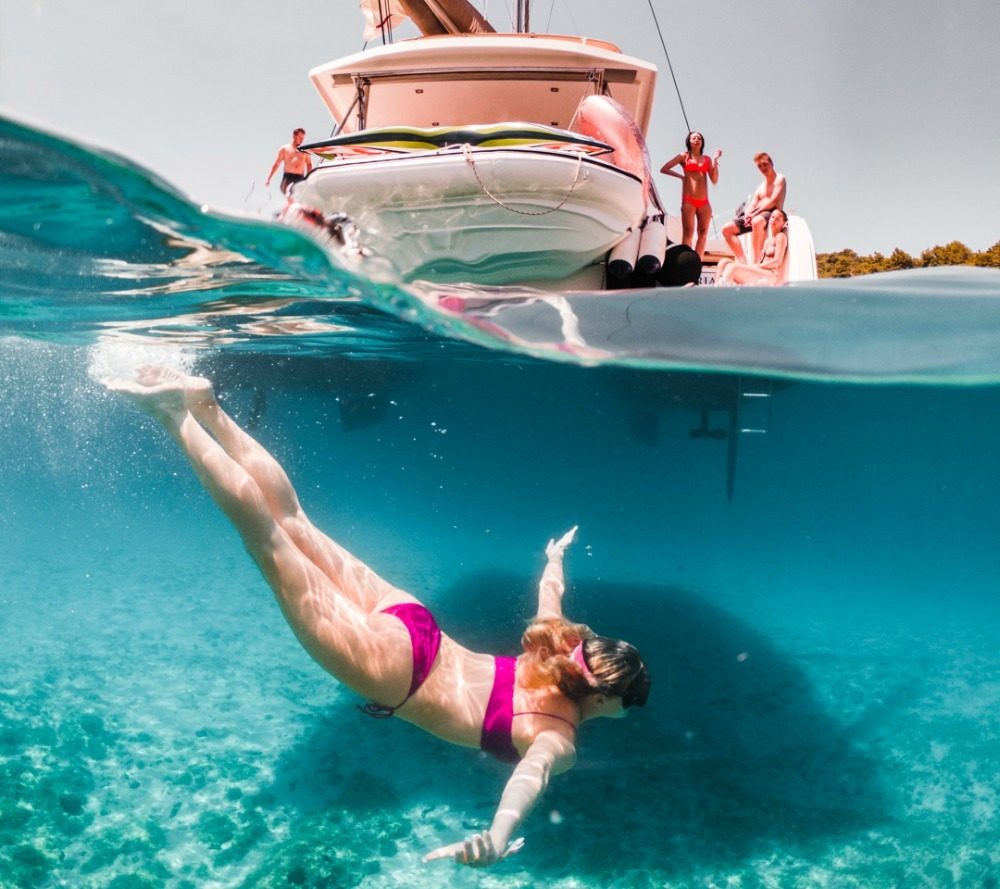
Which yachts do our skippers and hosts recommend?
So now you know about all our different categories of yacht, but which ones do our skippers and hosts love? Surprisingly, they all have their own preferences for different reasons. Check out which yacht three of our amazing skippers and hosts recommend.

" In my opinion, the Lagoon 450 catamaran is the perfect TYW boat. Four spacious cabins for up to eight guests. Two crew cabins, so your skipper and host will be well-rested. A huge icebox, which is a great addition to the air conditioning and three fridges (two for food, one for drinks) on hot days, as it means cold drinks all day long. There's also a huge sunbed on top and a net upfront, which are the perfect spots to enjoy a sunny day on the water. " - Anton Ha
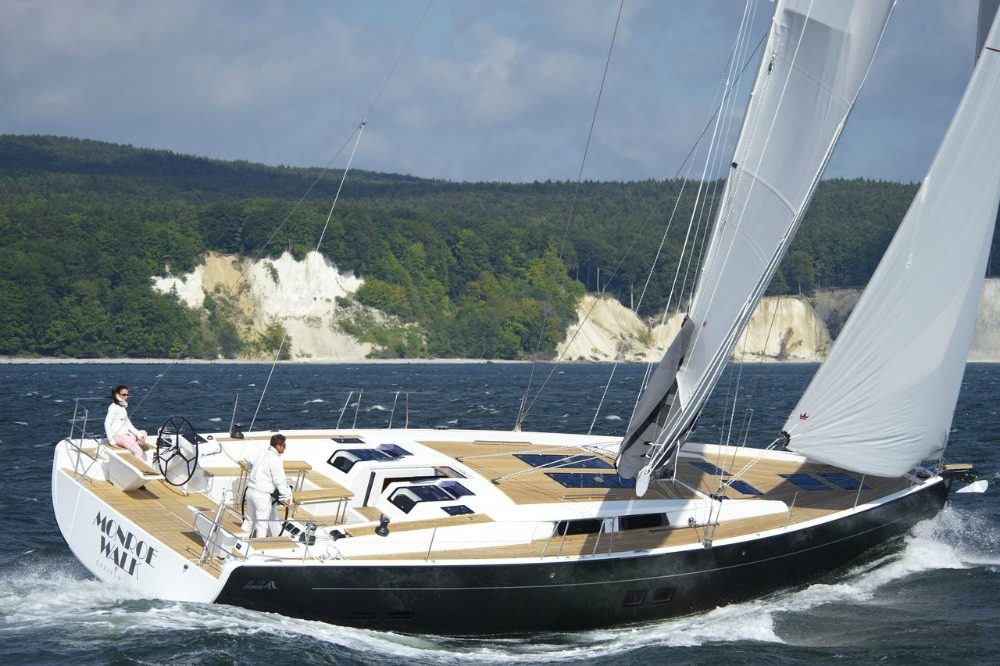
" The Hanse 575 is my favourite TYW yacht hands down! It is a luxury boat with coveted air conditioning. You have lots of room both up top for tanning and relaxing and down below so you don’t feel too cramped. The best part is that the Hanse can really send it sailing with good winds. Total best of all worlds scenario. " - Megan Whyte

" My favourite TYW yacht is the Bali 4.1 catamaran, mostly because of the vast living space it had both inside and out. The large dining area makes for sociable mealtimes without sacrificing sun lounging and dancing space out on deck! " - Cara Louise Whiteman
Share this post
Yacht Week brand and concept is owned by Day 8 AB - a private limited company registered in Stockholm, Sweden. Day 8 Experiences Ltd acts as a travel agent on the behalf of Yacht Week.
© 2024 Yacht week. All rights reserved.

Matt Weidert
Catamaran vs Monohull: Why the Cat is Better for Your Sailing
- We enjoy the extra lounge space a cat provides, especially a flybridge if available - that's where we'll spend most of our time during the day
- We like the common areas being above the waterline and the better stability
- We care less about sailing performance - we are the type of crew that is OK dropping sails if the winds are light or it's more convenient to motor
- As the captain, I appreciate the maneuverability twin engines provide for docking - it keeps some stress out of the equation
- Most tend to come with generators, AC, and water makers: all features we enjoy on these trips
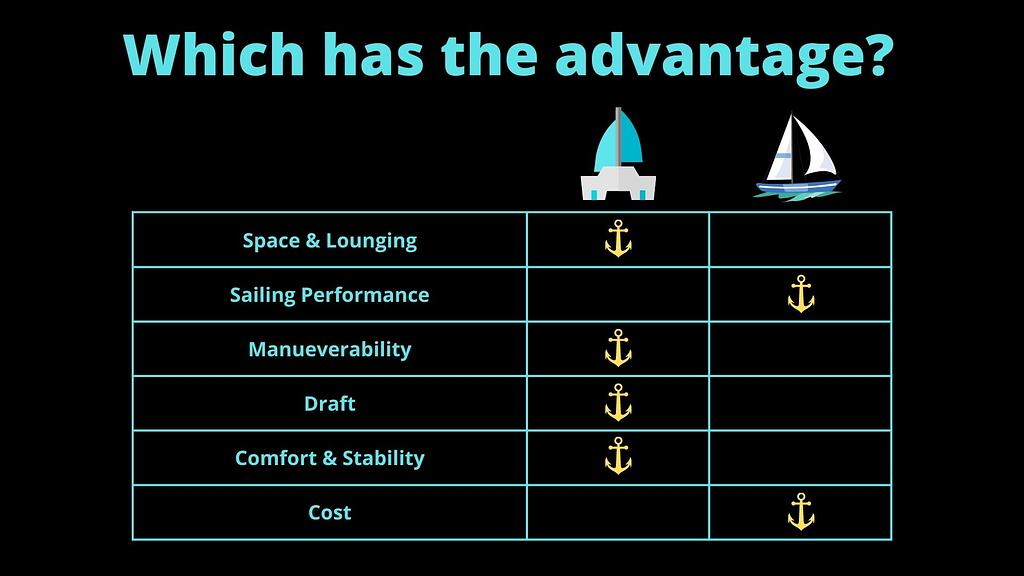
Space & lounging
Sailing performance, maneuverability.
- Comfort & Stability
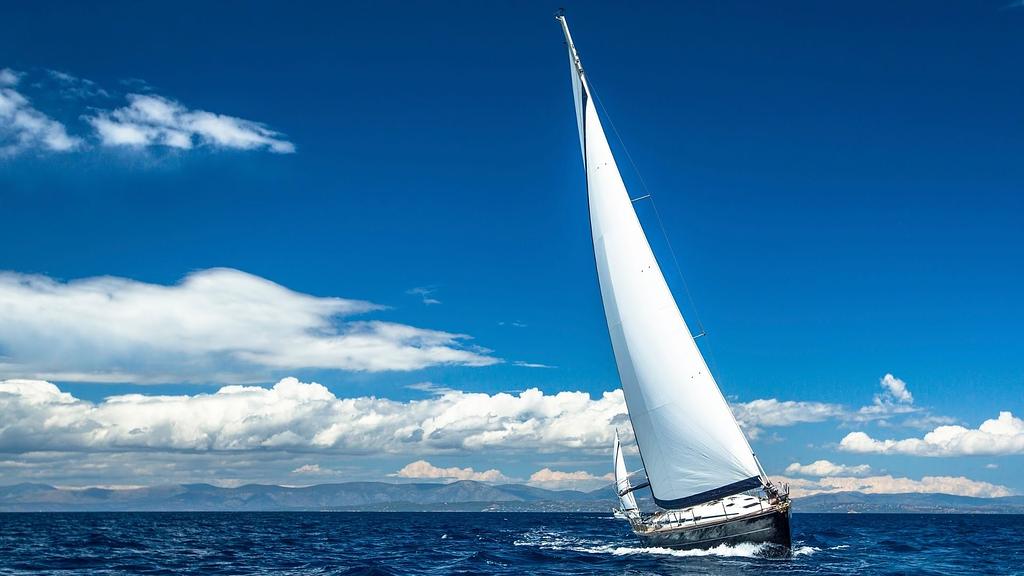
- Catamaran draft: ~4-5 feet
- Monohull draft: ~5-6 feet
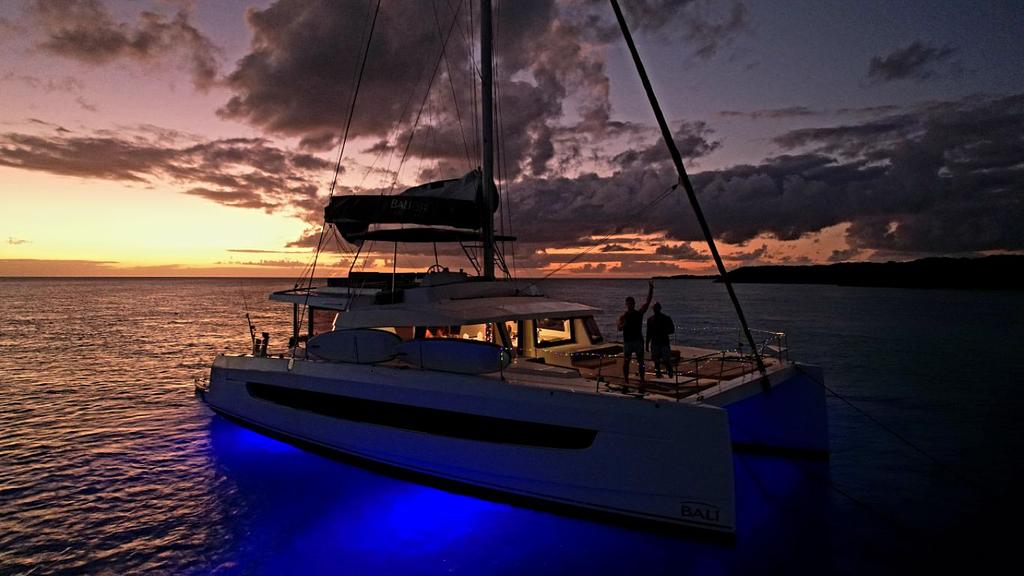
Comfort & stability
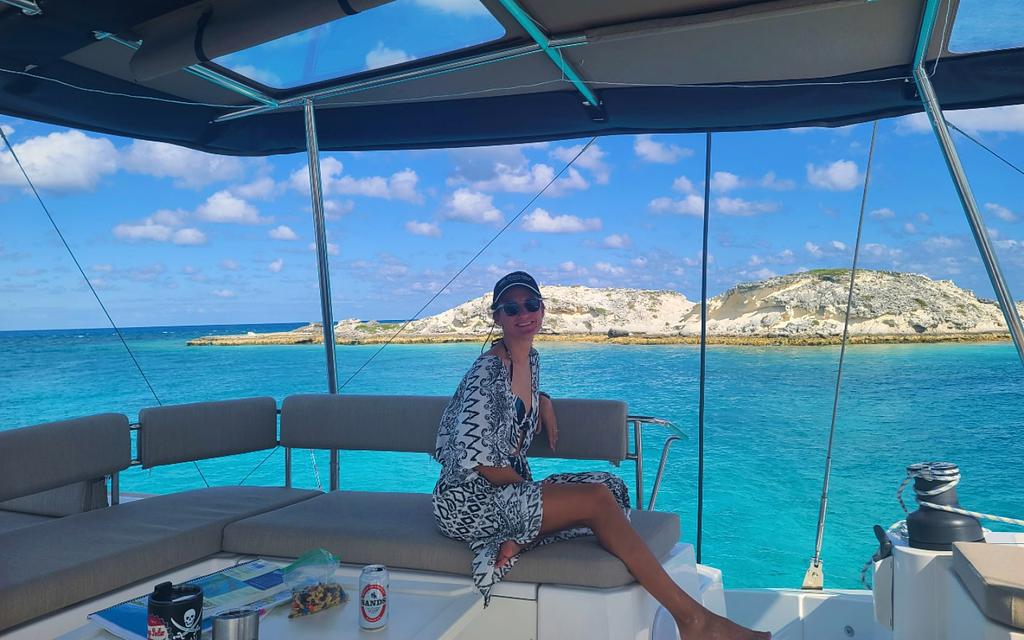
Explore these related articles from the Yacht Warriors

What is a Motu?
What is a motu? They are mall, sandy islands in volcanic lagoons. Explore their beauty, unique ecosystems, and role in Polynesian culture.
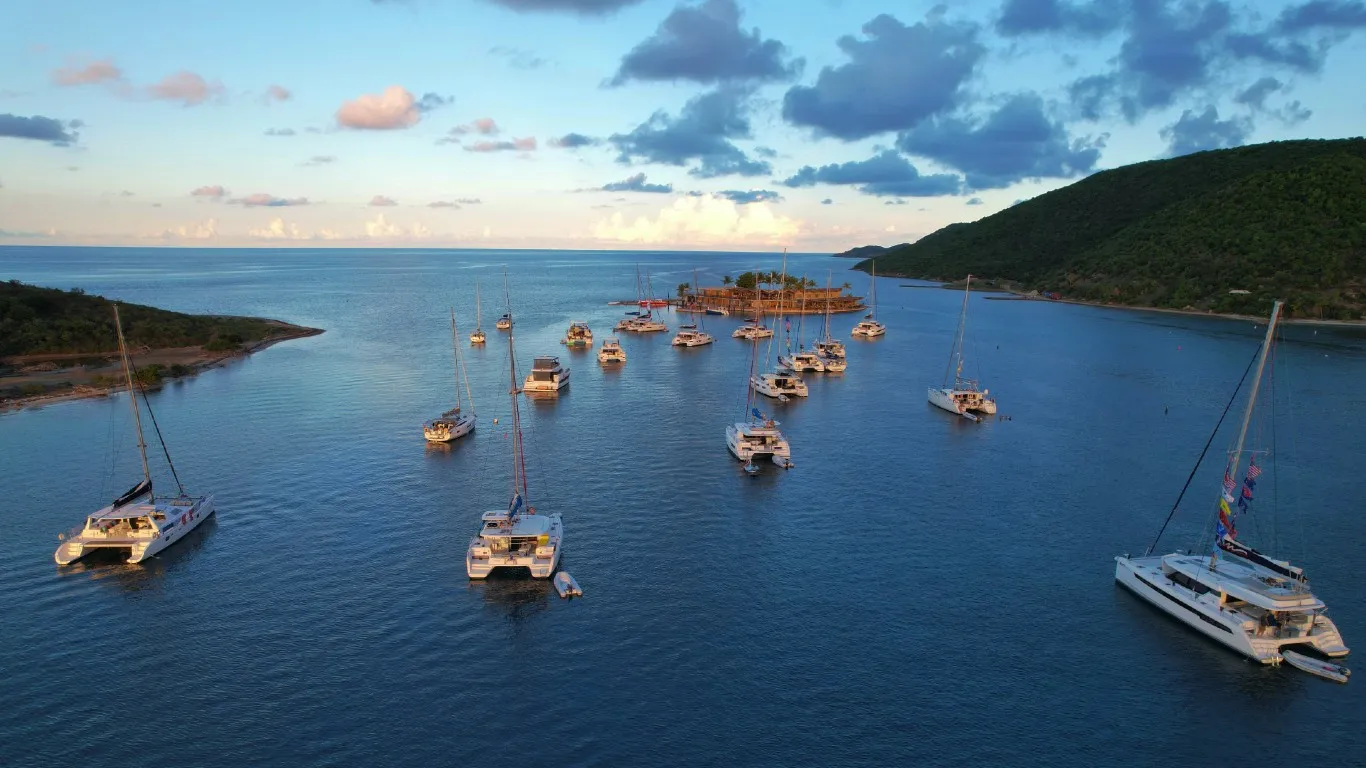
The complete sailing trip packing list- Here’s What to Pack
We've perfected our sailing trip packing list over the years. Here's what to pack on your next trip - the obvious, and maybe not so-obvious.

Summer reads: nautical adventures & high-seas thrills
To help build your summer reading list for those relaxing moments on the beach, I’d like to share some books I highly recommend that I’ve read in the past.
When is your next yacht charter? Consider booking with the Yacht Warriors.
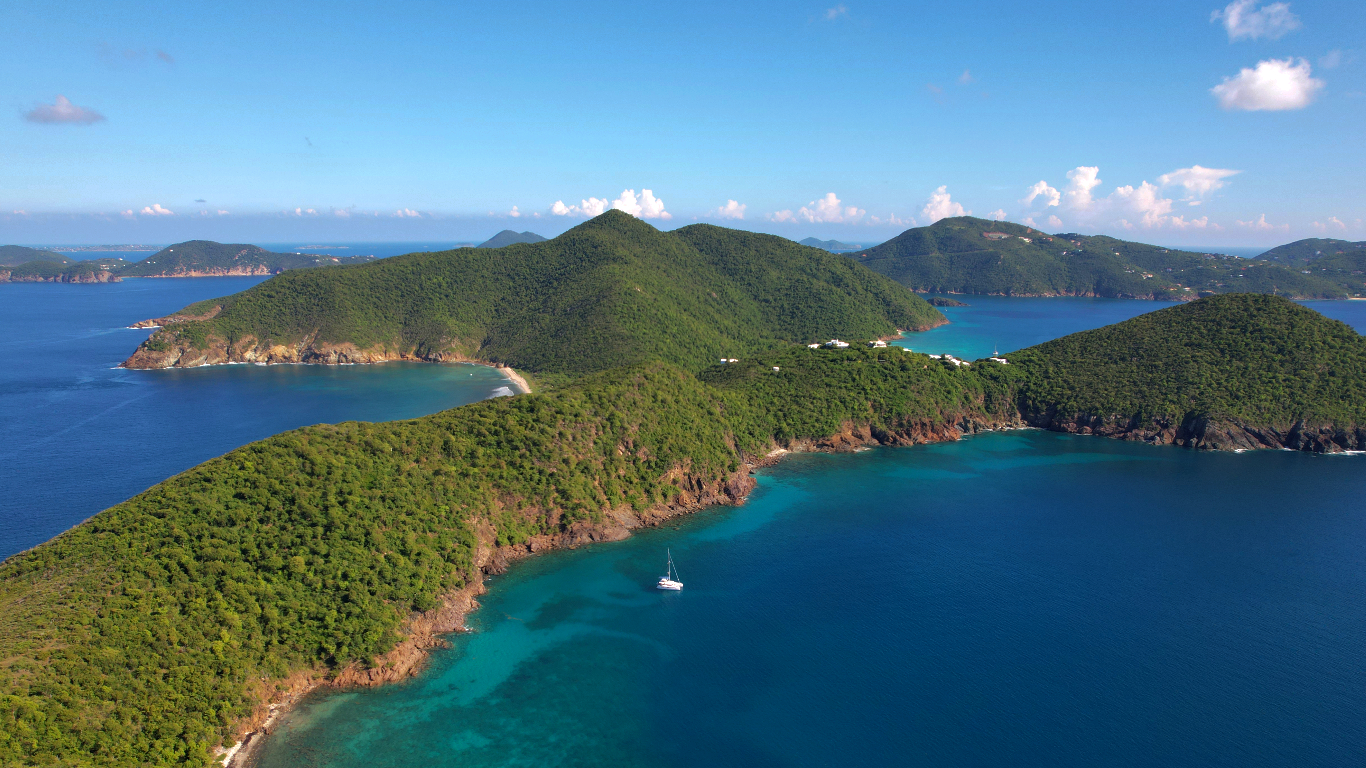
Charter. Beyond.
Get fresh ideas for your next yacht charter trip - insider guides, sailing itineraries, planning tips, and more. Subscribe and receive my free BVI Trip Planning Document.

IMAGES
VIDEO
COMMENTS
When selecting a fishing boat, anglers face a significant choice that can impact their experience on the water. The type of boat you choose - be it a catamaran or a traditional monohull - plays a pivotal role in defining your fishing adventures. Both catamaran and monohull boats have distinct features and advantages, and understanding these differences is key to finding a vessel that aligns ...
This is because their powerplants are widely spaced, at either side of the transom. In a monohull, however, the engines are centered along the transom. As a result, the cat can spin and turn on a dime with little effort, while the monohull has much less leverage when the engines are opposed. Monohull Pro: Monohulls are better weight-bearing ...
Comparing Power and Performance. One of the biggest differences between cats and monohulls is the requirement for at least two engines on a catamaran. For smaller deep-vee boats up to 26 feet or so, you could use a single 300 or 350 hp outboard. A cat of the same size might be powered by twin 150 or 200 hp engines.
We help you determine if a catamaran suits your boating style better than a deep-V monohull. Ever since the Polynesians started crossing oceans on catamarans when much of the "civilized" world was still afraid of the sea, the idea of the twin hull has ebbed and flowed in popularity. For centuries in the Western world, the monohull ruled the ...
A catamaran has more space than a monohull. This is because the boat is wider, and it has a much larger deck area. It also has twice as many hulls, so you have more overall space between the two of them. The additional space is great for people looking to throw parties on their boats.
Darker interiors: Most monohull living space is lower in the boat, where you can't put enormous windows for light and circulation. It's very hard to get space as bright and airy as catamaran saloons. Less living space: With one hull and no bridge deck saloon, most monohulls feel cramped compared to spacious catamarans.
Monohull sailboats have their own groove. This motion is predictable and distinguishable by pro sailors. Cats, on the other hand, depend on the body of water's condition state. Also, cats pound when going upwind into big seas if their bridge deck is pummeled by waves, while monohulls tend to slice through the waves.
Part 2 right here: https://youtu.be/05E-Qv6BVfgA debate as old as time itself! Which is better, a catamaran or a monohull? I'll give away the answer here: l...
Monohulls have the advantage of having wider compartments below the deck when compared to catamarans, as the overall width of the hull is larger than a single hull on a catamaran. This gives room for larger living spaces below the deck, which can have the option to walk around on either side of the bed.
For starters, how a boat handles various wind conditions is critical. Monohulls, due to their keeled design, tend to excel upwind. Their ability to 'point' into the wind is usually superior to that of a catamaran. On the other hand, catamarans, with their lighter weight and reduced drag, often have the upper hand in downwind and lighter wind ...
Compared square-foot-for-square-foot, catamarans are much lighter than monohulls, which means they also slow down a lot quicker. For the most part, catamarans are easier to dock than monohulls, as they have two motors and two rudders which simplify things a lot. This also does away with the need for a bow thruster.
Then, in most cases, catamarans have less fuel consumption than monohull boats. Catamarans save a lot of gasoline since they have a less wetted surface area on their hulls. They can propel the boat with just one engine in weak winds. Also in flat water, and if the engines have the same number and horsepower.
This has been objectively measured (with accelerometers) in a Glacier Bay 26 powercat versus a Regulator 26 monohull—both boats known for providing an excellent ride—to the tune of a .287-second deceleration versus a 0.081 second deceleration, and a three-G force impact versus a four-G force impact when hitting an identical wave head-on.
7. Shallow Draft Equals Better Anchorages. Catamarans have significantly shallower drafts than monohulls, allowing for safer anchorages closer to shore. Most catamarans in the 40-ft to 50-ft range draw between 3-ft to 4.5-ft, so they can anchor in places that a monohulls can not even consider.
With catamarans vastly popular in the charter industry, and showing no sign of abating, let's compare the pros and cons of monohull and catamaran strictly on the charter work point of view. The reason why this distinction is important - and I write this as a monohull fanatic myself - is because for charter companies, catamarans are in huge demand due to the overwhelming number of advantages ...
The cost of buying, mooring and maintaining a catamaran is significantly higher than that of a monohull. There isn't enough headroom for people over 6ft tall in most cats under 40ft. If capsized, it won't right itself. Underway, the motion is jerky. Catamarans are more weight sensitive.
Catamaran vs. monohull power. A monohull under auxiliary power may be faster than a catamaran in certain conditions, like powering against a strong wind. In other wind and wave conditions, the catamaran is often faster. Also, with an engines on each hull, the cat is often much more maneuverable in close quarters or at the marina.
Some prefer the motion of a monohull while sailing. Monohulls heel over but are steady, and sailors usually get used to the heeling motion. On a catamaran, if conditions are good, the boat won't heel and will provide a comfortable ride. When sailing upwind, some catamarans experience bridge deck slamming.
A catamaran will heel only 5 to 10 degrees, which is a lot less than a monohull boat. This makes it easier to do certain activities such as cooking, and it provides a more comfortable experience for all onboard overall. A cat is the perfect type of boat for socializing with others. They are fast.
Monohulls tend to roll, yaw and wallow in the troughs and round up on the face of the waves. Catamaran's tend to surf straight down the waves. A force 7-8 blow can be enjoyable. Stow your main and run with just the jib downwind on a cat and you'll see the beauty and ease to steer this configuration.
Simply put, as the name suggests, a monohull has only one hull (the main body of a yacht), whereas a catamaran has two hulls. The benefits of a catamaran having two hulls is that they will typically stay more level and offer a lot more space, while a monohull will always reach faster speeds when sailing. Here's what one of our amazing hosts ...
If you are sailing in the British Virgin Islands, this probably won't matter much since most navigation is line of sight in relatively deep water.The anchorages are also less shallow. However, if you are planning a trip to the Exumas Bahamas, the shallower waters will make a difference.You will most certainly be able to access some anchorages in a catamaran that you would want to avoid in a ...